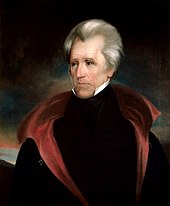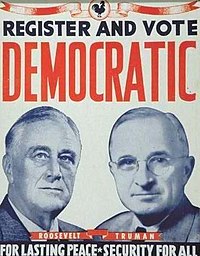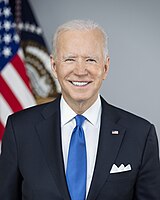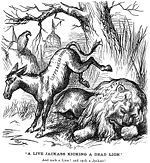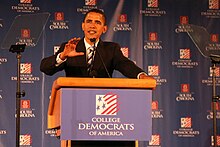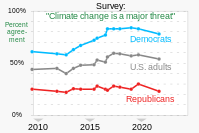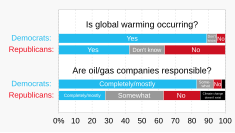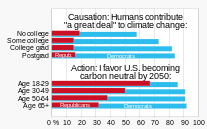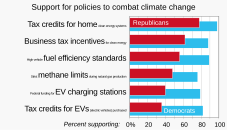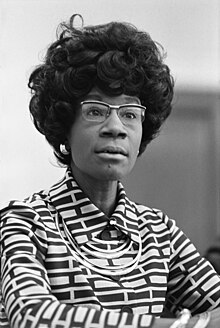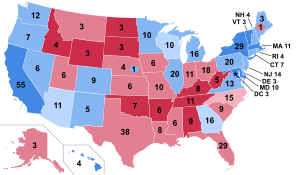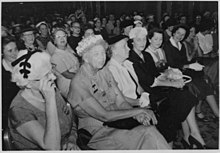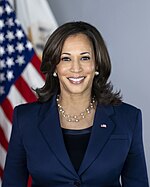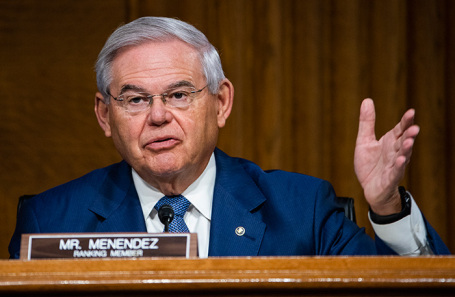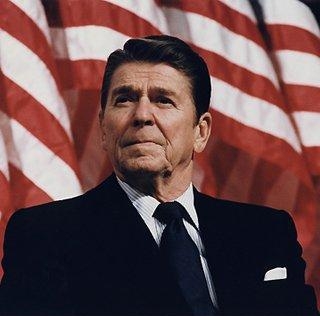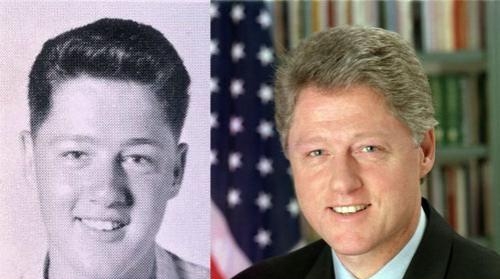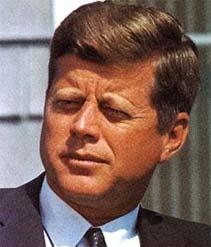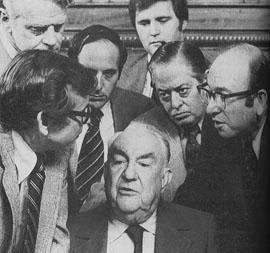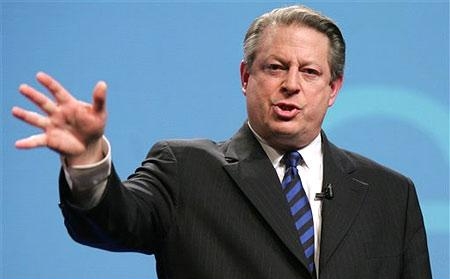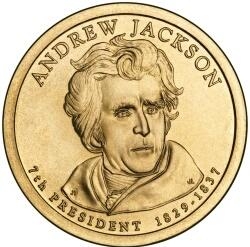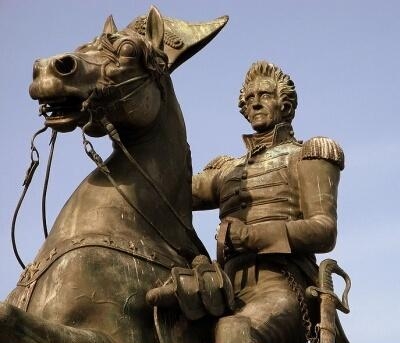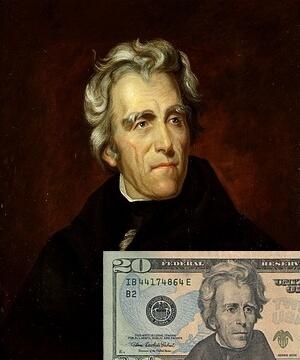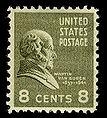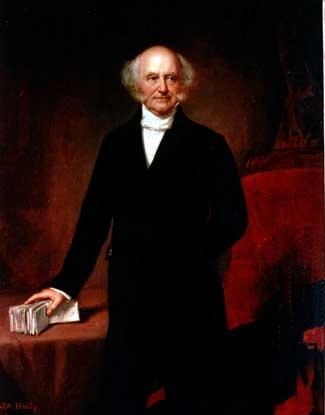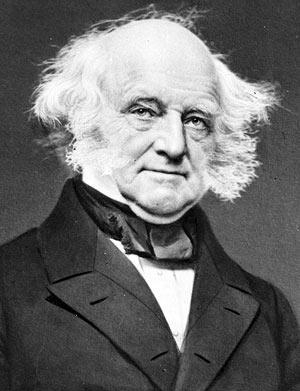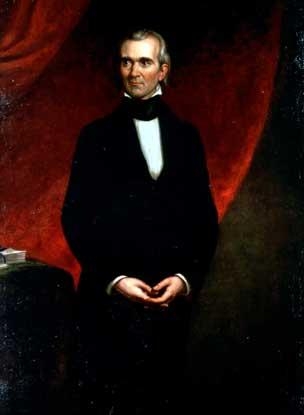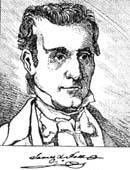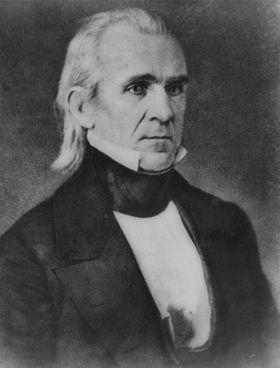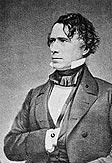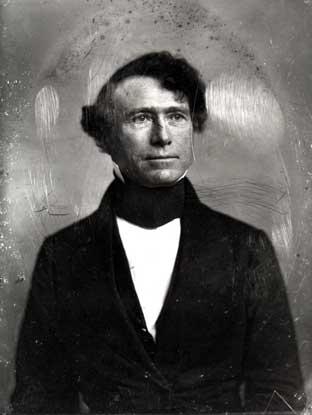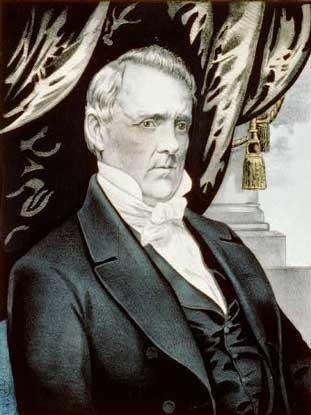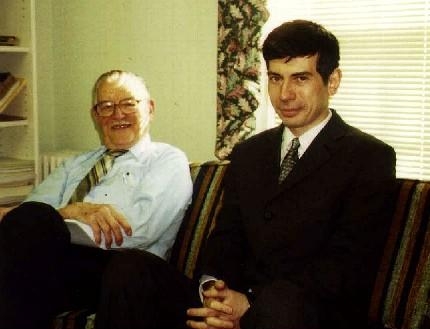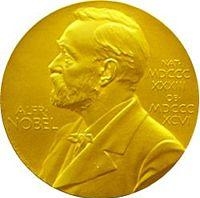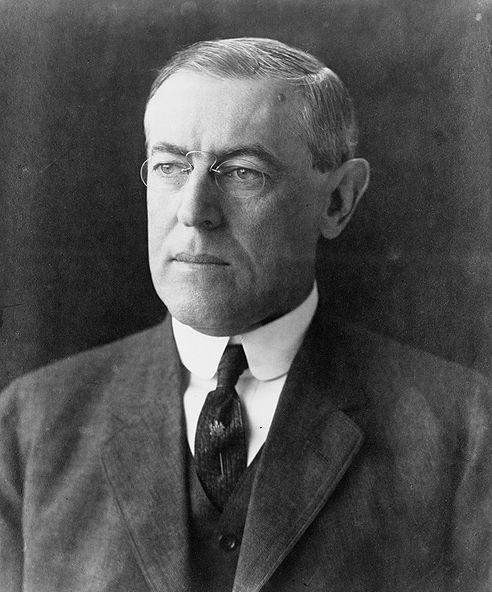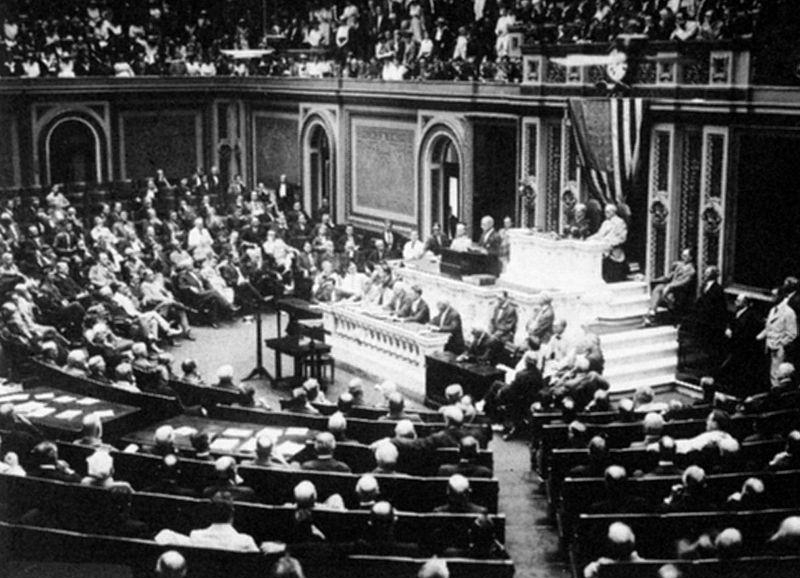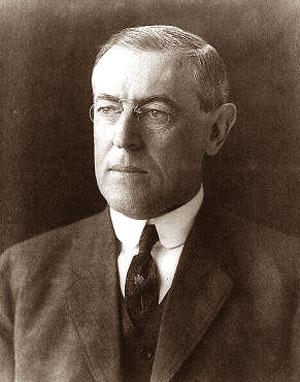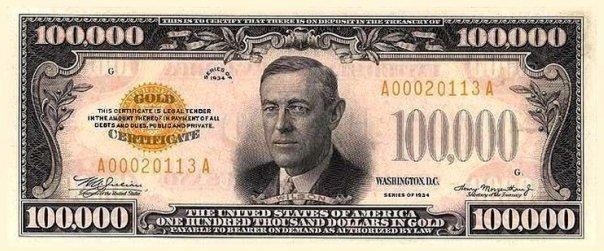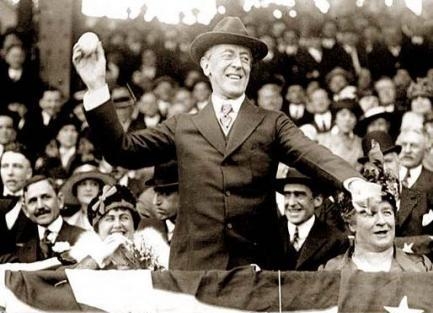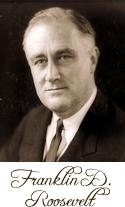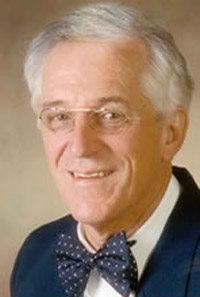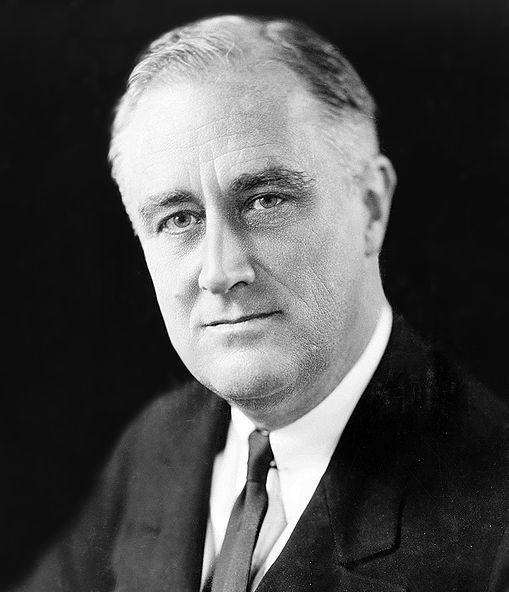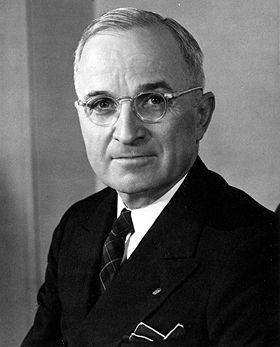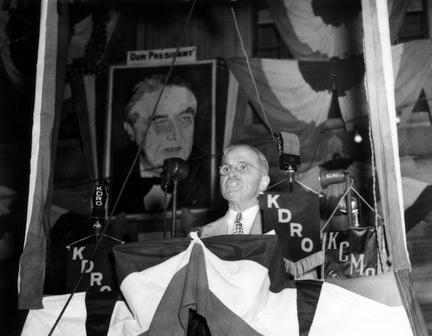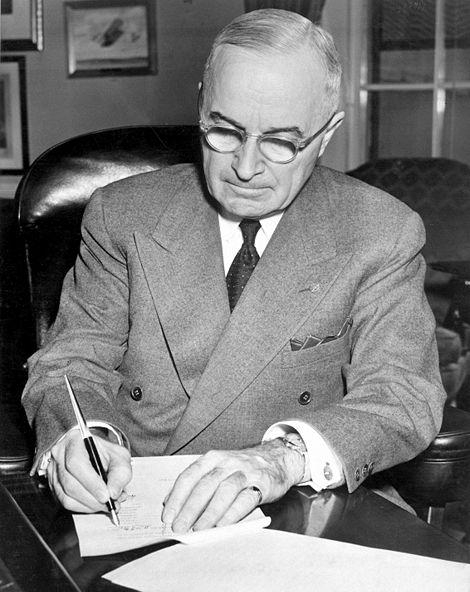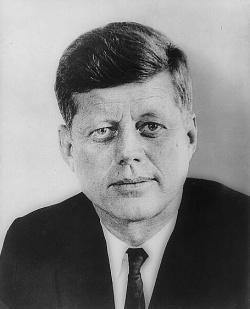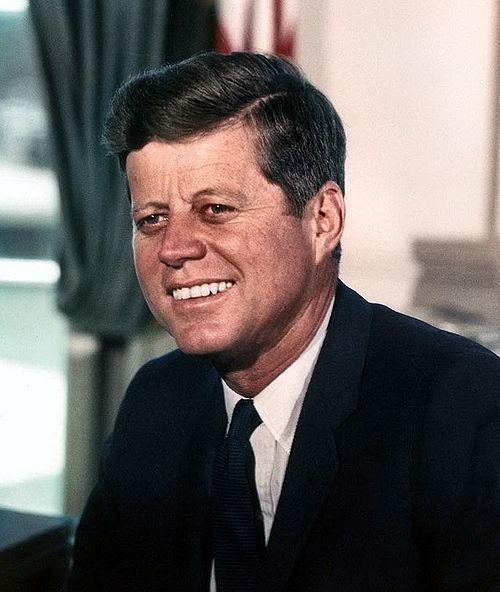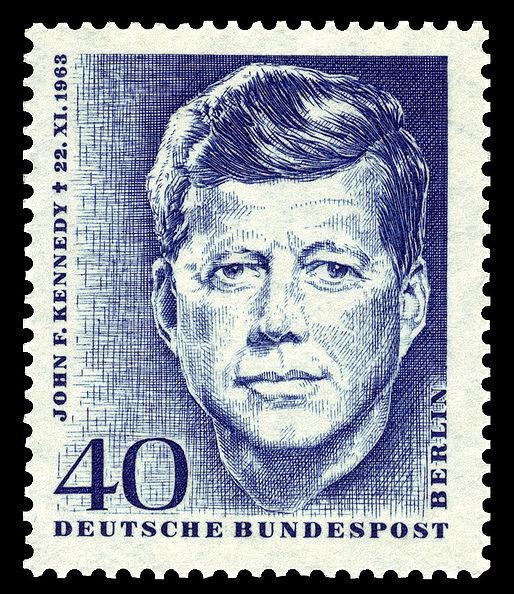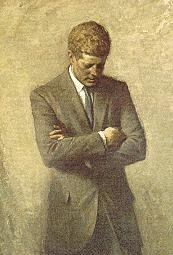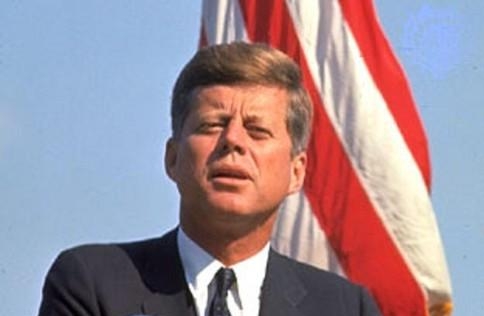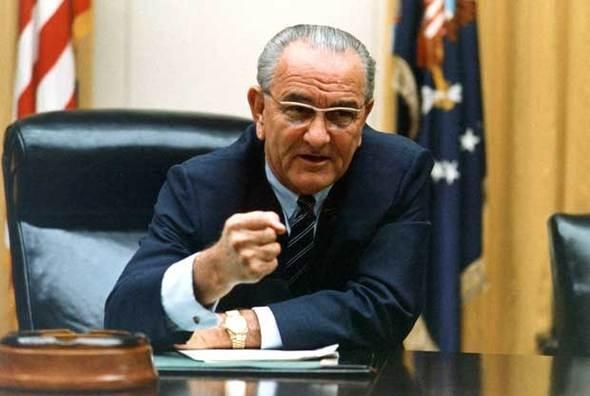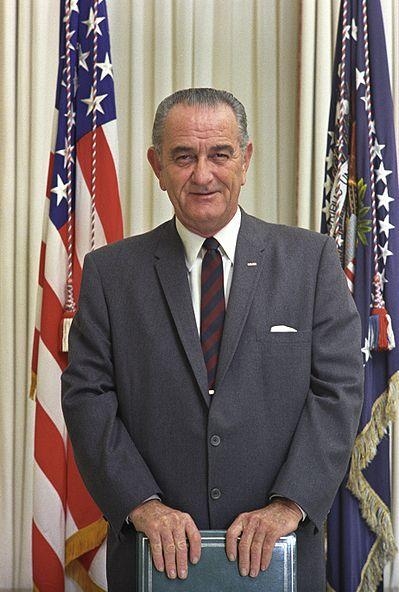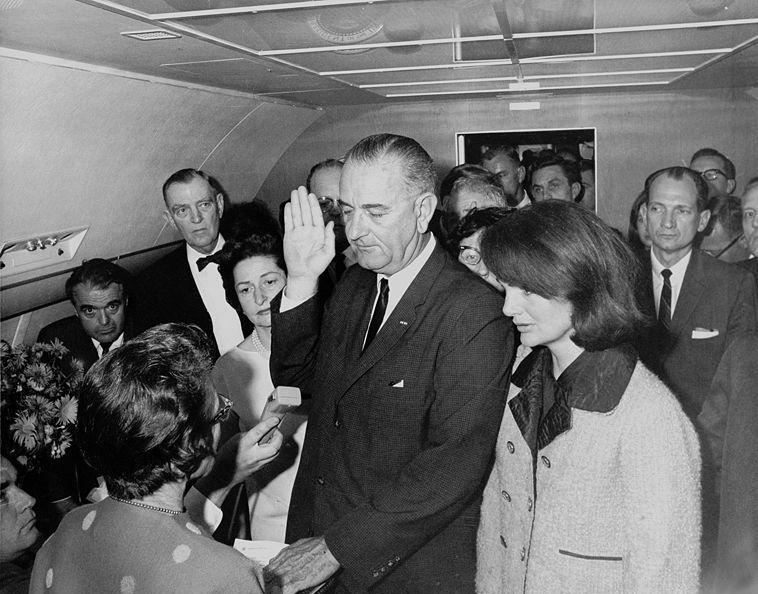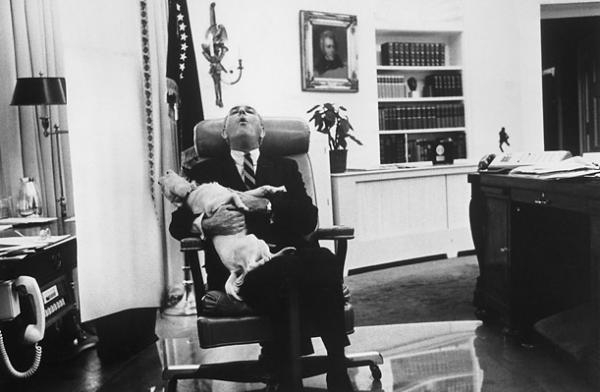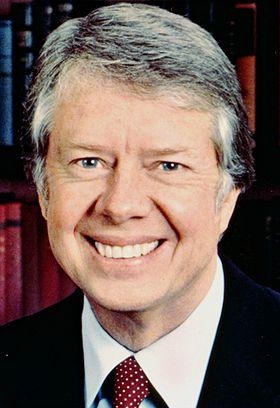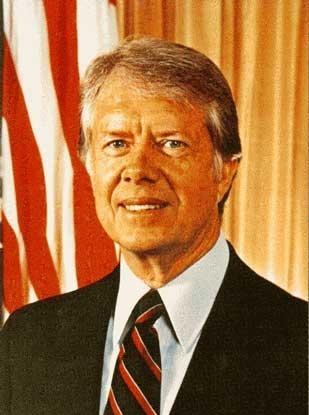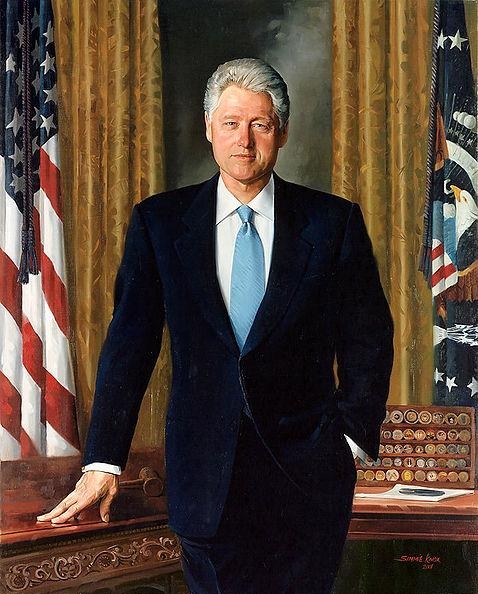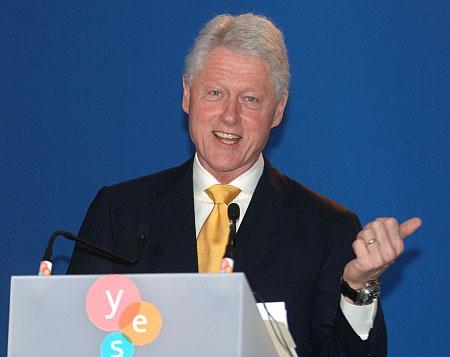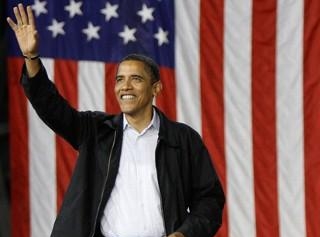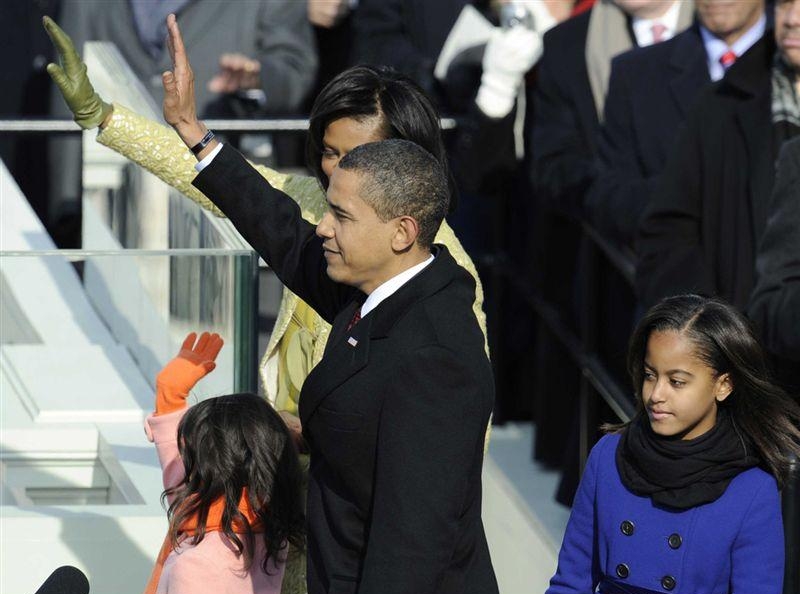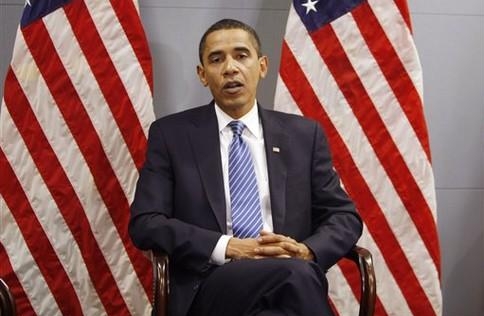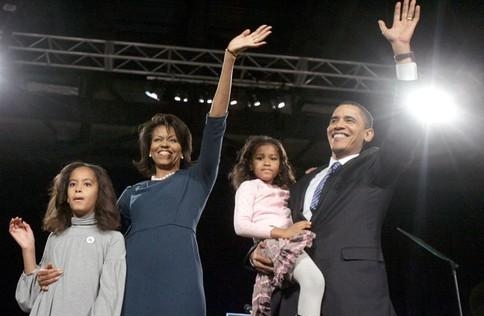|
Democratic Party |
|
|---|---|
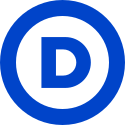 |
|
| Chairperson | Jaime Harrison |
| Governing body | Democratic National Committee[1][2] |
| Founders |
|
| Founded | January 8, 1828; 195 years ago[3] Baltimore, Maryland, U.S. |
| Preceded by | Democratic-Republican Party |
| Headquarters | 430 South Capitol St. SE, Washington, D.C., U.S. |
| Student wing |
|
| Youth wing | Young Democrats of America |
| Women’s wing | National Federation of Democratic Women |
| LGBT wing | Stonewall Democrats[4] |
| Overseas wing | Democrats Abroad |
| Membership (2022) | |
| Ideology |
|
| International affiliation | Alliance of Democrats[12] (2005–2012) |
| Colors | Blue |
| Seats in the Senate |
48 / 100[a] |
| Seats in the House of Representatives |
212 / 435 |
| State governorships |
24 / 50[b] |
| Seats in state upper chambers |
857 / 1,973 |
| Seats in state lower chambers |
2,425 / 5,413 |
| Territorial governorships |
4 / 5 |
| Seats in territorial upper chambers |
31 / 97 |
| Seats in territorial lower chambers |
9 / 91 |
| Election symbol | |
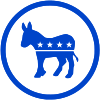 |
|
| Website | |
| democrats |
|
|
The Democratic Party is one of two major contemporary political parties in the United States. Founded in 1828, it was predominantly built by Martin Van Buren, who assembled politicians in every state behind war hero Andrew Jackson, making it arguably the world’s oldest active political party.[13][14][15] The party is a big tent of competing and often opposing viewpoints,[16][17] but modern American liberalism, a variant of social liberalism, is the party’s majority ideology.[6][18] The party also has notable centrist[19] and social democratic[11] factions. Its main political rival has been the Republican Party since the 1850s.
The historical predecessor of the Democratic Party is considered to be the left-wing Democratic-Republican Party.[20][21] Before 1860, the Democratic Party supported expansive presidential power,[22] the interests of slave states,[23] agrarianism,[24] and expansionism,[24] while opposing a national bank and high tariffs.[24] It split in 1860 over slavery and won the presidency only twice[c] between 1860 and 1910, although it won the popular vote a total of four times in that period. In the late 19th century, it continued to oppose high tariffs and had fierce internal debates on the gold standard. In the early 20th century, it supported progressive reforms and opposed imperialism, with Woodrow Wilson winning the White House in 1912 and 1916.
Since Franklin D. Roosevelt and his New Deal coalition after 1932, the Democratic Party has promoted a social liberal platform, including Social Security and unemployment insurance.[6][25][26] The New Deal attracted strong support for the party from recent European immigrants but diminished the party’s pro-business wing.[27][28][29] Following the Great Society era of progressive legislation under Lyndon B. Johnson, the core bases of the parties shifted, with the Southern states becoming more reliably Republican and the Northeastern states becoming more reliably Democratic.[30][31] The party’s labor union element has become smaller since the 1970s,[32][33] and as the American electorate shifted in a more conservative direction following Ronald Reagan’s presidency, the election of Bill Clinton marked a move for the party toward the Third Way, moving the party’s economic stance towards market-based economic policy.[34][35][36] Barack Obama oversaw the party’s passage of the Affordable Care Act in 2010.
The party’s philosophy of modern American liberalism blends civil liberty and social equality with support for a mixed capitalist economy.[37] On social issues, it advocates for abortion rights,[38] the legalization of marijuana,[39] stricter gun laws,[40] LGBT rights,[41] as well as criminal justice[42] and immigration reform.[43] Expansion of social programs, including enacting universal healthcare coverage,[44] equal opportunity, and consumer protection form the core of its economic agenda.[45][46][47] On abortion, trade, immigration, and foreign policy, the party has taken widely varying positions throughout its history.[48][49][50]
As of the 2020s, the party does best among Jewish and Black Americans, women, postgraduates, higher-income voters, sexual minorities, and individuals who live in urban areas. Democrats hold the presidency and a majority in the U.S. Senate, as well as 24 state governorships, 19 state legislatures, 17 state government trifectas, and the mayorships in the majority of the country’s major cities.[51] By registered members, the Democratic Party is the largest party in the United States and the third largest in the world. Including the incumbent, Joe Biden, 16 Democrats have served as president of the United States.[6]
History
Democratic Party officials often trace its origins to the Democratic-Republican Party, founded by Thomas Jefferson, James Madison and other influential opponents of the conservative Federalists in 1792.[21][52] That party died out before the modern Democratic Party was organized;[53] the Jeffersonian party also inspired the Whigs and modern Republicans.[54] Historians argue that the modern Democratic Party was first organized in the late 1820s with the election of Andrew Jackson.[15] It was predominately built by Martin Van Buren, who assembled a wide cadre of politicians in every state behind war hero Andrew Jackson of Tennessee, making it the world’s oldest active political party.[13][14][15]
Since the nomination of William Jennings Bryan in 1896, the party has generally positioned itself to the left of the Republican Party on economic issues. Democrats have been more liberal on civil rights since 1948, although conservative factions within the Democratic Party that opposed them persisted in the South until the 1960s. On foreign policy, both parties have changed positions several times.[55]
Background
The Democratic Party evolved from the Jeffersonian Republican or Democratic-Republican Party organized by Jefferson and Madison in opposition to the Federalist Party.[56] The Democratic-Republican Party favored republicanism; a weak federal government; states’ rights; agrarian interests (especially Southern planters); and strict adherence to the Constitution. The party opposed a national bank and Great Britain.[57] After the War of 1812, the Federalists virtually disappeared and the only national political party left was the Democratic-Republicans, which was prone to splinter along regional lines.[58] The era of one-party rule in the United States, known as the Era of Good Feelings, lasted from 1816 until 1828, when Andrew Jackson became president. Jackson and Martin Van Buren worked with allies in each state to form a new Democratic Party on a national basis. In the 1830s, the Whig Party coalesced into the main rival to the Democrats.
Before 1860, the Democratic Party supported expansive presidential power,[22] the interests of slave states,[23] agrarianism,[24] and expansionism,[24] while opposing a national bank and high tariffs.[24]
19th century
The Democratic-Republican Party split over the choice of a successor to President James Monroe.[59] The faction that supported many of the old Jeffersonian principles, led by Andrew Jackson and Martin Van Buren, became the modern Democratic Party.[60] Historian Mary Beth Norton explains the transformation in 1828:
Jacksonians believed the people’s will had finally prevailed. Through a lavishly financed coalition of state parties, political leaders, and newspaper editors, a popular movement had elected the president. The Democrats became the nation’s first well-organized national party … and tight party organization became the hallmark of nineteenth-century American politics.[61]
Behind the platforms issued by state and national parties stood a widely shared political outlook that characterized the Democrats:
The Democrats represented a wide range of views but shared a fundamental commitment to the Jeffersonian concept of an agrarian society. They viewed the central government as the enemy of individual liberty. The 1824 «corrupt bargain» had strengthened their suspicion of Washington politics. … Jacksonians feared the concentration of economic and political power. They believed that government intervention in the economy benefited special-interest groups and created corporate monopolies that favored the rich. They sought to restore the independence of the individual—the artisan and the ordinary farmer—by ending federal support of banks and corporations and restricting the use of paper currency, which they distrusted. Their definition of the proper role of government tended to be negative, and Jackson’s political power was largely expressed in negative acts. He exercised the veto more than all previous presidents combined. … Nor did Jackson share reformers’ humanitarian concerns. He had no sympathy for American Indians, initiating the removal of the Cherokees along the Trail of Tears.[62]
Opposing factions led by Henry Clay helped form the Whig Party. The Democratic Party had a small yet decisive advantage over the Whigs until the 1850s when the Whigs fell apart over the issue of slavery. In 1854, angry with the Kansas–Nebraska Act, anti-slavery Democrats left the party and joined Northern Whigs to form the Republican Party.[63][64]
The Democrats split over slavery, with Northern and Southern tickets in the election of 1860, in which the Republican Party gained ascendancy.[65] The radical pro-slavery Fire-Eaters led walkouts at the two conventions when the delegates would not adopt a resolution supporting the extension of slavery into territories even if the voters of those territories did not want it. These Southern Democrats nominated the pro-slavery incumbent vice president, John C. Breckinridge of Kentucky, for president and General Joseph Lane, of Oregon, for vice president. The Northern Democrats nominated Senator Stephen A. Douglas of Illinois for president and former Georgia Governor Herschel V. Johnson for vice president. This fracturing of the Democrats led to a Republican victory and Abraham Lincoln was elected the 16th president of the United States.[66]
As the American Civil War broke out, Northern Democrats were divided into War Democrats and Peace Democrats. The Confederate States of America deliberately avoided organized political parties. Most War Democrats rallied to Republican President Abraham Lincoln and the Republicans’ National Union Party in the election of 1864, which featured Andrew Johnson on the Union ticket to attract fellow Democrats. Johnson replaced Lincoln in 1865, but he stayed independent of both parties.[67]
The Democrats benefited from white Southerners’ resentment of Reconstruction after the war and consequent hostility to the Republican Party. After Redeemers ended Reconstruction in the 1870s and following the often extremely violent disenfranchisement of African Americans led by such white supremacist Democratic politicians as Benjamin Tillman of South Carolina in the 1880s and 1890s, the South, voting Democratic, became known as the «Solid South». Although Republicans won all but two presidential elections, the Democrats remained competitive. The party was dominated by pro-business Bourbon Democrats led by Samuel J. Tilden and Grover Cleveland, who represented mercantile, banking, and railroad interests; opposed imperialism and overseas expansion; fought for the gold standard; opposed bimetallism; and crusaded against corruption, high taxes and tariffs. Cleveland was elected to non-consecutive presidential terms in 1884 and 1892.[68]
20th century
Early 20th century
Agrarian Democrats demanding free silver, drawing on Populist ideas, overthrew the Bourbon Democrats in 1896 and nominated William Jennings Bryan for the presidency (a nomination repeated by Democrats in 1900 and 1908). Bryan waged a vigorous campaign attacking Eastern moneyed interests, but he lost to Republican William McKinley.[69]
The Democrats took control of the House in 1910, and Woodrow Wilson won election as president in 1912 (when the Republicans split) and 1916. Wilson effectively led Congress to put to rest the issues of tariffs, money, and antitrust, which had dominated politics for 40 years, with new progressive laws. He failed to secure Senate passage of the Versailles Treaty (ending the war with Germany and joining the League of Nations).[70] The weak party was deeply divided by issues such as the KKK and prohibition in the 1920s. However, it did organize new ethnic voters in Northern cities.[71]
Rise of New Deal Coalition (1930s–1960s)
The Great Depression in 1929 that began under Republican President Herbert Hoover and the Republican Congress set the stage for a more liberal government as the Democrats controlled the House of Representatives nearly uninterrupted from 1930 until 1994, the Senate for 44 of 48 years from 1930, and won most presidential elections until 1968. Franklin D. Roosevelt, elected to the presidency in 1932, came forth with federal government programs called the New Deal. New Deal liberalism meant the regulation of business (especially finance and banking) and the promotion of labor unions as well as federal spending to aid the unemployed, help distressed farmers and undertake large-scale public works projects. It marked the start of the American welfare state.[72] The opponents, who stressed opposition to unions, support for business and low taxes, started calling themselves «conservatives».[73]
Until the 1980s, the Democratic Party was a coalition of two parties divided by the Mason–Dixon line: liberal Democrats in the North and culturally conservative voters in the South, who though benefitting from many of the New Deal public works projects, opposed increasing civil rights initiatives advocated by northeastern liberals. The polarization grew stronger after Roosevelt died. Southern Democrats formed a key part of the bipartisan conservative coalition in an alliance with most of the Midwestern Republicans. The economically activist philosophy of Franklin D. Roosevelt, which has strongly influenced American liberalism, shaped much of the party’s economic agenda after 1932.[74] From the 1930s to the mid-1960s, the liberal New Deal coalition usually controlled the presidency while the conservative coalition usually controlled Congress.[75]
1960s–1980s and the Collapse of the New Deal Coalition
Issues facing parties and the United States after World War II included the Cold War and the civil rights movement. Republicans attracted conservatives and, after the 1960s, white Southerners from the Democratic coalition with their use of the Southern strategy and resistance to New Deal and Great Society liberalism. Until the 1950s, African Americans had traditionally supported the Republican Party because of its anti-slavery civil rights policies. Following the passage of the Civil Rights Act of 1964 and Voting Rights Act of 1965, the Southern states became more reliably Republican in presidential politics, while Northeastern states became more reliably Democratic.[76][77][78][79][80][81][82][83] Studies show that Southern whites, which were a core constituency in the Democratic Party, shifted to the Republican Party due to racial backlash.[82][84][85]
The election of President John F. Kennedy from Massachusetts in 1960 partially reflected this shift. In the campaign, Kennedy attracted a new generation of younger voters. In his agenda dubbed the New Frontier, Kennedy introduced a host of social programs and public works projects, along with enhanced support of the space program, proposing a crewed spacecraft trip to the moon by the end of the decade. He pushed for civil rights initiatives and proposed the Civil Rights Act of 1964, but with his assassination in November 1963, he was not able to see its passage.[86]
Kennedy’s successor Lyndon B. Johnson was able to persuade the largely conservative Congress to pass the Civil Rights Act of 1964 and with a more progressive Congress in 1965 passed much of the Great Society, including Medicare, which consisted of an array of social programs designed to help the poor, sick, and elderly. Kennedy and Johnson’s advocacy of civil rights further solidified black support for the Democrats but had the effect of alienating Southern whites who would eventually gravitate toward the Republican Party, particularly after the election of Ronald Reagan to the presidency in 1980.
The United States’ involvement in the Vietnam War in the 1960s was another divisive issue that further fractured the fault lines of the Democrats’ coalition. After the Gulf of Tonkin Resolution in 1964, President Johnson committed a large contingency of combat troops to Vietnam, but the escalation failed to drive the Viet Cong from South Vietnam, resulting in an increasing quagmire, which by 1968 had become the subject of widespread anti-war protests in the United States and elsewhere. With increasing casualties and nightly news reports bringing home troubling images from Vietnam, the costly military engagement became increasingly unpopular, alienating many of the kinds of young voters that the Democrats had attracted in the early 1960s. The protests that year along with assassinations of Martin Luther King Jr. and Democratic presidential candidate Senator Robert F. Kennedy (younger brother of John F. Kennedy) climaxed in turbulence at the hotly-contested Democratic National Convention that summer in Chicago (which amongst the ensuing turmoil inside and outside of the convention hall nominated Vice President Hubert Humphrey) in a series of events that proved to mark a significant turning point in the decline of the Democratic Party’s broad coalition.[87]
Republican presidential nominee Richard Nixon was able to capitalize on the confusion of the Democrats that year, and won the 1968 election to become the 37th president. He won re-election in a landslide in 1972 against Democratic nominee George McGovern, who like Robert F. Kennedy, reached out to the younger anti-war and counterculture voters, but unlike Kennedy, was not able to appeal to the party’s more traditional white working-class constituencies. During Nixon’s second term, his presidency was rocked by the Watergate scandal, which forced him to resign in 1974. He was succeeded by vice president Gerald Ford, who served a brief tenure.
Watergate offered the Democrats an opportunity to recoup, and their nominee Jimmy Carter won the 1976 presidential election. With the initial support of evangelical Christian voters in the South, Carter was temporarily able to reunite the disparate factions within the party, but inflation and the Iran Hostage Crisis of 1979–1980 took their toll, resulting in a landslide victory for Republican presidential nominee Ronald Reagan in 1980, which shifted the political landscape in favor of the Republicans for years to come.[88][89]
1990s and Third Way centrism
With the ascendancy of the Republicans under Ronald Reagan, the Democrats searched for ways to respond yet were unable to succeed by running traditional candidates, such as former vice president and Democratic presidential nominee Walter Mondale and Massachusetts Governor Michael Dukakis, who lost to Reagan and George H.W. Bush in the 1984 and 1988 presidential elections, respectively. Many Democrats attached their hopes to the future star of Gary Hart, who had challenged Mondale in the 1984 primaries running on a theme of «New Ideas»; and in the subsequent 1988 primaries became the de facto front-runner and virtual «shoo-in» for the Democratic presidential nomination before a sex scandal ended his campaign. The party nevertheless began to seek out a younger generation of leaders, who like Hart had been inspired by the pragmatic idealism of John F. Kennedy.[90]
Arkansas governor Bill Clinton was one such figure, who was elected president in 1992 as the Democratic nominee. The Democratic Leadership Council was a campaign organization connected to Clinton that advocated a realignment and triangulation under the re-branded «New Democrat» label.[91][34][35] The party adopted a synthesis of neoliberal economic policies with cultural liberalism, with the voter base after Reagan having shifted considerably to the right.[91] In an effort to appeal both to liberals and to fiscal conservatives, Democrats began to advocate for a balanced budget and market economy tempered by government intervention (mixed economy), along with a continued emphasis on social justice and affirmative action. The economic policy adopted by the Democratic Party, including the former Clinton administration, has been referred to as «Third Way».
The Democrats lost control of Congress in the election of 1994 to the Republican Party. Re-elected in 1996, Clinton was the first Democratic president since Franklin D. Roosevelt to be elected to two terms.[92] Al Gore won the popular vote, but after a controversial election dispute over a Florida recount settled by the U.S. Supreme Court (which ruled 5–4 in favor of Bush) he lost the 2000 United States Presidential Election to Republican opponent George W. Bush in the Electoral College.[93]
21st century
2000s
Barack Obama (left) and Joe Biden (right), 44th and 46th presidents of the United States (2009–2017, 2021–present)
In the wake of the 2001 terrorist attacks on the World Trade Center and the Pentagon as well as the growing concern over global warming, some of the party’s key issues in the early 21st century have included combating terrorism while preserving human rights, expanding access to health care, labor rights, and environmental protection. Democrats regained majority control of both the House and the Senate in the 2006 elections. Barack Obama won the Democratic Party’s nomination and was elected as the first African American president in 2008. Under the Obama presidency, the party moved forward reforms including an economic stimulus package, the Dodd–Frank financial reform act, and the Affordable Care Act.[94]
2010s
In the 2010 midterm elections, the Democratic Party lost control of the House and lost its majority in state legislatures and state governorships. In the 2012 elections, President Obama was re-elected, but the party remained in the minority in the House of Representatives and lost control of the Senate in the 2014 midterm elections. After the 2016 election of Donald Trump, who lost the popular vote, the Democratic Party transitioned into the role of an opposition party and held neither the presidency nor Congress for two years. However, the Democratic Party won back a majority in the House in the 2018 midterm elections under the leadership of Nancy Pelosi.
Democrats were extremely critical of President Trump, particularly his policies on immigration, healthcare, and abortion, as well as his response to the COVID-19 pandemic.[95][96][97] Before the pandemic, Democrats in the House of Representatives impeached Trump for the first time, although Trump was acquitted in the Republican-controlled Senate.[98]
2020s
Since the early 2010s, the party has shifted significantly to the left on social, cultural, and religious issues and attracted support from college-educated white Americans.[99][100]
In November 2020, Democrat Joe Biden won the 2020 presidential election.[101] He began his term with extremely narrow Democratic majorities in the U.S. House and Senate.[102][103] The Inflation Reduction Act of 2022 was negotiated by Biden, Majority Leader Chuck Schumer, Joe Manchin, Kyrsten Sinema and other Democrats and is the largest allocation of funds for addressing climate change to date.[104][105]
The 2022 Russian invasion of Ukraine was politically and economically opposed by the Biden Administration, who promptly began an increased arming of Ukraine, with full support from Congressional Democrats and an overwhelming majority of Republicans.[111][112]
In 2022, Biden appointed Ketanji Brown Jackson, the first Black woman on the Supreme Court. However, she was replacing liberal justice Stephen Breyer, so she did not alter the court’s 6-3 split between conservatives (the majority) and liberals.[113][114][115][116] After Dobbs v. Jackson (decided June 24, 2022), which led to abortion bans in much of the country, the Democratic Party rallied behind abortion rights.[38]
In the 2022 midterm elections Democrats dramatically outperformed historical trends, and a widely anticipated red wave did not materialize.[117][118] Democrats only narrowly lost their majority in the U.S. House, and gained a seat in the U.S. Senate,[119][120][121] along with several gains at the state level, including acquiring «trifectas» (control of both legislative houses and governor’s seat) in several states.[106][107][108][109][110]
Name and symbols
«A Live Jackass Kicking a Dead Lion» by Thomas Nast, Harper’s Weekly, January 19, 1870
The donkey party logo remains a well-known symbol for the Democratic Party despite not being the official logo of the party.
The Democratic-Republican Party splintered in 1824 into the short-lived National Republican Party and the Jacksonian movement which in 1828 became the Democratic Party. Under the Jacksonian era, the term «The Democracy» was in use by the party, but the name «Democratic Party» was eventually settled upon[122] and became the official name in 1844.[123] Members of the party are called «Democrats» or «Dems».
The term «Democrat Party» has also been in local use but has usually been used by opponents since 1952 as a disparaging term. However, the use of the term «Democrat» as an adjective is not generally considered offensive in other contexts, such as «Democrat President», «Democrat Voters», «Democrat Senators», «Democrat Candidate», «Democrat Governor», etc. Nonetheless, its usage is still not as common as «Democratic» today.
The most common mascot symbol for the party has been the donkey, or jackass.[124] Andrew Jackson’s enemies twisted his name to «jackass» as a term of ridicule regarding a stupid and stubborn animal. However, the Democrats liked the common-man implications and picked it up too, therefore the image persisted and evolved.[125] Its most lasting impression came from the cartoons of Thomas Nast from 1870 in Harper’s Weekly. Cartoonists followed Nast and used the donkey to represent the Democrats and the elephant to represent the Republicans.
In the early 20th century, the traditional symbol of the Democratic Party in Indiana, Kentucky, Oklahoma and Ohio was the rooster, as opposed to the Republican eagle. This symbol still appears on Oklahoma, Kentucky, Indiana, and West Virginia ballots.[126] The rooster was adopted as the official symbol of the national Democratic Party.[127] In New York, the Democratic ballot symbol is a five-pointed star.[128]
Although both major political parties (and many minor ones) use the traditional American colors of red, white, and blue in their marketing and representations, since election night 2000 blue has become the identifying color for the Democratic Party while red has become the identifying color for the Republican Party. That night, for the first time all major broadcast television networks used the same color scheme for the electoral map: blue states for Al Gore (Democratic nominee) and red states for George W. Bush (Republican nominee). Since then, the color blue has been widely used by the media to represent the party. This is contrary to common practice outside of the United States where blue is the traditional color of the right and red the color of the left.[129] For example, in Canada red represents the Liberals while blue represents the Conservatives. In the United Kingdom, red denotes the Labour Party and blue symbolizes the Conservative Party. Any use of the color blue to denote the Democratic Party prior to 2000 would be historically inaccurate and misleading. Since 2000, blue has also been used both by party supporters for promotional efforts—ActBlue, BuyBlue and BlueFund as examples—and by the party itself in 2006 both for its «Red to Blue Program», created to support Democratic candidates running against Republican incumbents in the midterm elections that year and on its official website.
In September 2010, the Democratic Party unveiled its new logo, which featured a blue D inside a blue circle. It was the party’s first official logo; the donkey logo had been only semi-official.
Jefferson-Jackson Day is the annual fundraising event (dinner) held by Democratic Party organizations across the United States.[130] It is named after Presidents Thomas Jefferson and Andrew Jackson, whom the party regards as its distinguished early leaders.
The song «Happy Days Are Here Again» is the unofficial song of the Democratic Party. It was used prominently when Franklin D. Roosevelt was nominated for president at the 1932 Democratic National Convention and remains a sentimental favorite for Democrats today. For example, Paul Shaffer played the theme on the Late Show with David Letterman after the Democrats won Congress in 2006. «Don’t Stop» by Fleetwood Mac was adopted by Bill Clinton’s presidential campaign in 1992 and has endured as a popular Democratic song. The emotionally similar song «Beautiful Day» by the band U2 has also become a favorite theme song for Democratic candidates. John Kerry used the song during his 2004 presidential campaign and several Democratic Congressional candidates used it as a celebratory tune in 2006.[131][132]
As a traditional anthem for its presidential nominating convention, Aaron Copland’s «Fanfare for the Common Man» is traditionally performed at the beginning of the Democratic National Convention.
Current structure
National committee
The Democratic National Committee (DNC) is responsible for promoting Democratic campaign activities. While the DNC is responsible for overseeing the process of writing the Democratic Platform, the DNC is more focused on campaign and organizational strategy than public policy. In presidential elections, it supervises the Democratic National Convention. The national convention is subject to the charter of the party and the ultimate authority within the Democratic Party when it is in session, with the DNC running the party’s organization at other times. The DNC is currently chaired by Jaime Harrison.[133]
State parties
Each state also has a state committee, made up of elected committee members as well as ex officio committee members (usually elected officials and representatives of major constituencies), which in turn elects a chair. County, town, city, and ward committees generally are composed of individuals elected at the local level. State and local committees often coordinate campaign activities within their jurisdiction, oversee local conventions, and in some cases primaries or caucuses, and may have a role in nominating candidates for elected office under state law. Rarely do they have much funding, but in 2005 DNC Chairman Dean began a program (called the «50 State Strategy») of using DNC national funds to assist all state parties and pay for full-time professional staffers.[134]
Major party committees and groups
The Democratic Congressional Campaign Committee (DCCC) assists party candidates in House races and its current chair (selected by the party caucus) is Representative Suzan DelBene of Washington. Similarly, the Democratic Senatorial Campaign Committee (DSCC), chaired by Senator Gary Peters of Michigan, raises funds for Senate races. The Democratic Legislative Campaign Committee (DLCC), chaired by Majority Leader of the New York State Senate Andrea Stewart-Cousins, is a smaller organization that focuses on state legislative races. The Democratic Governors Association (DGA) is an organization supporting the candidacies of Democratic gubernatorial nominees and incumbents. Likewise, the mayors of the largest cities and urban centers convene as the National Conference of Democratic Mayors.[135]
The DNC sponsors the College Democrats of America (CDA), a student-outreach organization with the goal of training and engaging a new generation of Democratic activists. Democrats Abroad is the organization for Americans living outside the United States. They work to advance the party’s goals and encourage Americans living abroad to support the Democrats. The Young Democrats of America (YDA) and the High School Democrats of America (HSDA) are young adult and youth-led organizations respectively that attempt to draw in and mobilize young people for Democratic candidates but operates outside of the DNC.
Political positions
- Economic policy
- Expand Social Security and safety-net programs.[136]
- Increase the capital gains tax rate to 39.6% for taxpayers with annual income above $1 million.[137]
- Cut taxes for the working and middle classes as well as small businesses.[138]
- Change tax rules to discourage shipping jobs overseas.[138]
- Increase federal and state minimum wages.[139]
- Modernize and expand access to public education and provide universal preschool education.[140]
- Support the goal of universal health care through a public health insurance option or expanding Medicare/Medicaid.[141]
- Increase investments in infrastructure development[142] as well as scientific and technological research.[143]
- Offer tax credits to make clean energy more accessible for consumers and increase domestic production of clean energy.[144]
- Uphold labor protections and the right to unionize.[145][146]
- Reform the student loan system and allow for refinancing student loans.[147]
- Make college more affordable.[139][148]
- Mandate equal pay for equal work regardless of gender, race, or ethnicity.[149]
- Social policy
- Decriminalize or legalize marijuana.[139]
- Uphold network neutrality.[150]
- Implement campaign finance reform.[151]
- Uphold voting rights and easy access to voting.[152][153]
- Support same-sex marriage and ban conversion therapy.[139]
- Allow legal access to abortions and women’s reproductive health care.[142]
- Reform the immigration system and allow for a pathway to citizenship.[142]
- Expand background checks and reduce access to assault weapons to address gun violence.[142]
- Improve privacy laws and curtail government surveillance.[142]
- Oppose torture.[154][155]
- Abolish capital punishment.[156]
- Recognize and defend Internet freedom worldwide.[138]
Economic issues
Equal economic opportunity, a social safety net, and strong labor unions have historically been at the heart of Democratic economic policy.[37] The Democratic Party’s economic policy positions, as measured by votes in Congress, tend to align with those of middle class.[157][158][159][160][161] Democrats support a progressive tax system, higher minimum wages, Social Security, universal health care, public education, and subsidized housing.[37] They also support infrastructure development and clean energy investments to achieve economic development and job creation.[162] Since the 1990s, the party has at times supported centrist economic reforms that cut the size of government and reduced market regulations.[163] The party has generally rejected both laissez-faire economics and market socialism, instead favoring Keynesian economics within a capitalist market-based system.[164]
Fiscal policy
Democrats support a more progressive tax structure to provide more services and reduce economic inequality by making sure that the wealthiest Americans pay more in taxes.[165]
Democrats and Republicans traditionally take differing stances on eradicating poverty. Brady said «Our poverty level is the direct consequence of our weak social policies, which are a direct consequence of weak political actors».[166]
They oppose the cutting of social services, such as Social Security, Medicare, and Medicaid,[167] believing it to be harmful to efficiency and social justice. Democrats believe the benefits of social services in monetary and non-monetary terms are a more productive labor force and cultured population and believe that the benefits of this are greater than any benefits that could be derived from lower taxes, especially on top earners, or cuts to social services. Furthermore, Democrats see social services as essential toward providing positive freedom, freedom derived from economic opportunity. The Democratic-led House of Representatives reinstated the PAYGO (pay-as-you-go) budget rule at the start of the 110th Congress.[168]
Minimum wage
The Democratic Party favors raising the minimum wage. The Fair Minimum Wage Act of 2007 was an early component of the Democrats’ agenda during the 110th Congress. In 2006, the Democrats supported six state-ballot initiatives to increase the minimum wage and all six initiatives passed.[169]
In 2017, Senate Democrats introduced the Raise the Wage Act which would raise the minimum wage to $15 an hour by 2024.[170] In 2021, Democratic president Joe Biden proposed increasing the minimum wage to $15 by 2025.[171] In many states controlled by Democrats, the state minimum wage has been increased to a rate above the federal minimum wage.[172]
Health care
Democrats call for «affordable and quality health care» and favor moving toward universal health care in a variety of forms to address rising healthcare costs. Progressive Democrats politicians favor a single-payer program or Medicare for All, while liberals prefer creating a public health insurance option.[173]
The Patient Protection and Affordable Care Act, signed into law by President Barack Obama on March 23, 2010, has been one of the most significant pushes for universal health care. As of December 2019, more than 20 million Americans have gained health insurance under the Affordable Care Act.[174]
Education
Democrats favor improving public education by raising school standards and reforming the Head Start program. They also support universal preschool, expanding access to primary education, including through charter schools, and are generally opposed to school voucher programs. They call for addressing student loan debt and reforms to reduce college tuition.[175] Other proposals have included tuition-free public universities and reform of standardized testing. Democrats have the long-term aim of having publicly funded college education with low tuition fees (like in much of Europe and Canada), which would be available to every eligible American student. Alternatively, they encourage expanding access to post-secondary education by increasing state funding for student financial aid such as Pell Grants and college tuition tax deductions.[176]
Environment
Democrats and Republicans have diverged on the seriousness of the threat posed by climate change, with Democrats’ assessment rising significantly in the mid-2010s.[177]
The sharp divide over the existence of and responsibility for global warming and climate change falls largely along political lines. Overall, 60% of those surveyed said oil and gas companies were «completely or mostly responsible» for climate change.[178]
Opinion about human causation of climate change increased substantially with education among Democrats, but not among Republicans.[179] Conversely, opinions favoring becoming carbon neutral declined substantially with age among Republicans, but not among Democrats.[179]
A broad range of policies to reduce greenhouse gas emissions has been proposed. Democrats’ support for such policies consistently exceeds that of Republicans.[180]
Democrats believe that the government should protect the environment and have a history of environmentalism. In more recent years, this stance has emphasized renewable energy generation as the basis for an improved economy, greater national security, and general environmental benefits.[181] The Democratic Party is substantially more likely than the Republican Party to support environmental regulation and policies that are supportive of renewable energy.[182][183]
The Democratic Party also favors expansion of conservation lands and encourages open space and rail travel to relieve highway and airport congestion and improve air quality and the economy as it «believe[s] that communities, environmental interests, and the government should work together to protect resources while ensuring the vitality of local economies. Once Americans were led to believe they had to make a choice between the economy and the environment. They now know this is a false choice».[184]
The foremost environmental concern of the Democratic Party is climate change. Democrats, most notably former Vice President Al Gore, have pressed for stern regulation of greenhouse gases. On October 15, 2007, Gore won the Nobel Peace Prize for his efforts to build greater knowledge about man-made climate change and laying the foundations for the measures needed to counteract it.[185]
Renewable energy and fossil fuels
Democrats have supported increased domestic renewable energy development, including wind and solar power farms, in an effort to reduce carbon pollution. The party’s platform calls for an «all of the above» energy policy including clean energy, natural gas and domestic oil, with the desire of becoming energy independent.[169] The party has supported higher taxes on oil companies and increased regulations on coal power plants, favoring a policy of reducing long-term reliance on fossil fuels.[186][187] Additionally, the party supports stricter fuel emissions standards to prevent air pollution.
Trade agreements
Like the Republican Party, the Democratic Party has taken widely varying views on international trade throughout its history.
The Democrats dominated the Second Party System and set low tariffs designed to pay for the government but not protect industry. Their opponents the Whigs wanted high protective tariffs but usually were outvoted in Congress. Tariffs soon became a major political issue as the Whigs (1832–1852) and (after 1854) the Republicans wanted to protect their mostly northern industries and constituents by voting for higher tariffs and the Southern Democrats, which had very little industry but imported many goods voted for lower tariffs. After the Second Party System ended in 1854 the Democrats lost control and the new Republican Party had its opportunity to raise rates.[188]
During the Third Party System, Democratic president Grover Cleveland made low tariffs the centerpiece of Democratic Party policies, arguing that high tariffs were an unnecessary and unfair tax on consumers. The South and West generally supported low tariffs, while the industrial North high tariffs.[189] During the Fourth Party System, Democratic president Woodrow Wilson made a drastic lowering of tariff rates a major priority for his presidency. The 1913 Underwood Tariff cut rates, and the new revenues generated by the federal income tax made tariffs much less important in terms of economic impact and political rhetoric.[190]
In the 1990s, the Clinton administration and a number of prominent Democrats pushed through a number of agreements such as the North American Free Trade Agreement (NAFTA). Since then, the party’s shift away from free trade became evident in the Central American Free Trade Agreement (CAFTA) vote, with 15 House Democrats voting for the agreement and 187 voting against.[191][192][193] Many Democrats today support fair trade policies when it comes to the issue of international trade agreements, such as the USMCA, the successor to NAFTA.[194]
The modern Democratic Party emphasizes social equality and equal opportunity. Democrats support voting rights and minority rights, including LGBT rights. Democratic president Lyndon B. Johnson signed the Civil Rights Act of 1964, which outlawed racial segregation. Carmines and Stimson wrote «the Democratic Party appropriated racial liberalism and assumed federal responsibility for ending racial discrimination.»[195][196][197]
Ideological social elements in the party include cultural liberalism, civil libertarianism, and feminism. Some Democratic social policies are immigration reform, electoral reform, and women’s reproductive rights.
Equal opportunity
The Democratic Party supports equal opportunity for all Americans regardless of sex, age, race, ethnicity, sexual orientation, gender identity, religion, creed, or national origin. The Democratic Party has broad appeal across most socioeconomic and ethnic demographics, as seen in recent exit polls.[198] Many Democrats support affirmative action programs to further this goal. Democrats also strongly support the Americans with Disabilities Act to prohibit discrimination against people based on physical or mental disability. As such, the Democrats pushed as well the ADA Amendments Act of 2008, a disability rights expansion that became law.[199]
Voting rights
The party is very supportive of improving voting rights as well as election accuracy and accessibility.[200] They support extensions of voting time, including making election day a holiday. They support reforming the electoral system to eliminate gerrymandering, abolishing the electoral college, as well as passing comprehensive campaign finance reform.[151]
Abortion and reproductive rights
The Democratic position on abortion has changed significantly over time.[49][50] During the late 1960s and early 1970s, Republicans generally favored legalized abortion more than Democrats,[201] although significant heterogeneity could be found within both parties.[202] During this time, opposition to abortion tended to be concentrated among the political left in the United States. Liberal Protestants and Catholics — both of which tended to vote for the Democratic Party — opposed while most conservative Protestants supported legal access to abortion services.[49]
The present platform states that all women should have access to birth control and supports public funding of contraception for poor women. In its national platforms from 1992 to 2004, the Democratic Party has called for abortion to be «safe, legal and rare»—namely, keeping it legal by rejecting laws that allow governmental interference in abortion decisions and reducing the number of abortions by promoting both knowledge of reproduction and contraception and incentives for adoption. The wording changed in the 2008 platform. When Congress voted on the Partial-Birth Abortion Ban Act in 2003, Congressional Democrats were split, with a minority (including former Senate Majority Leader Harry Reid) supporting the ban and the majority of Democrats opposing the legislation.[203]
The Democratic Party opposes attempts to reverse the 1973 Supreme Court decision Roe v. Wade, which declared abortion covered by the constitutionally protected individual right to privacy under the Ninth Amendment; and Planned Parenthood v. Casey, which lays out the legal framework in which government action alleged to violate that right is assessed by courts. As a matter of the right to privacy and of gender equality, many Democrats believe all women should have the ability to choose to abort without governmental interference. They believe that each woman, conferring with her conscience, has the right to choose for herself whether abortion is morally correct.
Former Senate Minority Leader Harry Reid was anti-abortion,[citation needed] while former President Barack Obama and Speaker of the House Nancy Pelosi favor abortion rights. Groups such as Democrats for Life of America represent the anti-abortion faction of the party while groups such as EMILY’s List represent the abortion rights faction. A Newsweek poll from October 2006 found that 25% of Democrats were anti-abortion while a 69% majority was in favor of abortion rights.[204]
According to the 2020 Democratic Party platform, «Democrats believe every woman should be able to access high-quality reproductive health care services, including safe and legal abortion.»[205]
Immigration
Like the Republican Party, the Democratic Party has taken widely varying views on immigration throughout its history. Since the 1990s, the Democratic Party has been more supportive overall of immigration than the Republican Party.[206] Many Democratic politicians have called for systematic reform of the immigration system such that residents that have come into the United States illegally have a pathway to legal citizenship. President Obama remarked in November 2013 that he felt it was «long past time to fix our broken immigration system,» particularly to allow «incredibly bright young people» that came over as students to become full citizens. The Public Religion Research Institute found in a late 2013 study that 73% of Democrats supported the pathway concept, compared to 63% of Americans as a whole.[207]
In 2013, Democrats in the Senate passed S. 744, which would reform immigration policy to allow citizenship for illegal immigrants in the United States and improve the lives of all immigrants currently living in the United States. The law failed to pass in the House and was never re-introduced after the 113th Congress. As of 2023, no major immigration reform legislation has been enacted into law in the 21st century.[208][209]
LGBT rights
The Democratic position on LGBT rights has changed significantly over time, but it has typically been more supportive than the Republican position.[210][211] Before the 2000s, like the Republicans, the Democratic Party often took positions hostile to LGBT rights. Today, both voters and elected representatives within the Democratic Party are overwhelmingly supportive of LGBT rights.[210]
Support for same-sex marriage has steadily increased among the general public, including voters in both major parties, since the start of the 21st century. An April 2009 ABC News/Washington Post public opinion poll put support among Democrats at 62%.[212] A broad majority of Democrats have supported other LGBT-related laws such as extending hate crime statutes, legally preventing discrimination against LGBT people in the workforce and repealing the «don’t ask, don’t tell» military policy. A 2006 Pew Research Center poll of Democrats found that 55% supported gays adopting children with 40% opposed while 70% support gays in the military, with only 23% opposed.[213] Gallup polling from May 2009 stated that 82% of Democrats support open enlistment.[214] A 2023 Gallup public opinion poll found 84% of Democrats support same-sex marriage, compared to 71% support by the general public and 49% support by Republicans.[215]
The 2004 Democratic National Platform stated that marriage should be defined at the state level and it repudiated the Federal Marriage Amendment.[216] John Kerry, the Democratic presidential nominee in 2004, did not support same-sex marriage. While not stating support of same-sex marriage, the 2008 platform called for repeal of the Defense of Marriage Act, which banned federal recognition of same-sex marriage and removed the need for interstate recognition, supported antidiscrimination laws and the extension of hate crime laws to LGBT people and opposed «don’t ask, don’t tell».[217] The 2012 platform included support for same-sex marriage and for the repeal of DOMA.[218]
On May 9, 2012, Barack Obama became the first sitting president to say he supports same-sex marriage.[219][220] Previously, he had opposed restrictions on same-sex marriage such as the Defense of Marriage Act, which he promised to repeal,[221] California’s Prop 8,[222] and a constitutional amendment to ban same-sex marriage (which he opposed saying that «decisions about marriage should be left to the states as they always have been»),[223] but also stated that he personally believed marriage to be between a man and a woman and that he favored civil unions that would «give same-sex couples equal legal rights and privileges as married couples».[221] Earlier, when running for the Illinois Senate in 1996 he said, «I favor legalizing same-sex marriages, and would fight efforts to prohibit such marriages».[224] Former presidents Bill Clinton[225] and Jimmy Carter[226] along with former Democratic presidential nominees Al Gore[227] and Michael Dukakis[228] now support same-sex marriage. President Joe Biden has been in favor of same-sex marriage since 2012, when he became the highest-ranking government official to support it. In 2022, Biden signed the Respect for Marriage Act, repealing the Defense of Marriage Act which he previously had voted for.[229]
Status of Puerto Rico and D.C.
The 2016 Democratic Party platform declares, regarding the status of Puerto Rico: «We are committed to addressing the extraordinary challenges faced by our fellow citizens in Puerto Rico. Many stem from the fundamental question of Puerto Rico’s political status. Democrats believe that the people of Puerto Rico should determine their ultimate political status from permanent options that do not conflict with the Constitution, laws, and policies of the United States. Democrats are committed to promoting economic opportunity and good-paying jobs for the hardworking people of Puerto Rico. We also believe that Puerto Ricans must be treated equally by Medicare, Medicaid, and other programs that benefit families. Puerto Ricans should be able to vote for the people who make their laws, just as they should be treated equally. All American citizens, no matter where they reside, should have the right to vote for the president of the United States. Finally, we believe that federal officials must respect Puerto Rico’s local self-government as laws are implemented and Puerto Rico’s budget and debt are restructured so that it can get on a path towards stability and prosperity».[142]
Also, it declares that regarding the status of the District of Columbia: «Restoring our democracy also means finally passing statehood for the District of Columbia, so that the American citizens who reside in the nation’s capital have full and equal congressional rights as well as the right to have the laws and budget of their local government respected without Congressional interference.»[142]
Legal issues
Gun control
With a stated goal of reducing crime and homicide, the Democratic Party has introduced various gun control measures, most notably the Gun Control Act of 1968, the Brady Bill of 1993 and Crime Control Act of 1994. In its national platform for 2008, the only statement explicitly favoring gun control was a plan calling for renewal of the 1994 Assault Weapons Ban.[231] In 2022, Democratic president Joe Biden signed the Bipartisan Safer Communities Act, which among other things expanded background checks and provided incentives for states to pass red flag laws.[232] According to a 2021 Pew Research Center poll, 20% of Democrats personally owned a gun, compared to 30% of the general public and 44% of Republicans.[233]
Death penalty
The Democratic Party currently opposes the death penalty.[156] Although most Democrats in Congress have never seriously moved to overturn the rarely used federal death penalty, both Russ Feingold and Dennis Kucinich have introduced such bills with little success. Democrats have led efforts to overturn state death penalty laws, particularly in New Jersey and in New Mexico. They have also sought to prevent the reinstatement of the death penalty in those states which prohibit it, including Massachusetts, New York, and Delaware. During the Clinton administration, Democrats led the expansion of the federal death penalty. These efforts resulted in the passage of the Antiterrorism and Effective Death Penalty Act of 1996, signed into law by President Clinton, which heavily limited appeals in death penalty cases.
In 1972, the Democratic Party platform called for the abolition of capital punishment.[234]
In 1992, 1993 and 1995, Democratic Texas Congressman Henry González unsuccessfully introduced the Death Penalty Abolition Amendment which prohibited the use of capital punishment in the United States. Democratic Missouri Congressman William Lacy Clay, Sr. cosponsored the amendment in 1993.
During his Illinois Senate career, former President Barack Obama successfully introduced legislation intended to reduce the likelihood of wrongful convictions in capital cases, requiring videotaping of confessions. When campaigning for the presidency, Obama stated that he supports the limited use of the death penalty, including for people who have been convicted of raping a minor under the age of 12, having opposed the Supreme Court’s ruling in Kennedy v. Louisiana that the death penalty was unconstitutional in which the victim of a crime was not killed.[235] Obama has stated that he thinks the «death penalty does little to deter crime» and that it is used too frequently and too inconsistently.[236]
In June 2016, the Democratic Platform Drafting Committee unanimously adopted an amendment to abolish the death penalty.[237]
Torture
Many Democrats are opposed to the use of torture against individuals apprehended and held prisoner by the United States military and hold that categorizing such prisoners as unlawful combatants does not release the United States from its obligations under the Geneva Conventions. Democrats contend that torture is inhumane, damages the United States’ moral standing in the world, and produces questionable results. Democrats are largely against waterboarding.[238]
Torture became a divisive issue in the party after Barack Obama was elected president.[239]
Patriot Act
Many Democrats are opposed to the Patriot Act, but when the law was passed most Democrats were supportive of it and all but two Democrats in the Senate voted for the original Patriot Act legislation in 2001. The lone nay vote was from Russ Feingold of Wisconsin as Mary Landrieu of Louisiana did not vote.[240] In the House, the Democrats voted for the Act by 145 yea and 62 nay. Democrats were split on the renewal in 2006. In the Senate, Democrats voted 34 for the 2006 renewal and nine against. In the House, 66 Democrats voted for the renewal and 124 against.[241]
Privacy
The Democratic Party believes that individuals should have a right to privacy. For example, many Democrats have opposed the NSA warrantless surveillance of American citizens.
Some Democratic officeholders have championed consumer protection laws that limit the sharing of consumer data between corporations. Democrats have opposed sodomy laws since the 1972 platform which stated that «Americans should be free to make their own choice of life-styles and private habits without being subject to discrimination or prosecution»,[242] and believe that government should not regulate consensual noncommercial sexual conduct among adults as a matter of personal privacy.[243]
Foreign policy issues
The foreign policy of the voters of the two major parties has largely overlapped since the 1990s. A Gallup poll in early 2013 showed broad agreement on the top issues, albeit with some divergence regarding human rights and international cooperation through agencies such as the United Nations.[244]
In June 2014, the Quinnipiac Poll asked Americans which foreign policy they preferred:
A) The United States is doing too much in other countries around the world, and it is time to do less around the world and focus more on our own problems here at home.
B) The United States must continue to push forward to promote democracy and freedom in other countries worldwide because these efforts make our own country more secure.
Democrats chose A over B by 65% to 32%; Republicans chose A over B by 56% to 39%; and independents chose A over B by 67% to 29%.[245]
Iraq War
In 2002, Congressional Democrats were divided on the Authorization for Use of Military Force Against Iraq: 147 voted against it (21 in the Senate and 126 in the House) and 110 voted for it (29 in the Senate and 81 in the House). A March 2003 CBS News poll taken a few days before the invasion of Iraq found that 34% of Democrats nationwide would support it without United Nations backing, 51% would support it only with its backing and 14% would not support it at all.[246] The Los Angeles Times stated in early April 2003 that 70% of Democrats supported the decision to invade while 27% opposed it.[247] Referring to Iraq, Senate Majority Leader Harry Reid declared in April 2007 the war to be «lost» while other Democrats (especially during the 2004 presidential election cycle) accused the President of lying to the public about weapons of mass destruction in Iraq. Democrats were the most vocal opponents of Operation Iraqi Freedom and campaigned on a platform of withdrawal ahead of the 2006 midterm elections.
The Pew Research Center stated in August 2007 that opposition increased from 37% during the initial invasion to 74%.[248] In April 2008, a CBS News poll found that about 90% of Democrats disapprove of the Bush administration’s conduct and want to end the war within the next year.[249] Democrats in the House of Representatives near-unanimously supported a non-binding resolution disapproving of President Bush’s decision to send additional troops into Iraq in 2007. Congressional Democrats overwhelmingly supported military funding legislation that included a provision that set «a timeline for the withdrawal of all US combat troops from Iraq» by March 31, 2008, but also would leave combat forces in Iraq for purposes such as targeted counter-terrorism operations.[250][251] After a veto from the President and a failed attempt in Congress to override the veto,[252] the U.S. Troop Readiness, Veterans’ Care, Katrina Recovery, and Iraq Accountability Appropriations Act, 2007 was passed by Congress and signed by the President after the timetable was dropped. Criticism of the Iraq War subsided after the Iraq War troop surge of 2007 led to a dramatic decrease in Iraqi violence.
On February 27, 2009, President Obama announced: «As a candidate for president, I made clear my support for a timeline of 16 months to carry out this drawdown, while pledging to consult closely with our military commanders upon taking office to ensure that we preserve the gains we’ve made and protect our troops … Those consultations are now complete, and I have chosen a timeline that will remove our combat brigades over the next 18 months».[253] Around 50,000 non-combat-related forces would remain.[253] The Democratic-controlled 110th Congress continued to fund efforts in both Iraq and Afghanistan. Presidential candidate Barack Obama advocated a withdrawal of combat troops within Iraq by late 2010 with a residual force of peacekeeping troops left in place.[254] He stated that both the speed of withdrawal and the number of troops left over would be «entirely conditions-based».[254] Obama’s plan drew wide bipartisan support, including that of defeated Republican presidential candidate Senator John McCain.[253][needs update]
Iran sanctions
The Democratic Party has been critical of the Iran’s nuclear weapon program and supported economic sanctions against the Iranian government. In 2013, the Democratic-led administration worked to reach a diplomatic agreement with the government of Iran to halt the Iranian nuclear weapon program in exchange for international economic sanction relief.[255] As of 2014, negotiations had been successful and the party called for more cooperation with Iran in the future.[256] In 2015, the Obama administration agreed to the Joint Comprehensive Plan of Action, which provides sanction relief in exchange for international oversight of the Iranian nuclear program. In February 2019, the Democratic National Committee passed a resolution calling on the United States to re-enter the JCPOA, which President Trump withdrew from in 2018.[257]
Invasion of Afghanistan
Democrats in the House of Representatives and in the Senate near-unanimously voted for the Authorization for Use of Military Force Against Terrorists against «those responsible for the recent attacks launched against the United States» in Afghanistan in 2001, supporting the NATO coalition invasion of the nation. Most elected Democrats continued to support the Afghanistan conflict for its duration, with some, such as a Democratic National Committee spokesperson, voicing concerns that the Iraq War shifted too many resources away from the presence in Afghanistan.[258][259] During the 2008 Presidential Election, then-candidate Barack Obama called for a «surge» of troops into Afghanistan.[259] After winning the presidency, Obama followed through, sending a «surge» force of additional troops to Afghanistan. Troop levels were 94,000 in December 2011 and kept falling, with a target of 68,000 by fall 2012.[260]
Support for the war among the American people diminished over time. Many Democrats changed their opinion over the course of the war, coming to oppose continuation of the conflict.[261][262] In July 2008, Gallup found that 41% of Democrats called the invasion a «mistake» while a 55% majority disagreed. In contrast, Republicans were more supportive of the war. The survey described Democrats as evenly divided about whether or not more troops should be sent—56% support it if it would mean removing troops from Iraq and only 47% support it otherwise.[262] A CNN survey in August 2009 stated that a majority of Democrats opposed the war. CNN polling director Keating Holland said: «Nearly two thirds of Republicans support the war in Afghanistan. Three quarters of Democrats oppose the war».[261]
During the 2020 Presidential Election, then-candidate Joe Biden promised to «end the forever wars in Afghanistan and the Middle East.»[263] Biden went on to win the election, and in April 2021, he announced he would withdraw all US troops from Afghanistan by September 11 of that year.[264] The last troops left in August, bringing America’s 20-year-long military campaign in the country to a close.[265]
Israel
The Democratic Party has both recently and historically supported Israel.[266][267] A 2008 Gallup poll found that 64% of Americans have a favorable image of Israel while only 16% say that they have a favorable image of the Palestinian Authority.[266] A pro-Israel view is held by the party leadership although some Democrats, including former President Jimmy Carter, have criticized Israel.[267]
A January 2009 Pew Research Center study found that when asked «which side do you sympathize with more», 42% of Democrats and 33% of liberals (a plurality in both groups) sympathized most with the Israelis. Around half of all political moderates or independents sided with Israel.[268] The years leading up to the 2016 election have brought more discussion of the party’s stance on Israel as polls reported declining support for Israel among the party faithful.[269] Gallup suggested that the decline in support might be due to tensions between Israeli Prime Minister Benjamin Netanyahu and President Barack Obama.[269]
The 2020 Democratic Party platform acknowledges a «commitment to Israel’s security, its qualitative military edge, its right to defend itself, and the 2016 Memorandum of Understanding is ironclad.» It also included:
Democrats believe a strong, secure, and democratic Israel is vital to the interests of the United States. Our commitment to Israel’s security, its qualitative military edge, its right to defend itself, and the 2016 Memorandum of Understanding is ironclad. Democrats recognize the worth of every Israeli and every Palestinian. That’s why we will work to help bring to an end a conflict that has brought so much pain to so many. We support a negotiated two-state solution that ensures Israel’s future as a Jewish and democratic state with recognized borders and upholds the right of Palestinians to live in freedom and security in a viable state of their own.
Democrats oppose any unilateral steps by either side—including annexation—that undermine prospects for two states. Democrats will continue to stand against incitement and terror. We oppose settlement expansion. We believe that while Jerusalem is a matter for final status negotiations, it should remain the capital of Israel, an undivided city accessible to people of all faiths. Democrats will restore U.S.-Palestinian diplomatic ties and critical assistance to the Palestinian people in the West Bank and Gaza, consistent with U.S. law. We oppose any effort to unfairly single out and delegitimize Israel, including at the United Nations or through the Boycott, Divestment, and Sanctions Movement, while protecting the Constitutional right of our citizens to free speech.[270]
The rise of the progressive Bernie Sanders-aligned faction of the party, which tends to trend more pro-Palestine, is also likely responsible for the decline in support for Israel. A 2016 Pew Research poll found that while Clinton supporters sympathized more with Israel than Palestinians by a 20-point margin, Sanders supporters sympathized more with Palestinians than with Israel by a 6-point margin.[271] In June 2016, DNC members voted against an amendment to the party platform proposed by Sanders supporter James Zogby calling for an «end to occupation and illegal settlements».[272] In August 2018, Rashida Tlaib, who supports a one-state solution,[273] and Ilhan Omar, who has referred to Israel as an «apartheid regime»[274] won Democratic primaries in Michigan and Minnesota. In November 2018, shortly after being elected to Congress, Omar came out in support of the Boycott, Divestment and Sanctions (BDS) campaign against Israel.[275]
Composition
As of the 2020s, the Democratic Party does best among voters who are Jewish or Black;[276][277][278][279] women;[280][281] college graduates,[282] are a sexual minority,[281] or live in urban areas.[283] The Democratic Party, once dominant in the Southeastern United States, is now strongest in the Northeastern United States, the Great Lakes region, parts of the Southwestern United States, and the West Coast (including Hawaii). The party is also very strong in major cities (regardless of region).[284]
Recently, the party has significantly increased support among affluent, college-educated whites and dramatically lost support among voters with lower incomes or lacking a college degree, particularly from Asian Americans[285][286][287] and Hispanics.[288][276][278] In 2023, Axios stated that «the last several decades have ushered in a dramatic political realignment, as the GOP has broadened its appeal to a more [racially] diverse working class and Democrats have become the party of wealthier, more-educated voters» and that «nine of the top 10 wealthiest congressional districts are represented by Democrats».[289]
Ideology and factions
Upon foundation, the Democratic Party supported agrarianism and the Jacksonian democracy movement of President Andrew Jackson, representing farmers and rural interests and traditional Jeffersonian democrats.[290] Since the 1890s, especially in northern states, the party began to favor more liberal positions (the term «liberal» in this sense describes modern liberalism, rather than classical liberalism or economic liberalism). In recent exit polls, the Democratic Party has had broad appeal across most socioeconomic and ethnic demographics.[291][292][293]
Historically, the party has represented farmers, laborers, and religious and ethnic minorities as it has opposed unregulated business and finance and favored progressive income taxes. In foreign policy, internationalism (including interventionism) was a dominant theme from 1913 to the mid-1960s. In the 1930s, the party began advocating social programs targeted at the poor. The party had a fiscally conservative, pro-business wing, typified by Grover Cleveland and Al Smith, and a Southern conservative wing that shrank after President Lyndon B. Johnson supported the Civil Rights Act of 1964. The major influences for liberalism were labor unions (which peaked in the 1936–1952 era) and African Americans. Environmentalism has been a major component since the 1970s. The 21st century Democratic Party is predominantly a coalition of centrists, liberals, and progressives, with significant overlap between the three groups.[294] Political scientists characterize the Democratic Party as less ideologically cohesive than the Republican Party due to the broader diversity of coalitions that compose the Democratic Party.[295][296][297]
Centrists
Centrist Democrats, or New Democrats, are an ideologically centrist faction within the Democratic Party that emerged after the victory of Republican George H. W. Bush in the 1988 presidential election as United States populace turned much further to the political right. They are an economically liberal and «Third Way» faction that dominated the party for around 20 years, until the start of Obama’s presidency. They are represented by organizations such as the New Democrat Network and the New Democrat Coalition. The New Democrat Coalition is a pro-growth and fiscally moderate congressional coalition.[298]
One of the most influential centrist groups was the Democratic Leadership Council (DLC), a nonprofit organization that advocated centrist positions for the party. The DLC hailed President Bill Clinton as proof of the viability of «Third Way» politicians and a DLC success story. The DLC disbanded in 2011 and much of the former DLC is now represented in the think tank Third Way.[299]
Some Democratic elected officials have self-declared as being centrists, including former President Bill Clinton, former Vice President Al Gore, Senator Mark Warner, former Pennsylvania governor Ed Rendell, former Senator Jim Webb, President Joe Biden, and former congresswoman Ann Kirkpatrick.[300][301]
The New Democrat Network supports socially liberal and fiscally moderate Democratic politicians and is associated with the congressional New Democrat Coalition in the House.[302] Annie Kuster is the chair of the coalition,[300] and former senator and President Barack Obama was self-described as a New Democrat.[303]
Conservatives
A conservative Democrat is a member of the Democratic Party with conservative political views, or with views relatively conservative with respect to those of the national party. While such members of the Democratic Party can be found throughout the nation, actual elected officials are disproportionately found within rural regions of the United States, more commonly in the South and the West. Historically, Southern Democrats were generally much more ideologically conservative than conservative Democrats are now.[304]
Many conservative Southern Democrats defected to the Republican Party, beginning with the passage of the Civil Rights Act of 1964 and the general leftward shift of the party. Strom Thurmond of South Carolina, Billy Tauzin of Louisiana, Kent Hance and Ralph Hall of Texas and Richard Shelby of Alabama are examples of this. The influx of conservative Democrats into the Republican Party is often cited as a reason for the Republican Party’s shift further to the right during the late 20th century as well as the shift of its base from the Northeast and Midwest to the South.[305][306][307] Studies show that White Southerners shifted to the Republican Party due to white backlash and social conservatism.[82][308][309]
Split-ticket voting was common among conservative Southern Democrats in the 1970s and 1980s. These voters supported conservative Democrats for local and statewide office while simultaneously voting for Republican presidential candidates.[310] They were sometimes humorously called «Yellow dog Democrats», or «boll weevils» and «Dixiecrats». In the House after the 1994 Republican Revolution, the Blue Dog Coalition was formed, a caucus of conservatives and centrists willing to broker compromises with the Republican leadership who acted as a unified voting bloc in the past, giving its members some ability to change legislation, depending on their numbers in Congress. Until the 2010s, the Democratic Party had a conservative element, mostly from the South and Border regions. Their numbers declined sharply as the Republican Party built up its Southern base.[311]
Liberals
Social liberals (modern liberals) are a large portion of the Democratic base. According to 2018 exit polls, liberals constituted 27% of the electorate, and 91% of American liberals favored the candidate of the Democratic Party.[312] White-collar college-educated professionals were mostly Republican until the 1950s, but they now compose a vital component of the Democratic Party.[313]
A large majority of liberals favor moving toward universal health care, with many supporting an eventual gradual transition to a single-payer system in particular. A majority also favor diplomacy over military action; stem cell research, same-sex marriage, stricter gun control, environmental protection laws, as well as the preservation of abortion rights. Immigration and cultural diversity are deemed positive as liberals favor cultural pluralism, a system in which immigrants retain their native culture in addition to adopting their new culture. Most liberals oppose increased military spending and the mixing of church and state.[314] They tend to be divided on free trade agreements such as the USMCA and PNTR with China, with some seeing them as more favorable to corporations than workers.[315]
This ideological group differs from the traditional organized labor base. According to the Pew Research Center, a plurality of 41% resided in mass affluent households and 49% were college graduates, the highest figure of any typographical group. It was also the fastest growing typological group since the late 1990s to the present.[314] Liberals include most of academia[316] and large portions of the professional class.[276]
Progressives
Progressives are the most left-leaning faction in the party and support strong business regulations, social programs, and workers’ rights.[317][318] Many progressive Democrats are descendants of the New Left of Democratic presidential candidate Senator George McGovern of South Dakota whereas others were involved in the 2016 presidential candidacy of Vermont Senator Bernie Sanders. Progressives are often considered to have ideas similar to social democracy due to heavy inspiration from the Nordic Model, believing in federal top marginal income taxes ranging from 52% to 70%,[319] rent control,[320] increased collective bargaining power, a $15-an-hour minimum wage, as well as free tuition and Universal Healthcare (typically Medicare for All).[321]
In 2014, progressive Senator Elizabeth Warren set out «Eleven Commandments of Progressivism»: tougher regulation on corporations; affordable education; scientific investment and environmentalism; net neutrality; increased wages; equal pay for women; collective bargaining rights; defending social programs; same-sex marriage; immigration reform; and unabridged access to reproductive healthcare.[322] In addition, progressives strongly oppose political corruption and seek to advance electoral reforms such as campaign finance rules and voting rights protections in the For the People Act.
Recently, many progressives have made combating economic inequality their top priority. The Congressional Progressive Caucus (CPC) is a caucus of progressive Democrats chaired by Pramila Jayapal of Washington.[323] Its members have included Representatives Dennis Kucinich of Ohio, John Conyers of Michigan, Jim McDermott of Washington, Barbara Lee of California, and Senator Paul Wellstone of Minnesota. Senators Sherrod Brown of Ohio, Tammy Baldwin of Wisconsin, Mazie Hirono of Hawaii, and Ed Markey of Massachusetts were members of the caucus when in the House of Representatives. While no Democratic senators currently belong to the CPC, independent Senator Bernie Sanders is a member.[324]
Demographics
Upper class and higher-income voters
Since the mid-2010s, affluent voters have been more likely to vote for the Democrats.[288][276][325] As of 2023, by income, «the top 33%, top 20%, top 10%–15%, top 5%–10%, and top 1%», in addition to those in «stock-owning and high-income occupation[s]» are more likely to vote the Democratic Party.[288]
The relationship between income, class, and partisan support has changed significantly in recent years.[326] Beginning in the 1980s[327] to 1990s,[288] there has been a significant decline in support for the Democratic Party among white working class voters.[328][329][330][331] Since the 2010s, similar trends have been observed among working class minority groups, particularly among those who are Hispanic and Latino.[332][333][334][279][335][325] This political realignment meant that in the 2020 presidential election, Democratic-plurality voting counties composed 70% of United States GDP.[336]
According to The New Yorker, by 2022 «the most affluent congressional districts in the country [were] largely represented by Democrats».[326] Upper class voters are more likely to be in favor of culturally liberal policies.[288][337] Working class Democrats are more likely to have socially conservative views, be more religious, and belong to an ethnic minority.[283][334][325][326]
College graduates and professionals
Proportion of Americans with a bachelor’s degree or higher in each U.S. state, the District of Columbia, and Puerto Rico as of the 2021 American Community Survey
Professionals, those who have a college education and those whose work revolves around the conception of ideas, have tended to support the Democratic Party since 2000. While the professional class was once a stronghold of the Republican Party, it has become increasingly in favor of the Democratic Party. Support for Democratic candidates among professionals may be traced to the prevalence of liberal cultural values among this group:[338]
Professionals, who are, roughly speaking, college-educated producers of services and ideas, used to be the most staunchly Republican of all occupational groups … now chiefly working for large corporations and bureaucracies rather than on their own, and heavily influenced by the environmental, civil-rights, and feminist movements—began to vote Democratic. In the four elections from 1988 to 2000, they backed Democrats by an average of 52 percent to 40 percent.
— John B. Judis and Ruy Teixeira, The American Prospect, June 19, 2007
The highly educated constitute an important part of the Democratic voter base. The party has strong support among scientists, with 55% identifying as Democrats, 32% as independents, and 6% as Republicans in a 2009 study.[339] In exit polls for the 2018 elections, 65% of those with a graduate degree said they voted Democratic, and Democrats won college graduates overall by a 20-point margin.[312] Those with a college education have become increasingly Democratic as seen in the 2000,[340] 2004,[292] and 2008[341] elections.
Organized labor
Since the 1930s, a critical component of the Democratic Party coalition has been organized labor. Labor unions supply a great deal of the money, grass roots political organization, and voters for the party. Democrats are far more likely to be represented by unions, although union membership has declined in general during the last few decades. This trend is depicted in the following graph from the book Democrats and Republicans—Rhetoric and Reality.[342] It is based on surveys conducted by the National Election Studies (NES).
The three most significant labor groupings in the Democratic coalition today are the AFL–CIO and Change to Win labor federations as well as the National Education Association, a large, unaffiliated teachers’ union. Important issues for labor unions include supporting industrial policy that sustains unionized manufacturing jobs, raising the minimum wage, and promoting broad social programs such as Social Security and Medicare.
In the 2020 presidential election, 57% of union households voted for Joe Biden.[32]
Younger Americans
Younger Americans, including millennials and Generation Z, tend to vote mostly for Democratic candidates in recent years.[345]
The young have voted in favor of the Democratic presidential candidate in every election since Bill Clinton in 1992 and are more likely to identify as liberals than the general population.[346] In the 2004 presidential election, Democratic presidential candidate John Kerry received 54% of the vote from voters of the age group 18–29 while Republican George W. Bush received 45%. In the 2006 midterm elections, the Democrats received 60% of the vote from the same age group.[292][293]
Polls suggested that younger Americans have more liberal views than the general public on issues such as same-sex marriage and universal health care, helping Barack Obama carry 66% of their votes in 2008.[347] In the 2018 midterm elections and 2020 presidential election, 67% and 60% of those in the 18–29 age range voted for Democratic candidates, respectively.[312][348]
Women
Although the gender gap has varied over the years, women of all ages as a whole are more likely than men to identify as Democrats.
Since the 1990s, a majority of women have consistently voted for Democratic Party presidential tickets.[349] According to a 2009 Gallup poll, 41% of women identify as Democrats, 25% as Republicans, and 26% as independents, whereas 32% of men identify as Democrats, 28% as Republicans and 34% as independents.[31] Among ethnic minorities, women are also more likely than men to identify as Democrats.
However, according to a December 2019 study, «White women are the only group of female voters who support Republican Party candidates for president. They have done so by a majority in all but 2 of the last 18 elections».[350][351]
The National Federation of Democratic Women is an affiliated organization meant to advocate for women’s issues. National women’s organizations that support Democratic candidates include EMILY’s List, which aims to help elect pro-choice female Democratic candidates to office.
Of the 124 women in the United States House of Representatives and 25 women in the United States Senate at the start of the 118th Congress, 91 were Democrats in the House of Representatives and 16 were members of the Senate Democratic Caucus.[d]
Marital status and parenthood
Americans that identify as single, living with a domestic partner, divorced, separated, or widowed are more likely to vote Democratic in contrast to married Americans who split about equally between Democrats and Republicans.[31]
General Social Surveys of more than 11,000 Democrats and Republicans conducted between 1996 and 2006 came to the result that the differences in fertility rates are not statistically significant between these parties, with the average Democrat having 1.94 children and the average Republican having 1.91 children.[352] However, there is a significant difference in fertility rates between the two related groups, liberals and conservatives, with liberals reproducing at a much lower rate than conservatives.[352]
LGBT Americans
According to exit polling, LGBT Americans typically vote Democratic in national elections within the 70–80% range. In heavily gay precincts in large cities across the nation, the average was higher, ranging from 85% to 94%. This trend has continued since 1996 when Bill Clinton won 71% of the LGBT vote compared to Bob Dole’s 16%. In 2000 Al Gore won 70% to George W. Bush’s 25%; in 2004 John Kerry won 77% to George W. Bush’s 23%; in 2008 Barack Obama won 70% to John McCain’s 27%;[353] in 2012 Barack Obama won 76% to Mitt Romney’s 22%;[354] in 2016 Hillary Clinton won 78% to Donald Trump’s 14%; and in 2020 Joe Biden won 73% to Donald Trump’s 25%.[355] Patrick Egan, a professor at New York University specializing in LGBT voting patterns, calls this a «remarkable continuity», saying that «about three-fourths vote Democratic and one-fourth Republican from year to year».[353]
Notable LGBT Democrats include Senator Tammy Baldwin of Wisconsin, Representative Becca Balint of Vermont, Representative Mark Pocan of Wisconsin, Governor Tina Kotek of Oregon, and Governor Jared Polis of Colorado. The late activist and San Francisco Supervisor Harvey Milk was a Democrat, as is former Representative Barney Frank of Massachusetts. As of the 118th Congress, there are 10 Democrats in the House and 2 members of the Senate Democratic Caucus[e] who identify as LGBT.
The Stonewall Democrats is an LGBT advocacy group associated with the Democratic Party. The Congressional Equality Caucus is a congressional caucus of 195 Democrats (as of 2023) that advocates for LGBT rights within the House of Representatives.
By winning the 2020 Iowa Democratic presidential caucuses, former Mayor of South Bend, Indiana, Pete Buttigieg became the first openly gay candidate to win a presidential primary or caucus. In December 2020, Buttigieg was selected to serve as United States Secretary of Transportation, and he became the first openly gay cabinet secretary to be confirmed by the U.S. Senate in February 2021.[356][357]
African Americans
From the end of the Civil War to the early 20th century, African Americans primarily favored the Republican Party due to its role in achieving the abolition of slavery, particularly through President Lincoln’s Emancipation Proclamation.[358] The South had long been a Democratic stronghold, with the ranks of the fledgling Ku Klux Klan composed almost entirely of white Democrats who were angry over the treatment they had received at the hands of Northerners and also bent on reversing the policies of Reconstruction.[359]
African Americans began drifting to the Democratic Party when Franklin D. Roosevelt was elected president.[358] Support for the civil rights movement in the 1960s by Democratic presidents John F. Kennedy and Lyndon B. Johnson helped give the Democrats even greater support in the African American community, which has consistently voted between 85% and 95% Democratic from the 1960s to the present day, making African Americans one of the biggest support groups in any US party.[358]
Prominent modern-day African American Democratic politicians include Jim Clyburn, Maxine Waters, Barbara Lee, Raphael Warnock, John Lewis, Karen Bass, Ayanna Pressley, Ilhan Omar, Senator Cory Booker, Vice President Kamala Harris, and former President Barack Obama, who managed to win over 95% of the African-American vote in the 2008 election. Despite not having a partisan affiliation, the NAACP often participates in organizing voter turnout drives and advocates for progressive causes, especially, those that affect people of color.[360]
Within the 118th United States Congress, the Congressional Black Caucus, consisting of 56 Black Democrats, serves to represent the interests of African Americans and advocate on issues that affect them.[361]
Hispanic and Latino Americans
The Latino population, particularly the large Mexican American population in the Southwest and the large Puerto Rican and Dominican populations in the Northeast, have been strong supporters of the Democratic Party. In the 1996 presidential election, Democratic President Bill Clinton received 72% of the Latino vote.[362] In following years, the Republican Party gained increasing support from the Latino community, especially among Latino Protestants and Pentecostals. With his much more liberal views on immigration, President Bush was the first Republican president to gain 40% of the Latino vote in the 2004 presidential election. But the Republican Party’s support among Hispanics eroded in the 2006 midterm elections, dropping from 44% to 30%, with the Democrats gaining in the Latino vote from 55% in 2004 to 69% in 2006.[292][293] Democrats increased their share of the Latino vote in the 2008 presidential election, with Barack Obama receiving 67%. According to exit polls by Edison Research, Obama increased his support again in 2012, winning 71% of Latino voters.[363]
Cuban Americans still tend to vote Republican, though there was a notable change during the 2008 elections. During the 2008 elections, Barack Obama received 47% of the Cuban American vote in Florida.[364] According to Bendixen’s exit polls, 84% of Miami-Dade Cuban American voters 65 or older backed McCain, while 55% of those 29 or younger backed Obama,[365] showing that the younger Cuban American generation has become more liberal.
Unaffiliated Latino advocacy groups that often support progressive candidates and causes include the National Council of La Raza and the League of United Latin American Citizens. In the House of Representatives, the Democratic caucus of Latino Americans is the Congressional Hispanic Caucus.
In the 2018 elections, 69% of Hispanic and Latino Americans voted for Democratic House candidates. In the 2020 presidential election, Joe Biden received 65% of the Hispanic and Latino vote. However, in the 2022 elections, only 60% of Hispanic and Latino Americans voted for Democratic House candidates.[312][348][366] Since the 2020s, the party’s advantage among Hispanic voters has declined.[279][332][333][367][335]
Asian Americans
The Democratic Party has majority support from the Asian American population. Asian Americans had been a stronghold of the Republican Party up to and including the 1992 presidential election, in which George H. W. Bush won 55% of the Asian-American vote. Originally, the vast majority of Asian Americans were strongly anti-communist Vietnamese refugees, Chinese Americans, Taiwanese Americans, Korean Americans, and Filipino Americans, and the Republican Party’s positions resonated with this demographic.
The Democratic Party made gains among Asian Americans starting in 1996 and in 2006 won 62% of the Asian American vote. Exit polls after the 2008 presidential election indicated that Democratic candidate, Barack Obama, won 62% of the Asian American vote.[368] In the 2012 presidential election, 73% of the Asian American electorate voted for Obama’s re-election.[369] Barack Obama had the support of 85% of Indian Americans, 68% of Chinese Americans, and 57% of Filipino Americans.[370] The Asian American community’s increasing number of young voters has also helped to erode traditionally reliably Republican voting blocs such as Vietnamese and Filipino Americans, leading to an increase in support for Democrats.
Prominent past and present Asian American Democrats include Vice President Kamala Harris, U.S. Senators Tammy Duckworth, Daniel Inouye, Daniel Akaka, and Mazie Hirono, former Governor and Secretary of Commerce Gary Locke, and U.S. Representatives Mike Honda, Judy Chu, Doris Matsui, Ro Khanna, Pramila Jayapal, Norman Mineta, and Dalip Singh Saund. Saund was the first Asian American U.S. Representative.
In the 2018 midterm elections, 77% of Asian Americans voted for the Democratic candidates.[312] However, in the 2022 midterm elections, only 58% of Asian Americans voted for Democratic candidates.[366] Since 2012, Democrats have lost support from Asian Americans, with Hillary Clinton and Joe Biden receiving 65% and 63% of the Asian American vote in 2016 and 2020, respectively.[285][286][287][371][372]
Native Americans
The Democratic Party also has strong support among the Native American population, particularly in Arizona, New Mexico, Montana, North Dakota, South Dakota, Washington, Alaska, Idaho, Minnesota, Wisconsin, Oklahoma,[373] and North Carolina. Although now a small percentage of the population (virtually non-existent in some regions), most Native American precincts tend to vote for Democratic candidates.[374]
Modern-day Democratic Native American politicians include former Congressman Brad Carson of Oklahoma as well as Principal Chief Bill John Baker of the Cherokee Nation, Governor Bill Anoatubby of the Chickasaw Nation, and Chief Gary Batton of the Choctaw Nation of Oklahoma.
In 2018, Democrats Deb Haaland of New Mexico and Sharice Davids of Kansas became the first Native American women to be elected to Congress.[375] Democrat Peggy Flanagan was also elected in 2018 and currently serves as Lieutenant Governor of Minnesota. Flanagan is the second Native American woman to be elected to statewide executive office in U.S. history and the highest-ranking Native woman to be elected to executive office.[376]
In December 2020, Joe Biden chose Deb Haaland to serve as United States Secretary of the Interior; she became the first Native American Cabinet secretary in March 2021.
Catholics, Mainline Protestants, other Christians
Black churches, mainline Protestants, evangelicals, and Catholics contributed to Franklin D. Roosevelt’s New Deal coalition.[377] During the New Deal era, President Roosevelt appealed to notions of Christian charity.[378] In explaining his philosophy, he said: «I am a Christian and a Democrat».[378]
Catholic Americans were once a stronghold for the Democratic Party, but in recent years they have become more divided between the two major parties. Both Catholics elected to be president, John F. Kennedy and Joe Biden, have been Democrats.[379] The most recent Democratic Speaker of the House, Nancy Pelosi, is also Catholic and was the first female Speaker.[380] A slight majority of Catholics voted in favor of Joe Biden over Donald Trump in the 2020 presidential election, whereas a large majority of Protestants and other Christians (including over three-quarters of White evangelical or born-again Christians) voted in favor of Trump over Biden.[381][382] However, all six Republican-appointed Supreme Court Justices except possibly Neil Gorsuch are Catholics,[383] while of the 3 Democratic-appointees only Justice Sonia Sotomayor identifies as Catholic.[384]
During the 2020 primaries, Christians were more likely to support Joe Biden than Bernie Sanders, who was favored among religiously unaffiliated Democrats.[385] As of 2021, every Democratic president, Democratic vice president, and Democratic presidential nominee has been a Christian. According to the Pew Research Center, 78.4% of Democrats in the 116th United States Congress were Christian.[386] 1,600 faith leaders (mostly mainline Protestants, evangelicals, and Catholics) supported Joe Biden’s 2020 presidential bid.[387] Robb Ryerse, political director at Vote Common Good, a religiously motivated anti-Trump organization, estimated that there were roughly a dozen evangelical Christians running for political office as Democrats in 2020, as opposed to two or three in 2018.[388]
The Church of Jesus Christ of Latter-day Saints, whose members mainly live in Utah and some neighboring states, primarily vote for Republican Party candidates rather than Democrats.[389]
Secular Americans
The Democratic Party receives majority support from most religious minorities, including nonreligious Americans. In the 2020 presidential election, voters who practiced a religion other than Christianity or Judaism accounted for 8% of the electorate and voted for Biden by a 69–29% margin.[390][371]
The Democratic Party receives support from secular organizations such as the Secular Coalition for America[391] and many agnostic and atheist Americans. Exit polls from the 2008 election showed that voters with a religious affiliation of «none» accounted for the 12% of the electorate and voted for Democratic candidate Barack Obama by a 75–25% margin.[392] In his first inaugural address, Obama acknowledged atheists by saying that the United States is not just «Christians and Muslims, Jews and Hindus but non-believers as well».[393] In the 2012 election cycle, Democratic president Barack Obama, who was running for re-election, had moderate to high ratings with the Secular Coalition for America while the majority of the Republican candidates had ratings in the low-to-failing range.[394]
In the 2020 United States presidential election, exit polls show that voters with no religious affiliation accounted for 22% of the electorate and voted for Biden by a 65–31% margin.[395]
Jewish Americans
Jewish American communities tend to be a stronghold for the Democratic Party. Al Gore received 79% of the Jewish votes in 2000, and Barack Obama won about 77% of the Jewish vote in 2008.[396] In the 2018 House of Representatives elections, 79% of Jewish Americans voted for the Democratic candidate.[312]
Jewish Americans as an important Democratic constituency are especially politically active and influential in large cities such as New York City, Los Angeles, Boston, and Chicago and play critical roles in large cities within presidential swing states, such as Philadelphia, Miami, and Las Vegas. Many prominent national Democrats in recent decades have been Jewish, including Chuck Schumer, Carl Levin, Abraham Ribicoff, Ben Cardin, Henry Waxman, Joseph Lieberman, Bernie Sanders, Dianne Feinstein, Barney Frank, Barbara Boxer, Paul Wellstone, Rahm Emanuel, Russ Feingold, Herb Kohl, and Howard Metzenbaum.[397]
Arab and Muslim Americans
Arab Americans and Muslim Americans have leaned Democratic since the 2003 invasion of Iraq.[398] Zogby found in June 2007 that 39% of Arab Americans identify as Democrats, 26% as Republicans, and 28% as independents.[398] Arab Americans, who are in general socially conservative but have more diverse economic views, historically voted Republican until recent years, having supported Republican presidential candidate George W. Bush over Democrat Al Gore in 2000.[399] A 2012 poll found that 68% of Muslim Americans surveyed supported Democratic president Barack Obama.[400] A 2017 Pew Research Center report found that a majority (66%) of American Muslims identify with or lean toward the Democratic Party, receiving consistent support from 63% in 2007 to 70% in 2011.[401]
The first Arab American in the U.S. House of Representatives, Californian George A. Kasem, and the first Arab American in the U.S. Senate, South Dakotan James Abourezk, were both Democrats.[402]
Democratic presidents
As of 2021, there have been a total of 16 Democratic presidents.
| # | Name (lifespan) | Portrait | State | Presidency start date |
Presidency end date |
Time in office |
|---|---|---|---|---|---|---|
| 7 | Andrew Jackson (1767–1845) | 
|
Tennessee | March 4, 1829 | March 4, 1837 | 8 years, 0 days |
| 8 | Martin Van Buren (1782–1862) | 
|
New York | March 4, 1837 | March 4, 1841 | 4 years, 0 days |
| 11 | James K. Polk (1795–1849) | 
|
Tennessee | March 4, 1845 | March 4, 1849 | 4 years, 0 days |
| 14 | Franklin Pierce (1804–1869) | 
|
New Hampshire | March 4, 1853 | March 4, 1857 | 4 years, 0 days |
| 15 | James Buchanan (1791–1868) | 
|
Pennsylvania | March 4, 1857 | March 4, 1861 | 4 years, 0 days |
| 17 | Andrew Johnson (1808–1875) | 
|
Tennessee | April 15, 1865[f] | March 4, 1869 | 3 years, 323 days |
| 22 | Grover Cleveland (1837–1908) | 
|
New York | March 4, 1885 | March 4, 1889 | 8 years, 0 days |
| 24 | March 4, 1893 | March 4, 1897 | ||||
| 28 | Woodrow Wilson (1856–1924) | 
|
New Jersey | March 4, 1913 | March 4, 1921 | 8 years, 0 days |
| 32 | Franklin D. Roosevelt (1882–1945) | 
|
New York | March 4, 1933 | April 12, 1945[g] | 12 years, 39 days |
| 33 | Harry S. Truman (1884–1972) | 
|
Missouri | April 12, 1945 | January 20, 1953 | 7 years, 283 days |
| 35 | John F. Kennedy (1917–1963) | 
|
Massachusetts | January 20, 1961 | November 22, 1963[g] | 2 years, 306 days |
| 36 | Lyndon B. Johnson (1908–1973) | 
|
Texas | November 22, 1963 | January 20, 1969 | 5 years, 59 days |
| 39 | Jimmy Carter (born 1924) | 
|
Georgia | January 20, 1977 | January 20, 1981 | 4 years, 0 days |
| 42 | Bill Clinton (born 1946) | 
|
Arkansas | January 20, 1993 | January 20, 2001 | 8 years, 0 days |
| 44 | Barack Obama (born 1961) | 
|
Illinois | January 20, 2009 | January 20, 2017 | 8 years, 0 days |
| 46 | Joe Biden (born 1942) | 
|
Delaware | January 20, 2021 | Incumbent | 2 years, 246 days |
Recent electoral history
In congressional elections: 1950–present
| House of Representatives | President | Senate | ||||
|---|---|---|---|---|---|---|
| Election
year |
No. of
seats won |
+/– | No. of
seats won |
+/– | Election
year |
|
| 1950 |
235 / 435 |
Harry S. Truman |
49 / 96 |
1950 | ||
| 1952 |
213 / 435 |
Dwight D. Eisenhower |
47 / 96 |
1952 | ||
| 1954 |
232 / 435 |
49 / 96 |
1954 | |||
| 1956 |
234 / 435 |
49 / 96 |
1956 | |||
| 1958 |
283 / 437 |
64 / 98 |
1958 | |||
| 1960 |
262 / 437 |
John F. Kennedy |
64 / 100 |
1960 | ||
| 1962 |
258 / 435 |
66 / 100 |
1962 | |||
| 1964 |
295 / 435 |
Lyndon B. Johnson |
68 / 100 |
1964 | ||
| 1966 |
248 / 435 |
64 / 100 |
1966 | |||
| 1968 |
243 / 435 |
Richard Nixon |
57 / 100 |
1968 | ||
| 1970 |
255 / 435 |
54 / 100 |
1970 | |||
| 1972 |
242 / 435 |
56 / 100 |
1972 | |||
| 1974 |
291 / 435 |
Gerald Ford |
60 / 100 |
1974 | ||
| 1976 |
292 / 435 |
Jimmy Carter |
61 / 100 |
1976 | ||
| 1978 |
277 / 435 |
58 / 100 |
1978 | |||
| 1980 |
243 / 435 |
Ronald Reagan |
46 / 100 |
1980 | ||
| 1982 |
269 / 435 |
46 / 100 |
1982 | |||
| 1984 |
253 / 435 |
47 / 100 |
1984 | |||
| 1986 |
258 / 435 |
55 / 100 |
1986 | |||
| 1988 |
260 / 435 |
George H. W. Bush |
55 / 100 |
1988 | ||
| 1990 |
267 / 435 |
56 / 100 |
1990 | |||
| 1992 |
258 / 435 |
Bill Clinton |
57 / 100 |
1992 | ||
| 1994 |
204 / 435 |
47 / 100 |
1994 | |||
| 1996 |
206 / 435 |
45 / 100 |
1996 | |||
| 1998 |
211 / 435 |
45 / 100 |
1998 | |||
| 2000 |
212 / 435 |
George W. Bush |
50 / 100 |
2000[h] | ||
| 2002 |
204 / 435 |
49 / 100 |
2002 | |||
| 2004 |
202 / 435 |
45 / 100 |
2004 | |||
| 2006 |
233 / 435 |
51 / 100 |
2006 | |||
| 2008 |
257 / 435 |
Barack Obama |
59 / 100 |
2008 | ||
| 2010 |
193 / 435 |
53 / 100 |
2010 | |||
| 2012 |
201 / 435 |
55 / 100 |
2012 | |||
| 2014 |
188 / 435 |
46 / 100 |
2014 | |||
| 2016 |
194 / 435 |
Donald Trump |
48 / 100 |
2016 | ||
| 2018 |
235 / 435 |
47 / 100 |
2018 | |||
| 2020 |
222 / 435 |
Joe Biden |
50 / 100 |
2020[j] | ||
| 2022 |
213 / 435 |
51 / 100 |
2022 |
In presidential elections: 1828–present
| Election year |
Presidential ticket | Votes | Vote % | Electoral votes | +/– | Result |
|---|---|---|---|---|---|---|
| 1828 | Andrew Jackson/John C. Calhoun | 642,553 | 56.0 |
178 / 261 |
Won | |
| 1832 | Andrew Jackson/Martin Van Buren | 701,780 | 54.2 |
219 / 286 |
Won | |
| 1836 | Martin Van Buren/Richard Mentor Johnson | 764,176 | 50.8 |
170 / 294 |
Won | |
| 1840 | Martin Van Buren/None[k] | 1,128,854 | 46.8 |
60 / 294 |
Lost | |
| 1844 | James K. Polk/George M. Dallas | 1,339,494 | 49.5 |
170 / 275 |
Won | |
| 1848 | Lewis Cass/William O. Butler | 1,223,460 | 42.5 |
127 / 290 |
Lost | |
| 1852 | Franklin Pierce/William R. King | 1,607,510 | 50.8 |
254 / 296 |
Won | |
| 1856 | James Buchanan/John C. Breckinridge | 1,836,072 | 45.3 |
174 / 296 |
Won | |
| 1860 | Stephen A. Douglas/Herschel V. Johnson | 1,380,202 | 29.5 |
12 / 303 |
Lost | |
| 1864 | George B. McClellan/George H. Pendleton | 1,812,807 | 45.0 |
21 / 233 |
Lost | |
| 1868 | Horatio Seymour/Francis Preston Blair Jr. | 2,706,829 | 47.3 |
80 / 294 |
Lost | |
| 1872 | Horace Greeley/Benjamin G. Brown (Liberal Republican) | 2,834,761 | 43.8 |
69 / 352 |
Lost | |
| 1876 | Samuel J. Tilden/Thomas A. Hendricks | 4,288,546 | 50.9 |
184 / 369 |
Lost[A] | |
| 1880 | Winfield Scott Hancock/William H. English | 4,444,260 | 48.2 |
155 / 369 |
Lost | |
| 1884 | Grover Cleveland/Thomas A. Hendricks | 4,914,482 | 48.9 |
219 / 401 |
Won | |
| 1888 | Grover Cleveland/Allen G. Thurman | 5,534,488 | 48.6 |
168 / 401 |
Lost[B] | |
| 1892 | Grover Cleveland/Adlai Stevenson I | 5,556,918 | 46.0 |
277 / 444 |
Won | |
| 1896 | William Jennings Bryan/Arthur Sewall | 6,509,052 | 46.7 |
176 / 447 |
Lost | |
| 1900 | William Jennings Bryan/Adlai Stevenson I | 6,370,932 | 45.5 |
155 / 447 |
Lost | |
| 1904 | Alton B. Parker/Henry G. Davis | 5,083,880 | 37.6 |
140 / 476 |
Lost | |
| 1908 | William Jennings Bryan/John W. Kern | 6,408,984 | 43.0 |
162 / 483 |
Lost | |
| 1912 | Woodrow Wilson/Thomas R. Marshall | 6,296,284 | 41.8 |
435 / 531 |
Won | |
| 1916 | Woodrow Wilson/Thomas R. Marshall | 9,126,868 | 49.2 |
277 / 531 |
Won | |
| 1920 | James M. Cox/Franklin D. Roosevelt | 9,139,661 | 34.2 |
127 / 531 |
Lost | |
| 1924 | John W. Davis/Charles W. Bryan | 8,386,242 | 28.8 |
136 / 531 |
Lost | |
| 1928 | Al Smith/Joseph T. Robinson | 15,015,464 | 40.8 |
87 / 531 |
Lost | |
| 1932 | Franklin D. Roosevelt/John Nance Garner | 22,821,277 | 57.4 |
472 / 531 |
Won | |
| 1936 | Franklin D. Roosevelt/John Nance Garner | 27,747,636 | 60.8 |
523 / 531 |
Won | |
| 1940 | Franklin D. Roosevelt/Henry A. Wallace | 27,313,945 | 54.7 |
449 / 531 |
Won | |
| 1944 | Franklin D. Roosevelt/Harry S. Truman | 25,612,916 | 53.4 |
432 / 531 |
Won | |
| 1948 | Harry S. Truman/Alben W. Barkley | 24,179,347 | 49.6 |
303 / 531 |
Won | |
| 1952 | Adlai Stevenson II/John Sparkman | 27,375,090 | 44.3 |
89 / 531 |
Lost | |
| 1956 | Adlai Stevenson II/Estes Kefauver | 26,028,028 | 42.0 |
73 / 531 |
Lost | |
| 1960 | John F. Kennedy/Lyndon B. Johnson | 34,220,984 | 49.7 |
303 / 537 |
Won | |
| 1964 | Lyndon B. Johnson/Hubert Humphrey | 43,127,041 | 61.1 |
486 / 538 |
Won | |
| 1968 | Hubert Humphrey/Edmund Muskie | 31,271,839 | 42.7 |
191 / 538 |
Lost | |
| 1972 | George McGovern/Sargent Shriver | 29,173,222 | 37.5 |
17 / 538 |
Lost | |
| 1976 | Jimmy Carter/Walter Mondale | 40,831,881 | 50.1 |
297 / 538 |
Won | |
| 1980 | Jimmy Carter/Walter Mondale | 35,480,115 | 41.0 |
49 / 538 |
Lost | |
| 1984 | Walter Mondale/Geraldine Ferraro | 37,577,352 | 40.6 |
13 / 538 |
Lost | |
| 1988 | Michael Dukakis/Lloyd Bentsen | 41,809,074 | 45.6 |
111 / 538 |
Lost | |
| 1992 | Bill Clinton/Al Gore | 44,909,806 | 43.0 |
370 / 538 |
Won | |
| 1996 | Bill Clinton/Al Gore | 47,401,185 | 49.2 |
379 / 538 |
Won | |
| 2000 | Al Gore/Joe Lieberman | 50,999,897 | 48.4 |
266 / 538 |
Lost[C] | |
| 2004 | John Kerry/John Edwards | 59,028,444 | 48.3 |
251 / 538 |
Lost | |
| 2008 | Barack Obama/Joe Biden | 69,498,516 | 52.9 |
365 / 538 |
Won | |
| 2012 | Barack Obama/Joe Biden | 65,915,795 | 51.1 |
332 / 538 |
Won | |
| 2016 | Hillary Clinton/Tim Kaine | 65,853,514 | 48.2 |
227 / 538 |
Lost[D] | |
| 2020 | Joe Biden/Kamala Harris | 81,268,924 | 51.3 |
306 / 538 |
Won |
See also
- Democratic Party (United States) organizations
- List of political parties in the United States
- List of United States Democratic Party presidential candidates
- List of United States Democratic Party presidential tickets
- Political party strength in U.S. states
- Politics of the United States
Notes
- ^ There are 48 senators who are members of the party; however, three independent senators, Angus King, Bernie Sanders, and Kyrsten Sinema, caucus with the Democrats, effectively giving the Democrats a 51–49 majority.
- ^ The mayor of the District of Columbia is also a member of the Democratic party, but is not counted as a State governor.
- ^ Grover Cleveland in 1884 and 1892
- ^ Senator Kyrsten Sinema is an Independent as of 2023 but caucuses with the Democrats, while 15 female United States Senators both identify as Democrats and are members of the Senate Democratic Caucus.
- ^ The two Senators are Tammy Baldwin and Kyrsten Sinema. Sinema is a former Democrat who currently identifies as an Independent but is still a member of the Senate Democratic Caucus.
- ^ Elected as Vice President with the National Union Party ticket in the 1864 presidential election. Ascended to the presidency after the assassination of President Abraham Lincoln in 1865. Rejoined the Democratic Party in 1868.
- ^ a b Died in office.
- ^ Republican Vice President Dick Cheney provided a tie-breaking vote, giving Republicans a majority until June 6, 2001, when Jim Jeffords left Republicans to join the Democratic Caucus.
- ^ a b c d e f g h i Includes Independents caucusing with the Democrats.
- ^ Democratic Vice President Kamala Harris provided a tie-breaking vote, giving Democrats a majority throughout the 117th Congress.
- ^ While there was no official Democratic nominee, the majority of the Democratic electors still cast their electoral votes for incumbent Vice President Richard Mentor Johnson.
- ^ Although Tilden won a majority of the popular vote, Republican Rutherford B. Hayes won a majority of votes in the Electoral College.
- ^ Although Cleveland won a plurality of the popular vote, Republican Benjamin Harrison won a majority of votes in the Electoral College.
- ^ Although Gore won a plurality of the popular vote, Republican George W. Bush won a majority of votes in the Electoral College.
- ^ Although Clinton won a plurality of the popular vote, Republican Donald Trump won a majority of votes in the Electoral College.
References
- ^ «About the Democratic Party». Democratic Party. Retrieved April 15, 2022.
For 171 years, [the Democratic National Committee] has been responsible for governing the Democratic Party
- ^ Democratic Party (March 12, 2022). «The Charter & The Bylaws of the Democratic Party of the United States» (PDF). p. 3. Retrieved April 15, 2022.
The Democratic National Committee shall have general responsibility for the affairs of the Democratic Party between National Conventions
- ^ Cole, Donald B. (1970). Jacksonian Democracy in New Hampshire, 1800–1851. Harvard University Press. p. 69. ISBN 978-0-67-428368-8.
- ^ «Stonewall Democratic Club». Stonewall Democratic Club. Retrieved February 27, 2023.
- ^ Winger, Richard (December 27, 2022). «December 2022 Ballot Access News Print Edition». Ballot Access News. Retrieved December 31, 2022.
- ^ a b c d Arnold, N. Scott (2009). Imposing values: an essay on liberalism and regulation. Oxford University Press. p. 3. ISBN 9780495501121. Archived from the original on October 2, 2020. Retrieved April 28, 2020.
Modern liberalism occupies the left-of-center in the traditional political spectrum and is represented by the Democratic Party in the United States.
- ^ «President Obama, the Democratic Party, and Socialism: A Political Science Perspective». The Huffington Post. June 29, 2012. Archived from the original on March 24, 2019. Retrieved January 9, 2015.
- ^ Hale, John (1995). The Making of the New Democrats. New York: Political Science Quarterly. p. 229.
- ^ Dewan, Shaila; Kornblut, Anne E. (October 30, 2006). «In Key House Races, Democrats Run to the Right». The New York Times. Archived from the original on July 27, 2019. Retrieved January 28, 2017.
- ^ Stein, Letita; Cornwell, Susan; Tanfani, Joseph (August 23, 2018). «Inside the progressive movement roiling the Democratic Party». Reuters. Archived from the original on June 13, 2022. Retrieved June 13, 2022.
- ^ a b
- Ball, Molly. «The Battle Within the Democratic Party». The Atlantic. Archived from the original on June 12, 2018. Retrieved January 28, 2017.
- Chotiner, Isaac (March 2, 2020). «How Socialist Is Bernie Sanders?». The New Yorker. Retrieved February 14, 2021.
- Bacon, Perry Jr. (March 11, 2019). «The Six Wings Of The Democratic Party». FiveThirtyEight.
- ^ «Alliance of Democrats». European Democratic Party. Archived from the original on February 22, 2015. Retrieved November 23, 2014.
- ^ a b M. Philip Lucas, «Martin Van Buren as Party Leader and at Andrew Jackson’s Right Hand.» in A Companion to the Antebellum Presidents 1837–1861 (2014): 107–129.
- ^ a b «The Democratic Party, founded in 1828, is the world’s oldest political party» states Janda, Kenneth; Berry, Jeffrey M.; Goldman, Jerry (2010). The Challenge of Democracy: American Government in Global Politics. Cengage Learning. p. 276. ISBN 9780495906186.
- ^ a b c Michael Kazin, What It Took to Win: A History of the Democratic Party (2022) pp 5, 12.
- ^ Adams, Ian (2001). Political Ideology Today (reprinted, revised ed.). Manchester: Manchester University Press. pp. 32–33. ISBN 9780719060205.
Ideologically, all US parties are liberal and always have been. Essentially they espouse classical liberalism, that is a form of democratised Whig constitutionalism plus the free market. The point of difference comes with the influence of social liberalism» and the proper role of government… …the American right has nothing to do with maintaining the traditional social order, as in Europe. What it believes in is… individualism… The American right has tended towards… classical liberalism…
- ^ Herndon, Astead W. (February 21, 2021). «Democrats’ Big Tent Helped Them Win. Now It Threatens Biden’s Agenda». The New York Times. ISSN 0362-4331. Retrieved August 23, 2022.
- ^ Knoll, Benjamin (June 29, 2012). «President Obama, the Democratic Party, and Socialism: A Political Science Perspective». The Huffington Post. Archived from the original on March 24, 2019. Retrieved January 9, 2015.
- ^ Linskey, Annie; McGoogan, Cara; Itkowitz, Colby (November 6, 2022). «Democrats look to centrists in final hours while GOP amps up its base». Washington Post. ISSN 0190-8286. Retrieved February 27, 2023.
- ^ «Major American Political Parties of the 19th Century». Norwich University Online. October 2, 2017. Retrieved July 4, 2022.
…The Democratic-Republican and Whig parties are considered the predecessors of today’s Democratic and Republican parties, respectively.
- ^ a b The party has claimed a founding date of 1792 as noted in S.2047 which passed in the United States Senate in 1991. 102nd Congress (1991), S.2047 – A bill to establish a commission to commemorate the bicentennial of the establishment of the Democratic Party of the United States. «[I]n 1992, the Democratic Party of the United States will celebrate the 200th anniversary of its establishment on May 13, 1792.»
- ^ a b Holt, Michael F. (1992). Political Parties and American Political Development: From the Age of Jackson to the Age of Lincoln. Louisiana State University Press. pp. 27–28. ISBN 978-0807126097.
- ^ a b Bates, Christopher (2015). The Early Republic and Antebellum America: An Encyclopedia of Social, Political, Cultural, and Economic History. Taylor & Francis. p. 293. ISBN 9781317457404.
The expansion engineered by Polk rendered the Democratic Party increasingly beholden to Southern slave interests, which dominated the party from 1848 to the Civil War.
- ^ a b c d e f Staff. «Jacksonian Democracy: The Democratization of Politics». Encyclopædia Britannica. Retrieved October 6, 2022.
By the 1840s, Whig and Democratic congressmen voted as rival blocs. Whigs supported and Democrats opposed a weak executive, a new Bank of the United States, a high tariff, distribution of land revenues to the states, relief legislation to mitigate the effects of the depression, and federal reapportionment of House seats. Whigs voted against and Democrats approved an independent treasury, an aggressive foreign policy, and expansionism. These were important issues, capable of dividing the electorate just as they divided the major parties in Congress.
- ^ Geer, John G. (1992). «New Deal Issues and the American Electorate, 1952-1988». Political Behavior. 14 (1): 45–65. doi:10.1007/BF00993508. ISSN 0190-9320. JSTOR 586295. S2CID 144817362.
- ^ Grigsby, Ellen (2008). Analyzing Politics: An Introduction to Political Science. Cengage Learning. pp. 106–107. ISBN 9780495501121. Archived from the original on October 2, 2020. Retrieved April 28, 2020.
In the United States, the Democratic Party represents itself as the liberal alternative to the Republicans, but its liberalism is for the most part the later version of liberalism—modern liberalism.
- ^ Prendergast, William B. (1999). The Catholic Voter in American Politics: The Passing of the Democratic Monolith. Washington, D.C.: Georgetown University. ISBN 978-0-87840-724-8.
- ^ Marlin, George J. (2004). The American Catholic Voter: 200 Years of Political Impact. South Bend, Indiana: St. Augustine. ISBN 978-1-58731-029-4. Retrieved April 28, 2020.
- ^ Michael Corbett et al. Politics and Religion in the United States (2nd ed. 2013).
- ^ Zelizer, Julian E. (February 15, 2015). «How Medicare Was Made». The New Yorker. Retrieved August 23, 2022.
- ^ a b c «Women More Likely to Be Democrats, Regardless of Age». Gallup.com. June 12, 2009. Archived from the original on June 14, 2010. Retrieved June 17, 2010.
- ^ a b Kullgren, Ian (November 10, 2020). «Union Workers Weren’t a Lock for Biden. Here’s Why That Matters». Bloomberg Law. Retrieved November 3, 2022.
- ^ Frank, Thomas (2016). Listen, liberal, or, What ever happened to the party of the people? (First ed.). New York. ISBN 978-1-62779-539-5. OCLC 908628802.
{{cite book}}: CS1 maint: location missing publisher (link) - ^ a b Hale, Jon F. (1995). «The Making of the New Democrats». Political Science Quarterly. 110 (2): 207–232. doi:10.2307/2152360. ISSN 0032-3195. JSTOR 2152360.
- ^ a b Wills, Garry (January 19, 1997). «The Clinton Principle». The New York Times. ISSN 0362-4331. Retrieved August 24, 2022.
- ^ Edsall, Thomas B. (June 28, 1998). «Clinton and Blair envision a ‘Third Way’ international movement». Washington Post. ISSN 0190-8286. Retrieved November 1, 2022.
- ^ a b c Larry E. Sullivan. The SAGE glossary of the social and behavioral sciences (2009). p. 291: «This liberalism favors a generous welfare state and a greater measure of social and economic equality. Liberty thus exists when all citizens have access to basic necessities such as education, healthcare, and economic opportunities.»
- ^ a b Traister, Rebecca (March 27, 2023). «Abortion Wins Elections». The Cut. Retrieved April 7, 2023.
- ^ Gurley, Gabrielle (November 23, 2020). «Biden at the Cannabis Crossroads». The American Prospect. Retrieved August 24, 2022.
- ^ «Preventing Gun Violence». Democrats.org. Archived from the original on November 4, 2018. Retrieved May 22, 2019.
- ^ «Democratic Platform Endorses Gay Marriage». NPR. September 4, 2012. Retrieved May 10, 2023.
- ^ «Protecting Communities And Building Trust By Reforming Our Criminal Justice System». Democratic Party. Retrieved November 30, 2021.
- ^ Chammah, Maurice (July 18, 2016). «Two Parties, Two Platforms on Criminal Justice». The Marshall Project. Archived from the original on May 31, 2019. Retrieved May 22, 2019.
- ^ Miranda Ollstein, Alice (August 12, 2022). «A bittersweet health care win for Democrats». POLITICO. Retrieved April 7, 2023.
- ^ Goodnough, Abby; Kaplan, Thomas (June 28, 2019). «Democrat vs. Democrat: How Health Care Is Dividing the Party». The New York Times. Retrieved July 22, 2020.
- ^ Levy, Jonah (2006). The State after Statism: New State Activities in the Age of Liberalization. Harvard University Press. p. 198. ISBN 9780495501121.
In the corporate governance area, the center-left repositioned itself to press for reform. The Democratic Party in the United States used the postbubble scandals and the collapse of share prices to attack the Republican Party … Corporate governance reform fit surprisingly well within the contours of the center-left ideology. The Democratic Party and the SPD have both been committed to the development of the regulatory state as a counterweight to managerial authority, corporate power, and market failure.
- ^ U.S. Department of State. «A Mixed Economy: The Role of the Market». Thoughtco.com. Archived from the original on May 24, 2017.
- ^ Peters, Margaret (2017). Trading Barriers. Princeton University Press. pp. 154–155. ISBN 978-0691174471. Archived from the original on March 3, 2018.
- ^ a b c Williams, Daniel K. (June 2015). «The Partisan Trajectory of the American Pro-Life Movement: How a Liberal Catholic Campaign Became a Conservative Evangelical Cause». Religions. 6 (2): 451–475. doi:10.3390/rel6020451. ISSN 2077-1444.
- ^ a b Williams, Daniel K. (May 9, 2022). «This Really Is a Different Pro-Life Movement». The Atlantic. Retrieved February 2, 2023.
This was not merely a geographic shift, trading one region for another, but a more fundamental transformation of the anti-abortion movement’s political ideology. In 1973 many of the most vocal opponents of abortion were northern Democrats who believed in an expanded social-welfare state and who wanted to reduce abortion rates through prenatal insurance and federally funded day care. In 2022, most anti-abortion politicians are conservative Republicans who are skeptical of such measures. What happened was a seismic religious and political shift in opposition to abortion that has not occurred in any other Western country.
- ^ Mayors of the 30 Largest Cities in the U.S.
- ^ Larson, Edward (2007). A Magnificent Catastrophe: The Tumultuous Election of 1800, America’s First Presidential Campaign. Free Press. p. 21. ISBN 9780743293167.
The divisions between Adams and Jefferson were exasperated by the more extreme views expressed by some of their partisans, particularly the High Federalists led by Hamilton on what was becoming known as the political right, and the democratic wing of the Republican Party on the left, associated with New York Governor George Clinton and Pennsylvania legislator Albert Gallatin, among others.
- ^ Ericson, David F. (1964). «The Evolution of the Democratic Party». The American Historical Review. 70 (1): 22–43.
- ^ Banning, Lance (1978). The Jeffersonian Persuasion: Evolution of a Party Ideology. Cornell University Press. p. 208.
- ^ Arthur Paulson, Realignment and Party Revival: Understanding American Electoral Politics at the Turn of the Twenty-First Century (2000) pp. 46–72.
- ^ Berman, Jay (2012). The Democratic Party: Evolution and America’s Longing for a Lasting Majority. Taylor & Francis. p. 8.
- ^ James Roger Sharp, American Politics in the Early Republic: The New Nation in Crisis (1993).
- ^ The American Republic Since 1877, Student Edition. McGraw-Hill Education. 2006. p. 193.
- ^ Banning, Lance (1978). The Jeffersonian Persuasion: Evolution of a Party Ideology. Cornell University Press. p. 253.
- ^ Traub, James. «The Ugly Election That Birthed Modern American Politics». National Geographic. Archived from the original on July 7, 2018. Retrieved July 6, 2018.
- ^ Mary Beth Norton et al., A People and a Nation, Volume I: to 1877 (Houghton Mifflin, 2007) p. 287.
- ^ Mary Beth Norton et al., A People and a Nation, Volume I: to 1877 (2007) pp. 287–288.
- ^ Galbraith Schlisinger, Of the People: The 200 Year History of the Democratic Party (1992) ch. 1–3.
- ^ Robert Allen Rutland, The Democrats: From Jefferson to Clinton (U. of Missouri Press, 1995) ch. 1–4.
- ^ Jean H. Baker, Affairs of Party: Political Culture of Northern Democrats in the Mid-nineteenth Century (1983)
- ^ David M. Potter. The Impending Crisis, 1848–1861 (1976). ch. 16.
- ^ Mark E. Neely. Lincoln and the Democrats: The Politics of Opposition in the Civil War (2017).
- ^ Rutland, The Democrats: From Jefferson to Clinton (1995) ch. 5–6.
- ^ Robert W. Cherny, A Righteous Cause: The Life of William Jennings Bryan (1994)
- ^ H.W. Brands, Woodrow Wilson (2003).
- ^ Douglas B. Craig, After Wilson: The Struggle for the Democratic Party, 1920–1934 (1993)
- ^ Ellen Russell (2007). New Deal Banking Reforms and Keynesian Welfare State Capitalism. Routledge. pp. 3–4. ISBN 9781135910655. Archived from the original on October 2, 2020. Retrieved April 28, 2020.
- ^ Rutland, The Democrats: From Jefferson to Clinton (1995) ch. 7.
- ^ David M. Kennedy, Freedom from Fear: The American People in Depression and War, 1929–1945 (2001).
- ^ Paul Finkelman and Peter Wallenstein, eds. The Encyclopedia Of American Political History (CQ Press, 2001) pp. 124–126.
- ^ «Race, Campaign Politics, and the Realignment in the South». yalebooks.yale.edu. Archived from the original on June 5, 2019. Retrieved June 9, 2018.
- ^ Bullock, Charles S.; Hoffman, Donna R.; Gaddie, Ronald Keith (2006). «Regional Variations in the Realignment of American Politics, 1944–2004». Social Science Quarterly. 87 (3): 494–518. doi:10.1111/j.1540-6237.2006.00393.x. ISSN 0038-4941.
The events of 1964 laid open the divisions between the South and national Democrats and elicited distinctly different voter behavior in the two regions. The agitation for civil rights by southern blacks continued white violence toward the civil rights movement, and President Lyndon Johnson’s aggressive leadership all facilitated passage of the 1964 Civil Rights Act. … In the South, 1964 should be associated with GOP growth while in the Northeast this election contributed to the eradication of Republicans.
- ^ Gaddie, Ronald Keith (February 17, 2012). «Realignment». Oxford Handbooks Online. doi:10.1093/oxfordhb/9780195381948.013.0013. Archived from the original on June 12, 2018. Retrieved June 9, 2018.
- ^ Stanley, Harold W. (1988). «Southern Partisan Changes: Dealignment, Realignment or Both?». The Journal of Politics. 50 (1): 64–88. doi:10.2307/2131041. ISSN 0022-3816. JSTOR 2131041. S2CID 154860857.
Events surrounding the presidential election of 1964 marked a watershed in terms of the parties and the South (Pomper, 1972). The Solid South was built around the identification of the Democratic party with the cause of white supremacy. Events before 1964 gave white southerners pause about the linkage between the Democratic Party and white supremacy, but the 1964 election, passage of the Civil Rights Act of 1964, and the Voting Rights Act of 1965 altered in the minds of most the positions of the national parties on racial issues.
- ^ Miller, Gary; Schofield, Norman (2008). «The Transformation of the Republican and Democratic Party Coalitions in the U.S.». Perspectives on Politics. 6 (3): 433–50. doi:10.1017/S1537592708081218. ISSN 1541-0986. S2CID 145321253.
1964 was the last presidential election in which the Democrats earned more than 50 percent of the white vote in the United States.
- ^ The Rise of Southern Republicans – Earl Black, Merle Black. September 30, 2003. ISBN 9780674012486. Archived from the original on June 12, 2018. Retrieved June 9, 2018.
When the Republican party nominated Arizona Senator Barry Goldwater—one of the few senators who had opposed the Civil Rights Act—as their presidential candidate in 1964, the party attracted many southern whites but permanently alienated African-American voters. Beginning with the Goldwater-versus-Johnson campaign more southern whites voted Republican than Democratic, a pattern that has recurred in every subsequent presidential election. … Before the 1964 presidential election the Republican party had not carried any Deep South state for eighty-eight years. Yet shortly after Congress passed the Civil Rights Act, hundreds of Deep South counties gave Barry Goldwater landslide majorities.
- ^ a b c Issue Evolution. Princeton University Press. September 6, 1990. ISBN 9780691023311. Archived from the original on May 16, 2018. Retrieved June 9, 2018.
- ^ Miller, Gary; Schofield, Norman (2003). «Activists and Partisan Realignment in the United States». American Political Science Review. 97 (2): 245–60. doi:10.1017/S0003055403000650. ISSN 1537-5943. S2CID 12885628.
By 2000, however, the New Deal party alignment no longer captured patterns of partisan voting. In the intervening 40 years, the Civil Rights and Voting Rights Acts had triggered an increasingly race-driven distinction between the parties. … Goldwater won the electoral votes of five states of the Deep South in 1964, four of the states that had voted Democratic for 84 years (Califano 1991, 55). He forged a new identification of the Republican party with racial conservatism, reversing a century-long association of the GOP with racial liberalism. This, in turn, opened the door for Nixon’s «Southern strategy» and the Reagan victories of the eighties.
- ^ Valentino, Nicholas A.; Sears, David O. (2005). «Old Times There Are Not Forgotten: Race and Partisan Realignment in the Contemporary South». American Journal of Political Science. 49 (3): 672–88. doi:10.1111/j.1540-5907.2005.00136.x. ISSN 0092-5853.
- ^ Kuziemko, Ilyana; Washington, Ebonya (2018). «Why Did the Democrats Lose the South? Bringing New Data to an Old Debate». American Economic Review. 108 (10): 2830–2867. doi:10.1257/aer.20161413. ISSN 0002-8282.
- ^ James T. Patterson, Grand Expectations: The United States, 1945–1974 (1997).
- ^ Patterson, Grand Expectations: The United States, 1945–1974 (1997).
- ^ Smyth, David J.; Taylor, Susan Washburn (1992). «Why Do the Republicans Win the White House More Often than the Democrats?». Presidential Studies Quarterly. 22 (3): 481–491. ISSN 0360-4918. JSTOR 27550992.
- ^ Jr, R. W. Apple (July 12, 1992). «Donkey’s Years; Is There Room At the Top For Democrats?». The New York Times. ISSN 0362-4331. Retrieved January 19, 2023.
- ^ James T. Patterson, Restless Giant: The United States from Watergate to Bush v. Gore (2011).
- ^ a b Geismer, Lily (June 11, 2019). «Democrats and neoliberalism». Vox. Retrieved November 5, 2022.
The version of neoliberalism embedded in these policies understood a distinct role for government to stimulate market-oriented solutions to address social ills such as unemployment and poverty. It thereby aimed not to eradicate the welfare state but rather to reformulate it. It extended the importance of poverty alleviation, which had long served as a benchmark of liberal policy, and had many similarities with the basic ideas of the war on poverty.
- ^ Patterson. Restless Giant: The United States from Watergate to Bush v. Gore (2011).
- ^ Supreme Court of the US (December 12, 2000). «George W. Bush, et al., Petitioners v. Albert Gore, Jr., et al., 531 U.S. 98 (2000)». Cornell Law School. Archived from the original on October 15, 2007. Retrieved June 26, 2010.
- ^ Lerer, Lisa (December 22, 2010). «No Congress Since 1960s Has Impact on Public as 111th». Bloomberg L.P. Retrieved April 20, 2016.
- ^ York, David Smith Molly Redden in New (April 1, 2016). «Donald Trump’s abortion remarks provoke biggest crisis of his campaign». The Guardian. ISSN 0261-3077. Archived from the original on July 29, 2020. Retrieved June 29, 2020.
- ^ McCormick, Stephanie Armour and John (March 14, 2020). «Democrats Sharpen Criticism of Trump’s Health-Care Policy in Coronavirus Pandemic». The Wall Street Journal. ISSN 0099-9660. Archived from the original on July 29, 2020. Retrieved June 29, 2020.
- ^ «Trump WHO decision draws criticism from Democrats in US Congress». www.aljazeera.com. Archived from the original on July 29, 2020. Retrieved June 29, 2020.
- ^ Ewing, Philip (February 5, 2020). «‘Not Guilty’: Trump Acquitted On 2 Articles Of Impeachment As Historic Trial Closes». NPR. Retrieved February 8, 2021.
- ^ Zengerle, Jason; Metz, Justin (June 29, 2022). «The Vanishing Moderate Democrat». The New York Times. ISSN 0362-4331. Retrieved July 20, 2022.
Over the last decade, the Democratic Party has moved significantly to the left on almost every salient political issue … on social, cultural and religious issues, particularly those related to criminal justice, race, abortion and gender identity, the Democrats have taken up ideological stances that many of the college-educated voters who now make up a sizable portion of the party’s base cheer … .
- ^ Elwood-Dieu, Kai; Jin; Piper, Jessica (November 13, 2022). «Elections 2022: The educational divide that helps explain the midterms». Politico. Retrieved December 2, 2022.
- ^ «Biden defeats Trump for White House, says ‘time to heal’«. AP NEWS. November 7, 2020. Retrieved November 7, 2020.
- ^ Martin, Jonathan; Fausset, Richard; Epstein, Reid J. (January 6, 2021). «Georgia Highlights: Democrats Win the Senate as Ossoff Defeats Perdue». The New York Times. Retrieved January 11, 2021.
- ^ «U.S. House Election Results». The New York Times. November 3, 2020. ISSN 0362-4331. Retrieved February 8, 2021.
- ^ Wells, Joey Garrison and Dylan. «Sen. Kyrsten Sinema backs Inflation Reduction Act, giving Biden the votes for Senate passage». USA TODAY. Retrieved August 24, 2022.
- ^ «What The Climate Package Means For A Warming Planet : Consider This from NPR». NPR.org. Retrieved August 24, 2022.
- ^ a b «State Partisan Composition,» May 23, 2023, National Conference of State Legislatures, retrieved July 4, 2023
- ^ a b «Statehouse Democrats Embrace an Unfamiliar Reality: Full Power,» January 18, 2023, New York Times, retrieved July 4, 2023
- ^ a b Associated Press: «Midterm election trifectas: Democrats won full government control in these states,» November 10, 2022, Fox News, retrieved July 4, 2023
- ^ a b Cronin, Tom and Bob Loevy: «American federalism: States veer far left or far right,», July 1, 2023, updated July 2, 2023, Colorado Springs Gazette, retrieved July 4, 2023
- ^ a b «In the States, Democrats All but Ran the Table,» November 11, 2022, New York Times, retrieved July 4, 2023
- ^ «Here are the 11 GOP senators who voted against the Ukraine aid bill,» May 19, 2022, The Hill (magazine) retrieved July 4, 2023
- ^ «A Loud Republican Minority Opposes More Ukraine Military Aid,» May 19, 2023, New York Times retrieved July 4, 2023
- ^ Fritze, John (March 6, 2022). «Judge Ketanji Brown Jackson would add another Protestant voice to heavily Catholic Supreme Court». Yahoo! News. Retrieved June 30, 2022.
- ^ de Vogue, Ariane (June 30, 2022). «Ketanji Brown Jackson to join a Supreme Court in turmoil». CNN. Retrieved June 30, 2022.
- ^ «WATCH LIVE: Judge Ketanji Brown Jackson sworn in as first Black woman on Supreme Court». PBS NewsHour. June 30, 2022. Retrieved June 30, 2022.
- ^ «Ketanji Brown Jackson sworn in as first Black woman on US top court». BBC News. June 30, 2022. Retrieved July 1, 2022.
- ^ Tumulty, Karen (November 9, 2022). «The expected red wave looks more like a puddle». The Washington Post. ISSN 0190-8286. Retrieved November 10, 2022.
- ^ Blake, Aaron (November 10, 2022). «How bad the 2022 election was for the GOP, historically speaking». The Washington Post. ISSN 0190-8286. Retrieved November 13, 2022.
- ^ Kinery, Emma (November 9, 2022). «Midterm results are looking increasingly sunny for Biden as he touts ‘strong night’ for Democrats». CNBC. Retrieved November 10, 2022.
- ^ Enten, Harry (November 13, 2022). «How Joe Biden and the Democratic Party defied midterm history». CNN. Retrieved November 28, 2022.
- ^ Crampton, Liz (November 9, 2022). «Democrats take legislatures in Michigan, Minnesota and eye Pennsylvania». Politico. Retrieved November 10, 2022.
- ^ Appleby, Joyce (2003). Thomas Jefferson. Cambridge University Press. p. 4. ISBN 978-0-521-64841-7. Archived from the original on October 2, 2020. Retrieved April 28, 2020.
- ^ «Democratic Party». Encyclopædia Britannica. Archived from the original on February 17, 2015. Retrieved January 19, 2015.
- ^ see «History of the Democratic Donkey»
- ^ John William Ward (1962). Andrew Jackson: Symbol for an Age. Oxford Up. pp. 87–88. ISBN 9780199923205.
- ^ «Barbour County, West Virginia General Election Ballot» (PDF). November 4, 2008. Archived from the original (PDF) on October 24, 2008.
- ^ Seidman, Steven (June 12, 2010). «The Rooster as the Symbol of the U.S. Democratic Party». Ithaca College. Archived from the original on October 24, 2017.
- ^ Lopez, Tomas (October 23, 2014). «Poor Ballot Design Hurts New York’s Minor Parties … Again». Brennan Center for Justice. Archived from the original on February 7, 2017. Retrieved February 6, 2017.
- ^ Farhi, Paul (November 2, 2004). «Elephants Are Red, Donkeys Are Blue». Washington Post. p. C01. Archived from the original on May 9, 2008. Retrieved October 11, 2016.
- ^ Trotter, Bill (February 11, 2008). «Obama sets sights on November battle». Bangor Daily News. Archived from the original on February 28, 2008. Retrieved February 12, 2008.
- ^ Gruss, Michael (November 21, 2006). «Local roast becomes political pep rally for Democrats». The Virginian-Pilot. Archived from the original on February 25, 2015. Retrieved April 15, 2007.
- ^ Scherer, Michael (November 8, 2006). «The Democrats are ready to lead». Salon.com. Archived from the original on August 11, 2009. Retrieved March 18, 2007.
- ^ Schneider, Avie (January 22, 2021). «DNC Chairman Jaime Harrison Wants To Build The ‘Next Generation’ Of Democratic Talent». NPR. Retrieved January 22, 2021.
- ^ Gilgoff, Dan (July 16, 2006). «Dean’s List». U.S. News & World Report. Archived from the original on July 9, 2012. Retrieved April 26, 2007.
- ^ «Home». National Conference of Democratic Mayors. Archived from the original on October 2, 2020. Retrieved March 21, 2020.
- ^ Sargent, Greg (March 13, 2014). «Push to expand Social Security (not cut it) gets another boost». The Washington Post. Archived from the original on July 16, 2017. Retrieved August 22, 2017.
- ^ Iacurci, Greg (June 21, 2021). «Biden’s top tax rate on capital gains, dividends would be among highest in developed world». CNBC. Retrieved November 23, 2022.
- ^ a b c «On The Issues : Every Issue – Every Politician». Ontheissues.org. Archived from the original on May 4, 2016. Retrieved January 19, 2015.
- ^ a b c d Bacon, Perry Jr. (May 28, 2019). «What Republicans And Democrats Are Doing In The States Where They Have Total Power». FiveThirtyEight. Archived from the original on June 5, 2019. Retrieved June 5, 2019.
- ^ «Education». Democrats.org. Archived from the original on April 30, 2016. Retrieved May 29, 2014.
- ^ «Health Care». Democrats.org. Archived from the original on May 30, 2014. Retrieved May 29, 2014.
- ^ a b c d e f g «Democratic Party Platform 2016» (PDF). Archived from the original (PDF) on November 10, 2016. Retrieved November 11, 2016.
- ^ «Science & Technology». Democrats.org. Archived from the original on June 26, 2014. Retrieved May 29, 2014.
- ^ Isaac-Thomas, Bella (August 11, 2022). «What the Inflation Reduction Act does for green energy». PBS. Retrieved November 23, 2022.
- ^ «THE ALLIANCE OF U.S. LABOR UNIONS AND THE DEMOCRATIC PARTY» (PDF). Scholarsstrategynetwork.org. Archived (PDF) from the original on March 4, 2016. Retrieved January 19, 2015.
- ^ «Worker Rights». Archived from the original on August 21, 2014.
- ^ Asma Khalid (June 9, 2014). «Obama Endorses Sen. Warren’s Student Loan Refinancing Bill». wbur. Archived from the original on June 11, 2016. Retrieved June 11, 2014.
- ^ Green, Erica (October 15, 2019). «House Democrats Unveil Plan to Make College More Affordable». The New York Times. Archived from the original on March 21, 2020. Retrieved March 21, 2020.
- ^ «Democrats highlight equal pay in political push». CNN. April 7, 2014. Archived from the original on June 10, 2016. Retrieved September 1, 2014.
- ^ Wyatt, Edward (November 10, 2014). «Obama Net Neutrality». The New York Times. Archived from the original on April 27, 2019. Retrieved January 19, 2015.
- ^ a b «Democratic Party on Government Reform». Ontheissues.org. Archived from the original on April 30, 2016. Retrieved January 19, 2015.
- ^ «A Call for Election Reform, Beginning with New York». The Huffington Post. June 15, 2013. Archived from the original on March 24, 2019. Retrieved December 6, 2019.
- ^ «Voting Rights». Democrats.org. Archived from the original on February 9, 2014. Retrieved February 2, 2014.
- ^ «For Torture and Surveillance Commission via H.R. 104, Target The Congressional Progressive Caucus». Irregular Times. Archived from the original on May 29, 2014. Retrieved May 29, 2014.
- ^ «Democratic Party on Crime». Ontheissues.org. Archived from the original on April 29, 2016. Retrieved January 19, 2015.
- ^ a b «Protecting Communities and Building Trust by Reforming Our Criminal Justice System». Democrats.
- ^ Grossmann, Matt; Mahmood, Zuhaib; Isaac, William (2021). «Political Parties, Interest Groups, and Unequal Class Influence in American Policy». The Journal of Politics. 83 (4): 1706–1720. doi:10.1086/711900. ISSN 0022-3816. S2CID 224851520.
- ^ Bartels, Larry M. (2016). Unequal Democracy: The Political Economy of the New Gilded Age — Second Edition. Princeton University Press. ISBN 978-1-4008-8336-3.
- ^ Rhodes, Jesse H.; Schaffner, Brian F. (2017). «Testing Models of Unequal Representation: Democratic Populists and Republican Oligarchs?». Quarterly Journal of Political Science. 12 (2): 185–204. doi:10.1561/100.00016077.
- ^ Lax, Jeffrey R.; Phillips, Justin H.; Zelizer, Adam (2019). «The Party or the Purse? Unequal Representation in the US Senate». American Political Science Review. 113 (4): 917–940. doi:10.1017/S0003055419000315. ISSN 0003-0554. S2CID 21669533.
- ^ Hacker, Jacob S.; Pierson, Paul (2020). Let them Eat Tweets: How the Right Rules in an Age of Extreme Inequality. Liveright Publishing. ISBN 978-1-63149-685-1.
- ^ «Jobs and the Economy». Democrats.org. Archived from the original on March 20, 2015. Retrieved July 14, 2014.
- ^ Dan Roberts (April 19, 2014). «Wall Street deregulation pushed by Clinton advisers, documents reveal». The Guardian. Archived from the original on January 6, 2020. Retrieved December 14, 2016.
- ^ Mudge, Stephanie (2018). Leftism Reinvented: Western Parties from Socialism to Neoliberalism. Cambridge, Massachusetts: Harvard University Press. pp. 167–213.
- ^ «How High Should Taxes Be?». Economics.about.com. June 12, 2010. Archived from the original on April 14, 2016. Retrieved June 17, 2010.
- ^ CARBONARO, GIULIA (2023). «Poverty Is Killing Nearly 200,000 Americans a Year». Newsweek.
- ^ «The Social Safety Net». usinfo.state.gov. Archived from the original on April 10, 2008.
- ^ «Day Two: House passes new budget rules». Associated Press. January 5, 2007. Archived from the original on December 4, 2019. Retrieved January 5, 2007.
- ^ a b «The Democratic Party Platform». Democrats.org. Archived from the original on March 15, 2014. Retrieved March 18, 2014.
- ^ Kulwin, Noah (May 25, 2017). «Democrats just united on a $15-an-hour minimum wage». Vice. Archived from the original on May 26, 2017. Retrieved May 29, 2017.
- ^ Freking, Kevin (January 30, 2021). «Biden, Democrats hit gas on push for $15 minimum wage». The Associated Press. Retrieved February 6, 2021.
- ^ Marr, Chris. «Blue State Minimum Wages Inch Upward, Widening Gap With South». Bloomberg Law. Retrieved July 24, 2022.
- ^ Goodnough, Abby; Kaplan, Thomas (June 28, 2019). «Democrat vs. Democrat: How Health Care Is Dividing the Party». The New York Times. Archived from the original on July 22, 2020. Retrieved July 22, 2020.
- ^ Nova, Annie (December 29, 2019). «How the Affordable Care Act transformed our health-care system». CNBC. Archived from the original on July 27, 2020. Retrieved July 22, 2020.
- ^ «Moving America Forward 2012 Democratic National Platform» (PDF). presidency.ucsb.edu. September 14, 2012. Archived (PDF) from the original on August 19, 2018. Retrieved January 13, 2018.
- ^ «Clinton Joins Key Senate Democrats to Release Report on «The College Cost Crunch»«. clinton.senate.gov. June 28, 2006. Archived from the original on October 25, 2006. Retrieved November 25, 2006.
- ^ ● «54% of Americans view climate change as a major threat, but the partisan divide has grown». Pew Research Center. April 18, 2023. Archived from the original on April 22, 2023. ● Broader discussion by Tyson, Alec; Funk, Cary; Kennedy, Brian (April 18, 2023). «What the data says about Americans’ views of climate change». Pew Research Center. Archived from the original on May 12, 2023.
- ^ McGreal, Chris (October 26, 2021). «Revealed: 60% of Americans say oil firms are to blame for the climate crisis». The Guardian. Archived from the original on October 26, 2021.
Source: Guardian/Vice/CCN/YouGov poll. Note: ±4% margin of error.
- ^ a b Tyson, Alec; Funk, Cary; Kennedy, Brian (March 1, 2022). «Americans Largely Favor U.S. Taking Steps To Become Carbon Neutral by 2050 / Appendix (Detailed charts and tables)». Pew Research. Archived from the original on April 18, 2022.
- ^ Jones, Jeffrey M. (April 11, 2022). «Climate Change Proposals Favored by Solid Majorities in U.S. / Support for Policies Designed to Limit Greenhouse Gases, by Political Party». Gallup. Archived from the original on October 1, 2022.
- ^ «Agenda — Environment». Archived from the original on March 15, 2007. Retrieved March 18, 2007.
- ^ Coley, Jonathan S.; Hess, David J. (2012). «Green energy laws and Republican legislators in the United States». Energy Policy. 48: 576–583. doi:10.1016/j.enpol.2012.05.062. ISSN 0301-4215.
- ^ Bergquist, Parrish; Warshaw, Christopher (2020). «Elections and parties in environmental politics». Handbook of U.S. Environmental Policy: 126–141. doi:10.4337/9781788972840.00017. ISBN 9781788972840. S2CID 219077951.
- ^ «Democratic Party on Environment». Archived from the original on July 3, 2019. Retrieved October 24, 2007.
- ^ John Nicols (October 12, 2007). «Al Gore Wins Nobel Peace Prize». The Nation.
- ^ «Energy Independence». Democrats.org. Archived from the original on September 20, 2010.
- ^ Sullivan, Sean (June 2, 2014). «Coal state Democrats to Obama: Curb emissions? Um, no thanks». The Washington Post. Archived from the original on May 13, 2015. Retrieved August 22, 2017.
- ^ Taussig, Tariff History pp. 109–24
- ^ Joanne R. Reitano, The Tariff Question in the Gilded Age: The Great Debate of 1888 (Penn State Press, 1994)
- ^ Woodrow Wilson: «Address to a Joint Session of Congress on the Banking System,» June 23, 1913. Online by Gerhard Peters and John T. Woolley, The American Presidency Project. http://www.presidency.ucsb.edu/ws/index.php?pid=65369.
- ^ Weisman, Jonathan (July 6, 2005). «CAFTA Reflects Democrats’ Shift From Trade Bills». The Washington Post. Archived from the original on November 2, 2012. Retrieved December 10, 2006.
- ^ Nichols, John (July 28, 2005). «CAFTA Vote Outs «Bush Democrats»«. The Nation. Archived from the original on October 27, 2011. Retrieved December 15, 2006.
- ^ «Building A Stronger, Fairer Economy». Democratic National Committee. Retrieved August 10, 2021.
- ^ Rorty, R. (1997). Achieving Our Country: Leftist Thought In Twentieth Century America. Cambridge, MA: Harvard University Press. ISBN 0-674-00312-8
- ^ Carmines, Edward G.; Stimson, James A. «Racial Issues and The Structure of Mass Belief Systems,» Journal of Politics (1982) 44#1 pp 2–20 in JSTOR
- ^ Talmadge Anderson & James Benjamin Stewart (2007). Introduction to African American Studies: Transdisciplinary Approaches and Implications. Black Classic Press. p. 205. ISBN 9781580730396.
- ^ Jeffrey M. Stonecash (2010). New Directions in American Political Parties. Routledge. p. 131. ISBN 9781135282059.
- ^ «Behind Biden’s 2020 Victory». Pew Research Center. June 30, 2021.
- ^ «Civil Rights». Democrats.org. Archived from the original on February 9, 2014. Retrieved February 2, 2014.
- ^ Deborah White. «Liberalism 101: Democratic Party Agenda on Electoral Reform». About. Archived from the original on March 10, 2016. Retrieved April 17, 2014.
- ^ Halpern, Sue (November 8, 2018). «How Republicans Became Anti-Choice». The New York Review of Books. ISSN 0028-7504. Retrieved February 4, 2023.
- ^ Taylor, Justin (May 9, 2018). «How the Christian Right Became Prolife on Abortion and Transformed the Culture Wars». The Gospel Coalition. Retrieved February 4, 2023.
- ^ «House Votes on 2003-530». Ontheissues.org. October 2, 2003. Archived from the original on February 28, 2014. Retrieved March 18, 2014.
- ^ «Abortion». Pollingreport.com. Archived from the original on May 4, 2016. Retrieved January 19, 2015.
- ^ «2020 Democratic Party Platform» (PDF). 2020 Democratic National Convention. Archived from the original (PDF) on February 16, 2021. Retrieved January 10, 2021.
- ^ Peters, Margaret (2017). Trading Barriers. Princeton University Press. pp. 154–155. ISBN 978-0691174471. Archived from the original on March 3, 2018.
- ^ Frumin, Aliyah (November 25, 2013). «Obama: ‘Long past time’ for immigration reform». MSNBC.com. Archived from the original on January 21, 2014. Retrieved January 26, 2014.
- ^ «U.S. Senate: Legislation & Records Home > Votes > Roll Call Vote». Senate.gov. Archived from the original on November 10, 2013. Retrieved March 18, 2014.
- ^ «Immigration reform stalled decade after Gang of 8’s big push». AP News. April 3, 2023. Retrieved April 3, 2023.
- ^ a b Igielnik, Ruth (November 16, 2022). «Backdrop for Vote on Same-Sex Marriage Rights: A Big Shift in Public Opinion». The New York Times. Retrieved November 17, 2022.
- ^ Lindberg, Tim (August 2, 2022). «Congress is considering making same-sex marriage federal law – a political scientist explains how this issue became less polarized over time». Kansas Reflector. Retrieved August 14, 2022.
- ^ «Changing Views on Social Issues» (PDF). April 30, 2009. Archived (PDF) from the original on November 10, 2010. Retrieved May 14, 2009.
- ^ Less Opposition to Gay Marriage, Adoption and Military Service Archived March 10, 2011, at the Wayback Machine. Pew Research Center. March 22, 2006.
- ^ Morales, Lymari (June 5, 2009). «Conservatives Shift in Favor of Openly Gay Service Members». Gallup.com. Archived from the original on May 1, 2016. Retrieved August 25, 2010.
- ^ McCarthy, Justin (June 5, 2023). «U.S. Same-Sex Marriage Support Holds at 71% High». Retrieved June 5, 2023.
- ^ «The 2004 Democratic National Platform for America» (PDF). Archived from the original (PDF) on October 13, 2004. (111 KB)
- ^ Garcia, Michelle (April 22, 2012). «Is This the Year Democrats Embrace Marriage Equality?». Advocate.com. Archived from the original on October 4, 2013. Retrieved October 2, 2013.
- ^ «Democratic Platform Endorses Gay Marriage». All Things Considered. Npr.org. September 4, 2012. Archived from the original on October 5, 2013. Retrieved October 2, 2013.
- ^ «Obama backs same-sex marriage». CBS News. May 9, 2012. Archived from the original on May 10, 2012. Retrieved May 9, 2012.
- ^ Sam Stein (May 9, 2012). «Obama Backs Gay Marriage». The Huffington Post. Archived from the original on September 20, 2018. Retrieved December 6, 2019.
- ^ a b «Same-sex Marriage — Issues — Election Center 2008 — CNN.com». Cnn.com. Archived from the original on April 28, 2016. Retrieved January 19, 2015.
- ^ Obama Opposes Gay Marriage Ban Archived September 26, 2011, at the Wayback Machine. The Washington Post. By Perry Bacon Jr. July 2, 2008.
- ^ Obama Statement on Vote Against Constitutional Amendment to Ban Gay Marriage Archived December 8, 2008, at the Wayback Machine. United States Senate Official Website Archived December 28, 2016, at the Wayback Machine. June 7, 2006.
- ^ Linkins, Jason (January 13, 2009). «Obama Once Supported Same-Sex Marriage ‘Unequivocally’«. Huffingtonpost.com. Archived from the original on May 12, 2011. Retrieved June 17, 2010.
- ^ «Video: Clinton shifts on gay marriage». CNN. September 25, 2009. Archived from the original on December 26, 2009. Retrieved May 1, 2010.
- ^ Raushenbush, Paul (March 19, 2012). «President Jimmy Carter Authors New Bible Book, Answers Hard Biblical Questions». The Huffington Post. Archived from the original on June 25, 2012. Retrieved June 26, 2012.
- ^ «Gay men and women should have the same rights // Current». Current.com. January 17, 2008. Archived from the original on November 29, 2009. Retrieved June 17, 2010.
- ^ Israel, Josh (May 16, 2013). «Mondale and Dukakis Back Marriage Equality». ThinkProgress. Archived from the original on November 4, 2019. Retrieved November 4, 2019.
- ^ Cournoyer, Caroline (May 7, 2012). «Joe Biden Endorses Gay Marriage». Governing. Retrieved February 9, 2021.
- ^ «Amid a Series of Mass Shootings in the U.S., Gun Policy Remains Deeply Divisive». PewResearch.org. April 20, 2021. Archived from the original on May 30, 2022.
- ^ «The Draft 2008 Democratic National Platform: Renewing America’s Promise» (PDF). Archived from the original (PDF) on May 12, 2012. Retrieved February 4, 2014.
- ^ Clyde, Don; Miranda, Shauneen (June 25, 2022). «Biden signs gun safety bill into law». NPR. Retrieved September 20, 2022.
- ^ Schaeffer, Katherine (September 13, 2021). «Key facts about Americans and guns». Pew Research Center. Retrieved May 19, 2023.
- ^ «1972 Democratic Party Platform». July 11, 1972. Archived from the original on April 8, 2022 – via American Presidency Project.
- ^ «Obama Backs Death Penalty for Child Rapists» Archived May 27, 2009, at the Wayback Machine. Newser, June 26, 2008. Retrieved June 10, 2009.
- ^ «The Candidates on the Death Penalty». Pew Research Center. Archived from the original on July 4, 2008. Retrieved July 26, 2009.
- ^ «Democratic Platform Drafting Meeting Concludes». DNCC. June 25, 2016. Archived from the original on August 2, 2016. Retrieved June 29, 2016.
- ^ Tyson, Alec (January 26, 2017). «Americans divided in views of use of torture in U.S. anti-terror efforts». Archived from the original on March 21, 2020. Retrieved March 21, 2020.
- ^ Kenneth T. Walsh. «Obama and Democrats’ Torture Problem». U.S. News & World Report. Archived from the original on July 6, 2017. Retrieved August 26, 2017.
- ^ «Senate roll call on passage of the PATRIOT Act». Senate.gov. April 25, 2017. Archived from the original on December 5, 2017. Retrieved January 13, 2018.
- ^ «House approves Patriot Act renewal». CNN.com. Archived from the original on March 21, 2020. Retrieved March 21, 2020.
- ^ «1972 Democratic Party Platform». The American Presidency Project.
- ^ Ashtari, Shadee (November 6, 2013). «Here’s The Medieval-Sounding Sodomy Law That Helped Ken Cuccinelli Lose In Virginia». Huffington Post. Archived from the original on March 24, 2019. Retrieved December 6, 2019.
- ^ «Republicans, Democrats Agree on Top Foreign Policy Goals». Gallup.com. February 20, 2013. Archived from the original on March 10, 2016. Retrieved April 16, 2017.
- ^ See «July 3, 2014 – Iraq – Getting In Was Wrong; Getting Out Was Right, U.S. Voters Tell Quinnipiac University National Poll» Quinnipiac University Poll Archived April 2, 2016, at the Wayback Machine item #51
- ^ «Archive page #16 of polls». Pollingreport.com. June 1, 2003. Archived from the original on October 5, 2013. Retrieved October 2, 2013.
- ^ «Archive page #15 of polls». Pollingreport.com. Archived from the original on June 24, 2013. Retrieved October 2, 2013.
- ^ Pew Research Center: Along the Iraq-Vietnam Parallel Archived October 16, 2012, at the Wayback Machine. Pew Research Center. August 28, 2007.
- ^ Recent polls from Archived December 5, 2016, at the Wayback Machine Pollingreport Archived December 11, 2016, at the Wayback Machine.
- ^ Flaherty, Anne (April 26, 2007). «Congress passes Iraq bill, veto awaits». The Boston Globe. Associated Press. Archived from the original on May 29, 2007. Retrieved April 26, 2007.
- ^ «US Democrats push for 2008 Iraq exit». Reuters. April 26, 2007. Archived from the original on October 11, 2007. Retrieved April 26, 2007.
- ^ «Democrats fail to override Bush on war funding». International Herald Tribune. May 2, 2007. Archived from the original on May 4, 2007. Retrieved May 2, 2007.
- ^ a b c Top Republicans embrace Iraq plan Archived October 13, 2012, at the Wayback Machine. The Politico. February 27, 2009.
- ^ a b Obama says conditions to dictate final Iraq force Archived January 10, 2009, at the Wayback Machine. Reuters. July 27, 2008.
- ^ Gordon, Michael R. (November 23, 2013). «Accord Reached With Iran to Halt Nuclear Program». The New York Times. Archived from the original on March 26, 2017. Retrieved February 21, 2017.
- ^ «Jewish Democratic donors urge Congress: Back off Iran sanctions». Haaretz.com. February 28, 2014. Archived from the original on September 24, 2015. Retrieved March 26, 2014.
- ^ Cortellessa, Eric. «Democratic Party passes resolution calling for US to re-enter Iran nuke deal». www.timesofisrael.com. Archived from the original on February 21, 2019. Retrieved February 21, 2019.
- ^ «Democrats say McCain forgot Afghanistan». Boston Globe. July 24, 2008. Retrieved August 23, 2008. Archived August 20, 2008, at the Wayback Machine
- ^ a b «John McCain & Barack Obama urge Afghanistan surge» Archived November 13, 2009, at the Wayback Machine. New York Daily News. July 15, 2008. Retrieved August 23, 2008.
- ^ «U.S. plans major shift to advisory role in Afghanistan», Los Angeles Times, December 13, 2011 Archived August 19, 2016, at the Wayback Machine
- ^ a b Most Americans oppose Afghanistan war: poll Archived August 10, 2009, at the Wayback Machine. The Australian. August 7, 2009. Retrieved August 24, 2009.
- ^ a b «Afghan War Edges Out Iraq as Most Important for U.S.» Archived December 24, 2016, at the Wayback Machine by Frank Newport. Gallup. July 30, 2008. Retrieved August 24, 2009.
- ^ «Joe Biden: I Promise To ‘End The Forever Wars In Afghanistan And Middle East’ As President». www.cbsnews.com. July 11, 2019. Retrieved November 19, 2022.
- ^ «Biden to pull US troops from Afghanistan, end ‘forever war’«. AP NEWS. April 14, 2021. Retrieved November 19, 2022.
- ^ Liebermann, Nicole Gaouette, Jennifer Hansler, Barbara Starr, Oren (August 30, 2021). «The last US military planes have left Afghanistan, marking the end of the United States’ longest war | CNN Politics». CNN. Retrieved November 19, 2022.
{{cite web}}: CS1 maint: multiple names: authors list (link) - ^ a b Americans’ Most and Least Favored Nations Archived September 9, 2016, at the Wayback Machine. By Lydia Saad. Gallup. March 3, 2008.
- ^ a b Left could push pro-Israel voters to GOP Archived December 7, 2013, at the Wayback Machine. By Jennifer Rubin. Politico. July 18, 2007.
- ^ «Ideological Gaps Over Israel on Both Sides of Atlantic». PewGlobal.org. January 29, 2009. Archived from the original on April 17, 2017. Retrieved April 16, 2017.
- ^ a b Kendall Breitman (February 23, 2015). «Gallup poll: Democrats losing sympathy for Israel». POLITICO. Archived from the original on March 28, 2015. Retrieved March 30, 2015.
- ^ «PARTY PLATFORM». Democrats.org. Retrieved June 17, 2022.
- ^ «Clinton, Sanders supporters differ sharply on U.S. global role». Pew Research Center. May 17, 2016. Archived from the original on August 26, 2018. Retrieved August 25, 2018.
- ^ «Democrats Reject Platform Proposal Calling for ‘End to Occupation and Illegal Settlements’«. Haaretz. June 25, 2016. Archived from the original on August 26, 2018. Retrieved August 25, 2018.
- ^ «Michigan candidate backs 1-state solution, slashing military aid to Israel». Archived from the original on August 26, 2018. Retrieved August 25, 2018.
- ^ «Ilhan Omar, who once called Israel an ‘apartheid regime,’ wins congressional primary in Minnesota | Jewish Telegraphic Agency». www.jta.org. August 15, 2018. Archived from the original on November 21, 2018. Retrieved August 25, 2018.
- ^ «Muslim Trailblazer Ilhan Omar Admits She Backs BDS — Now That Election Is Over». The Forward. Archived from the original on March 12, 2019. Retrieved November 14, 2018.
- ^ a b c d Levitz, Eric (October 19, 2022). «How the Diploma Divide Is Remaking American Politics». New York. Retrieved October 21, 2022.
Blue America is an increasingly wealthy and well-educated place. Throughout the second half of the 20th century, Americans without college degrees were more likely than university graduates to vote Democratic. But that gap began narrowing in the late 1960s before finally flipping in 2004… A more educated Democratic coalition is, naturally, a more affluent one… In every presidential election from 1948 to 2012, white voters in the top 5 percent of America’s income distribution were more Republican than those in the bottom 95 percent. Now, the opposite is true: Among America’s white majority, the rich voted to the left of the middle class and the poor in 2016 and 2020, while the poor voted to the right of the middle class and the rich.
- ^ Edsall, Thomas (February 1, 2023). «How Much Longer Can ‘Vote Blue No Matter Who!’ Last?». The New York Times. ISSN 0362-4331. Retrieved February 8, 2023.
- ^ a b Teixeira, Ruy (November 6, 2022). «Democrats’ Long Goodbye to the Working Class». The Atlantic. Retrieved November 8, 2022.
As we move into the endgame of the 2022 election, the Democrats face a familiar problem. America’s historical party of the working class keeps losing working-class support. And not just among white voters. Not only has the emerging Democratic majority I once predicted failed to materialize, but many of the nonwhite voters who were supposed to deliver it are instead voting for Republicans… From 2012 to 2020, the Democrats not only saw their support among white working-class voters — those without college degrees — crater, they also saw their advantage among nonwhite working-class voters fall by 18 points. And between 2016 and 2020 alone, the Democratic advantage among Hispanic voters declined by 16 points, overwhelmingly driven by the defection of working-class voters. In contrast, Democrats’ advantage among white college-educated voters improved by 16 points from 2012 to 2020, an edge that delivered Joe Biden the White House.
- ^ a b c Alberta, Tim (November 3, 2022). «Why Democrats Are Losing Hispanic Voters». The Atlantic. Retrieved November 4, 2022.
Indeed, this is what makes the implications of a Hispanic partisan realignment so profound: At a moment when Democrats have begun to dominate the affluent, college-educated vote that for decades formed the cornerstone of the Republican coalition, perhaps the only thing that can keep the GOP competitive is an infusion of support from the very middle- and working-class Hispanics who were, at this moment in history, supposed to deliver the Democrats a foolproof majority.
- ^ Igielnik, Ruth. «Men and women in the U.S. continue to differ in voter turnout rate, party identification». Pew Research Center. Retrieved August 18, 2022.
- ^ a b «Lesbian, gay and bisexual voters remain a solidly Democratic bloc». Pew Research Center. Retrieved October 25, 2022.
- ^ Goldberg, Zach (January 31, 2023). «The Rise of College-Educated Democrats». Manhattan Institute. Retrieved February 8, 2023.
- ^ a b Munis, Kal; Jacobs, Nicholas (October 20, 2022). «Why Resentful Rural Americans Vote Republican». The Washington Post. Retrieved October 21, 2022.
…that the disproportionately White, older, more religious, less affluent and less highly educated voters who live in rural areas are more likely to hold socially conservative views generally championed by Republicans. Meanwhile, urban areas are filled with younger, more racially diverse, more highly educated and more affluent people who hold the more socially liberal views generally championed by Democrats.
- ^ Thompson, Derek (September 13, 2019). «How Democrats Conquered the City». The Atlantic. Archived from the original on March 7, 2020. Retrieved March 13, 2020.
- ^ a b Leonhardt, David (March 6, 2023). «Asian Americans, Shifting Right». The New York Times. ISSN 0362-4331. Retrieved March 8, 2023.
- ^ a b Kao, Jason (March 6, 2023). «Where New York’s Asian Neighborhoods Shifted to the Right». The New York Times. ISSN 0362-4331. Retrieved March 8, 2023.
- ^ a b Poonia, Gitanjali (March 7, 2023). «Democrats are losing the Asian American vote. Will Republicans be able to capitalize?». Deseret News. Retrieved March 8, 2023.
- ^ a b c d e Zacher, Sam (February 8, 2023). «Polarization of the Rich: The New Democratic Allegiance of Affluent Americans and the Politics of Redistribution». Perspectives on Politics: 1–19. doi:10.1017/S1537592722003310. ISSN 1537-5927. S2CID 256719240.
Affluent Americans used to vote for Republican politicians. Now they vote for Democrats… Beginning in the 1990s, the Democratic Party started winning increasing shares of rich, upper-middle income, high-income occupation, and stock-owning voters. This appears true across voters of all races and ethnicities, is concentrated among (but not exclusive to) college-educated voters… In the 2010s, Democratic candidates’ electoral appeal among affluent voters reached above-majority levels. I echo other scholars in maintaining that this trend is partially driven by the increasingly «culturally liberal» views of educated voters and party elite polarization on those issues
- ^ Kight, Stef W. (April 16, 2023). «Dramatic realignment swings working-class districts toward GOP». Axios. Retrieved April 18, 2023.
- ^ John Ashworth, «Agrarians» & «aristocrats»: Party political ideology in the United States, 1837–1846(1983)
- ^ «Inside Obama’s Sweeping Victory». Pew Research Center. November 5, 2008. Retrieved July 11, 2017.
- ^ a b c d «CNN. (2004). Exit Poll». Archived from the original on May 14, 2007. Retrieved July 11, 2007.
- ^ a b c «CNN. (2006). Exit Poll». Archived from the original on February 13, 2018. Retrieved July 11, 2007.
- ^ Brownstein, Ronald (May 9, 2019). «The Democrats’ Coalition Could Fundamentally Change by 2020». The Atlantic. Archived from the original on March 23, 2020. Retrieved March 13, 2020.
- ^ Gidron, Noam; Ziblatt, Daniel (May 11, 2019). «Center-Right Political Parties in Advanced Democracies». Annual Review of Political Science. 22 (1): 17–35. doi:10.1146/annurev-polisci-090717-092750. ISSN 1094-2939. S2CID 182421002.
- ^ Grossman, Matt; Hopkins, David A. (2016). Asymmetric Politics: Ideological Republicans and Group Interest Democrats. Oxford University Press. doi:10.1093/acprof:oso/9780190626594.001.0001. ISBN 978-0-19-062659-4.
- ^ Lelkes, Yphtach; Sniderman, Paul M. (2016). «The Ideological Asymmetry of the American Party System». British Journal of Political Science. 46 (4): 825–844. doi:10.1017/S0007123414000404. ISSN 0007-1234.
- ^ «About Us – New Democrat Coalition». Retrieved February 18, 2023.
- ^ «Democratic Leadership Council will fold». Politico. February 7, 2011. Retrieved September 18, 2011.
- ^ a b «Members – New Democrat Coalition». Archived from the original on September 7, 2016.
- ^ Hale, Jon F. (January 1, 1995). «The Making of the New Democrats». Political Science Quarterly. 110 (2): 207–232. doi:10.2307/2152360. JSTOR 2152360.
- ^ «New Democrat Coalition». Retrieved March 11, 2022.
- ^ «Obama: ‘I am a New Democrat’«. Politico.com. March 10, 2009. Archived from the original on April 19, 2017. Retrieved April 16, 2017.
- ^ Mendoza, Jessica (June 4, 2019). «Centrist Democrats are back. But these are not your father’s Blue Dogs». Christian Science Monitor.
- ^ Miller, Gary; Schofield, Norman (2008). «The Transformation of the Republican and Democratic Party Coalitions in the U.S.». Perspectives on Politics. 6 (3): 433–450. doi:10.1017/S1537592708081218. ISSN 1541-0986. S2CID 145321253.
1964 was the last presidential election in which the Democrats earned more than 50 percent of the white vote in the United States.
- ^ Black, Earl; Black, Merle (2003). «The Rise of Southern Republicans». Harvard University Press. Archived from the original on June 12, 2018. Retrieved June 9, 2018.
When the Republican party nominated Arizona Senator Barry Goldwater—one of the few northern senators who had opposed the Civil Rights Act—as their presidential candidate in 1964, the party attracted many racist southern whites but permanently alienated African-American voters. Beginning with the Goldwater-versus-Johnson campaign more southern whites voted Republican than Democratic, a pattern that has recurred in every subsequent presidential election. … Before the 1964 presidential election the Republican party had not carried any Deep South state for eighty-eight years. Yet shortly after Congress passed the Civil Rights Act, hundreds of Deep South counties gave Barry Goldwater landslide majorities.
- ^ Miller, Gary; Schofield, Norman (2003). «Activists and Partisan Realignment in the United States». American Political Science Review. 97 (2): 245–260. doi:10.1017/S0003055403000650. ISSN 1537-5943. S2CID 12885628.
By 2000, however, the New Deal party alignment no longer captured patterns of partisan voting. In the intervening 40 years, the Civil Rights and Voting Rights Acts had triggered an increasingly race-driven distinction between the parties. … Goldwater won the electoral votes of five states of the Deep South in 1964, four of them states that had voted Democratic for 84 years (Califano 1991, 55). He forged a new identification of the Republican party with racial conservatism, reversing a century-long association of the GOP with racial liberalism. This in turn opened the door for Nixon’s «Southern strategy» and the Reagan victories of the eighties.
- ^ Valentino, Nicholas A.; Sears, David O. (2005). «Old Times There Are Not Forgotten: Race and Partisan Realignment in the Contemporary South». American Journal of Political Science. 49 (3): 672–688. doi:10.1111/j.1540-5907.2005.00136.x. ISSN 0092-5853.
- ^ Ilyana, Kuziemko; Ebonya, Washington (2018). «Why Did the Democrats Lose the South? Bringing New Data to an Old Debate». American Economic Review. 108 (10): 2830–2867. doi:10.1257/aer.20161413. ISSN 0002-8282.
- ^ Roger Chapman, Culture Wars: An Encyclopedia (2010) vol 1 Page 136
- ^ «The Long Goodbye». The Economist. Retrieved November 11, 2018.
- ^ a b c d e f «Exit Polls». CNN Politics. Archived from the original on November 14, 2018. Retrieved July 4, 2020.
- ^ Judis, John B. (July 11, 2003). «The trouble with Howard Dean». Salon. Salon.com. Archived from the original on September 21, 2012. Retrieved July 19, 2007.
- ^ a b «Pew Research Center. (May 10, 2005). Beyond Red vs. Blue, p. 1 of 8». May 10, 2005. Archived from the original on July 31, 2012. Retrieved July 12, 2007.
- ^ «The big divide among 2020 Democrats over trade — and why it matters». Vox. Vox.com. February 18, 2019. Retrieved May 10, 2019.
- ^ Kurtz, Howard (March 29, 2005). «College Faculties A Most Liberal Lot, Study Finds». The Washington Post. Washingtonpost.com. Archived from the original on June 4, 2012. Retrieved July 2, 2007.
- ^ «Progressivism». Columbia Encyclopaedia. 2007. Archived from the original on June 29, 2008. Retrieved January 19, 2015.
- ^ «Important Examples of Progressive Reforms». University of Michigan. Archived from the original on February 12, 2015. Retrieved April 2, 2014.
- ^ «Alexandria Ocasio-Cortez is floating a 70 percent top tax rate — here’s the research that backs her up». Mathew Yglesias. January 4, 2019. Retrieved November 5, 2021.
- ^ «Rent control in San Francisco: Everything you need to know». Bungalow team. Retrieved November 5, 2021.
- ^ «Everybody wants to be him in 2020, but there’s only one Bernie Sanders». Brenden Gallagher. February 24, 2019. Retrieved November 5, 2021.
- ^ «Elizabeth Warren’s 11 Commandments of Progressivism». National Journal. Archived from the original on October 20, 2014. Retrieved October 22, 2014.
- ^ McPherson, Lindsey (November 29, 2018). «Jayapal Joins Pocan As Co-Chair of Congressional Progressive Caucus». rollcall.com. Archived from the original on January 21, 2019. Retrieved January 20, 2019.
- ^ «Caucus Members». Congressional Progressive Caucus. Retrieved March 21, 2023.
- ^ a b c Levitz, Eric (September 29, 2021). «Is America Too Rich for Class Politics?». New York. Retrieved November 3, 2022.
In every presidential election from 1948 to 2012, white voters in the top 5 percent of America’s income distribution were more Republican than those in the bottom 95 percent. Now, the opposite is true: Among white Americans, the rich voted to the left of the middle class and the poor in 2016 and 2020, while the poor voted to the right of the middle class and the rich… The erosion of traditional class allegiances in voting — a phenomenon some have dubbed «class dealignment» — has been most stark among white voters. But in 2020, the phenomenon crossed racial lines. According to the Pew Research Center, Joe Biden won college-educated Hispanic voters by 25 points more than he did non-college-educated ones.
- ^ a b c Lemann, Nicholas (October 24, 2022). «The Democrats’ Midterm Challenge». The New Yorker. Retrieved November 4, 2022.
It’s no longer accurate to say that the Republicans are the clear preference for people who have more money. Today, the most affluent congressional districts in the country are largely represented by Democrats, including, for example, the district in Connecticut where the Bush family’s political dynasty began. The problem for the Democrats is that what attracts these people often repels the Party’s traditional working-class base—including the older, churchgoing Black voters who gave Biden his victories in the Democratic primaries in the South in 2020.
- ^ Tyson, Alec; Maniam, Shiva (November 9, 2016). «Behind Trump’s victory: Divisions by race, gender and education». Pew Research Center. Archived from the original on July 6, 2017. Retrieved July 9, 2017.
- ^ Abramowitz, Alan (September 23, 2021). «Can Democrats Win Back the White Working Class?». Sabato’s Crystal Ball. Retrieved November 3, 2022.
- ^ Cohn, Nate (June 11, 2012). «Obama’s Problem With White, Non-College Educated Voters is Getting Worse». The New Republic. Archived from the original on February 14, 2017. Retrieved February 13, 2017.
- ^ Teixeira, Ruy (January 2, 2015). «Democrats’ Problem: White, Working-Class Voters» (Interview). Interviewed by Steve Inskeep. NPR. Archived from the original on May 13, 2015. Retrieved May 5, 2015.
- ^ Judis, John B. (January 31, 2015). «The Emerging Republican Advantage». National Journal. Archived from the original on May 6, 2015. Retrieved May 5, 2015.
- ^ a b Ackley, Kate (November 2, 2022). «Midterms’ final stretch marked by fights in unexpected places». Roll Call. Retrieved November 4, 2022.
Democrats have gained support among more college-educated and affluent voters, as Republicans have made inroads with working-class voters, including minority voters. And House Republicans may expand their number of members who are Black, Hispanic, and Asian American, as the party has more minority House candidates… than in any previous cycle.
- ^ a b Teixeira, Ruy (November 6, 2022). «Democrats’ Long Goodbye to the Working Class». The Atlantic. Retrieved November 8, 2022.
From 2012 to 2020, the Democrats not only saw their support among white working-class voters — those without college degrees — crater, they also saw their advantage among nonwhite working-class voters fall by 18 points. And between 2016 and 2020 alone, the Democratic advantage among Hispanic voters declined by 16 points, overwhelmingly driven by the defection of working-class voters. In contrast, Democrats’ advantage among white college-educated voters improved by 16 points from 2012 to 2020, an edge that delivered Joe Biden the White House.
- ^ a b Cohn, Nate (July 13, 2022). «Poll Shows Tight Race for Control of Congress as Class Divide Widens». The New York Times. ISSN 0362-4331. Retrieved August 27, 2022.
But the cofluence of economic problems and resurgent cultural issues has helped turn the emerging class divide in the Democratic coalition into a chasm, as Republicans appear to be making new inroads among nonwhite and working class voters… For the first time in a Times/Siena national survey, Democrats had a larger share of support among white college graduates than among nonwhite voters — a striking indication of the shifting balance of political energy…
- ^ a b Zitner, Aaron; Mena, Bryan (September 14, 2022). «Latino Voters, Once Solidly Democratic, Split Along Economic Lines». Wall Street Journal. Retrieved October 21, 2022.
- ^ Franck, Thomas (November 10, 2020). «Democratic counties represent 70% of U.S. GDP, 2020 election shows». CNBC. Retrieved October 21, 2022.
- ^ Wilkinson, Francis (March 1, 2023). «Poor Voters Are Losing Out in the Culture Wars». The Washington Post. Retrieved March 4, 2023.
- ^ Judis, J. B.; Teixeira, R. (June 19, 2007). «Back to the Future». The American Prospect. Archived from the original on July 12, 2007. Retrieved August 19, 2007.
- ^ «Public Praises Science; Scientists Fault Public, Media Section 4: Scientists, Politics and Religion» Archived March 10, 2011, at the Wayback Machine.
- ^ «CNN. (2000). Exit Poll». Archived from the original on June 30, 2007. Retrieved July 11, 2007.
- ^ «Local Exit Polls — Election Center 2008 — Elections & Politics from CNN.com». CNN. Archived from the original on April 22, 2010. Retrieved May 1, 2010.
- ^ Fried, Joseph, Democrats and Republicans: Rhetoric and Reality (New York: Algora Publishing, 2008), 126.
- ^ O’Kane, Caitlin (January 6, 2021). «Jon Ossoff becomes the youngest Democrat elected to the Senate since Joe Biden in 1973». CBS News. Retrieved January 12, 2021.
- ^ Wise, Alana (January 6, 2021). «Jon Ossoff Wins Georgia Runoff, Handing Democrats Senate Control». NPR. Retrieved January 12, 2021.
- ^ «1. Trends in party affiliation among demographic groups». Pew Research Center. March 20, 2018. Archived from the original on June 5, 2020. Retrieved December 29, 2018.
- ^ «Nagourney, A. (June 27, 2007). Young Americans are leaning left, new poll finds. The New York Times«. Archived from the original on December 9, 2008. Retrieved April 5, 2007.
- ^ «Inside Obama’s Sweeping Victory». Pew Research Center. November 5, 2008. Retrieved December 29, 2018.
- ^ a b «National Results 2020 President exit polls». CNN. Retrieved December 4, 2020.
- ^ «The future is female: How the growing political power of women will remake American politics». February 19, 2020. Archived from the original on July 29, 2020. Retrieved July 24, 2020.
- ^ Junn, Jane; Masuoka, Natalie (2020). «The Gender Gap Is a Race Gap: Women Voters in US Presidential Elections». Perspectives on Politics. 18 (4): 1135–1145. doi:10.1017/S1537592719003876. ISSN 1537-5927.
- ^ «White Female Voters Continue to Support the Republican Party». The Atlantic. November 14, 2016. Retrieved January 30, 2021.
Hard-core partisans don’t switch teams over the personal shortcomings of their champion.
- ^ a b Fried, Joseph. (2008). Democrats and Republicans—rhetoric and reality : comparing the voters in statistics and anecdote. New York: Algora Pub. p. 16. ISBN 978-0-87586-603-1. Archived from the original on October 2, 2020. Retrieved April 28, 2020.
- ^ a b «Gay Support for Obama Similar to Dems in Past Elections». Law.ucla.edu. November 26, 2008. Archived from the original on December 9, 2009. Retrieved June 17, 2010.
- ^ Cohen, Micah (November 15, 2012). «Gay Vote Proved a Boon for Obama». The New York Times. Archived from the original on December 26, 2012. Retrieved December 27, 2012.
- ^ «National Voter Surveys: How Different Groups Voted». The New York Times. November 3, 2020. Retrieved January 11, 2021.
- ^ Bennett, Geoff; Golden, Amanda; Talbot, Haley; Smith, Allan (December 16, 2020). «Biden to nominate Pete Buttigieg for transportation secretary». NBC News. Retrieved January 12, 2021.
- ^ Shephardson, David (February 2, 2021). «Pete Buttigieg becomes first openly gay cabinet secretary confirmed by U.S. Senate». Reuters. Retrieved February 15, 2021.
- ^ a b c Jackson, Brooks (April 18, 2008). «Blacks and the Democratic Party». FactCheck.org. Archived from the original on November 3, 2011. Retrieved October 30, 2011.
- ^ «Ku Klux Klan – History». Anti-Defamation League. Archived from the original on February 12, 2011. Retrieved October 31, 2011.
- ^ «National Association for the Advancement of Colored People». encyclopedia.com. Archived from the original on January 18, 2012. Retrieved October 31, 2011.
- ^ «Membership». Congressional Black Caucus. United States House of Representatives. Retrieved February 22, 2023.
- ^ Cillizza, Chris (September 18, 2011). «With Hispanic support for Obama waning, could Latino vote be up for grabs in 2012?». The Washington Post. Archived from the original on September 21, 2011. Retrieved October 30, 2011.
- ^ «Latino vote key to Obama’s re-election». CNN. November 9, 2012. Archived from the original on November 13, 2012. Retrieved November 19, 2012.
- ^ Cave, Damien (April 21, 2009). «U.S. Overtures Find Support Among Cuban-Americans». The New York Times. Archived from the original on April 21, 2017. Retrieved February 21, 2017.
- ^ Woods, Casey (November 6, 2008). «Presidential and Congressional Candidate Cuba Watch: Analysis of Cuban American vote» Archived October 11, 2016, at the Wayback Machine. Candidatecubawatch.blogspot.com. Retrieved July 15, 2013.
- ^ a b «Exit polls for Midterm Election Results 2022». CNN. November 9, 2022. Retrieved November 17, 2022.
- ^ Jamerson, Joshua; Zitner, Aaron (November 7, 2022). «GOP Gaining Support Among Black and Latino Voters». Wall Street Journal. Retrieved November 8, 2022.
- ^ «Dissecting the 2008 Electorate: Most Diverse in U.S. History Archived June 18, 2012, at the Wayback Machine». Pew Research Center. April 30, 2009
- ^ «Presidential Race – 2012 Election Center – President: Full Results – Exit Polls». CNN. November 15, 2012. Archived from the original on November 17, 2012. Retrieved November 18, 2012.
- ^ «85% Indian-Americans support Obama for second term: Survey Archived January 16, 2013, at the Wayback Machine». The Times Of India. May 6, 2012.
- ^ a b Andre, Michael; et al. (November 3, 2020). «National Exit Polls: How Different Groups Voted». The New York Times. ISSN 0362-4331. Retrieved December 5, 2020.
- ^ «How Groups Voted in 2016». Roper Center for Public Opinion Research, Cornell University. Retrieved December 9, 2016.
- ^ «Paying Attention to the Native American Vote». www.pbs.org. Archived from the original on December 30, 2015. Retrieved January 2, 2016.
- ^ «Native Americans support Democrats over Republicans across House and Senate races». November 15, 2022..
- ^ Watkins, Eli (November 7, 2018). «First Native American women elected to Congress: Sharice Davids and Deb Haaland». CNN. Archived from the original on July 8, 2020. Retrieved June 10, 2020.
- ^ Taylor, Rory (December 3, 2018). «Lieutenant Governor-Elect of Minnesota Peggy Flanagan Becomes the Highest-Ranking Native Woman Elected to Executive Office in the United States». Teen Vogue. Archived from the original on July 29, 2020. Retrieved June 16, 2020.
- ^ Walsh, Andrew D. (2000). Religion, Economics, and Public Policy: Ironies, Tragedies, and Absurdities of the Contemporary Culture Wars. Greenwood Publishing Group. pp. 81–83. ISBN 978-0-275-96611-9.
- ^ a b Lawson, Alan (July 24, 2006). A Commonwealth of Hope: The New Deal Response to Crisis. JHU Press. p. 19. ISBN 978-0-8018-8872-4. Retrieved November 15, 2020.
- ^ O’Kane, Caitlin (November 12, 2020). «Joe Biden to become the second Catholic president ever, following JFK». CBS News. Retrieved November 17, 2020.
- ^ «Speakers of the House by Congress». Retrieved March 1, 2023.
- ^ Steinhauer, Jennifer (September 21, 2015). «In Pelosi, Strong Catholic Faith and Abortion Rights Coexist». The New York Times. Retrieved February 21, 2021.
- ^ «National Results 2020 President exit polls». CNN. Retrieved December 4, 2020.
- ^ Daniel Burke (March 22, 2017). «What is Neil Gorsuch’s religion? It’s complicated». CNN.com. Archived from the original on June 25, 2017. Retrieved April 7, 2017.
Springer said she doesn’t know whether Gorsuch considers himself a Catholic or an Episcopalian. «I have no evidence that Judge Gorsuch considers himself an Episcopalian, and likewise no evidence that he does not.» Gorsuch’s younger brother, J.J., said he too has «no idea how he would fill out a form. He was raised in the Catholic Church and confirmed in the Catholic Church as an adolescent, but he has been attending Episcopal services for the past 15 or so years.»
- ^ Smith, Peter (2022). «Anti-Roe justices a part of Catholicism’s conservative wing». AP News.
- ^ Lipka, Michael; Smith, Gregory A. (January 31, 2020). «Among Democrats, Christians lean toward Biden, while ‘nones’ prefer Sanders». Pew Research Center. Retrieved November 16, 2020.
- ^ «Faith on the Hill: The religious composition of the 116th Congress». Pew Research Center. January 3, 2019. Retrieved May 18, 2020.
- ^ Sherwood, Harriet (October 9, 2020). «Faith leaders back Biden in sign that evangelical support for Trump is waning». The Guardian. Retrieved November 16, 2020.
- ^ Rani, Rikha Sharma (August 3, 2020). «Could These Evangelical Democrats Change the Party?». POLITICO. Archived from the original on December 6, 2022. Retrieved November 15, 2020.
- ^ Fingerhut, Hannah; McCombs, Brady (November 29, 2018). «Most Mormons voted Republican in the midterms—but their Trump approval rating continues to decline, study finds». The Salt Lake Tribune. Retrieved May 7, 2020.
- ^ Newport, Frank (August 14, 2020). «Religious Identity and the 2020 Presidential Election». Gallup. Retrieved April 12, 2022.
- ^ «Secular Coalition Flunks U.S. House on Religious Freedom Issues». secular.org. Archived from the original on February 3, 2014. Retrieved January 20, 2014.
- ^ «Local Exit Polls — Election Center 2008 — Elections & Politics from CNN.com». CNN. Archived from the original on December 23, 2008. Retrieved December 26, 2008.
- ^ «An inaugural first: Obama acknowledges ‘non-believers’«. USA Today. January 22, 2009. Archived from the original on April 1, 2010. Retrieved August 22, 2017.
- ^ «2012 Presidential Primary Candidate Scorecard». secular.org. Archived from the original on April 2, 2015. Retrieved March 11, 2015.
- ^ «National Results 2020 President exit polls». www.cnn.com. Retrieved November 27, 2020.
- ^ «Barack Obama wins 77 percent of Jewish vote, exit polls show Archived May 9, 2016, at the Wayback Machine». Haaretz Daily. November 5, 2008.
- ^ Survey. American Jewish Committee September 2008. Retrieved April 30, 2009.
- ^ a b Arab-American Voters Say Iraq Top Issue in 2008 Campaign. By Mohamed Elshinnawi. Voice of America. July 23, 2007, Archived March 13, 2008, at the Wayback Machine
- ^ Mideast, Civil Liberties Concern Arab-Americans Archived August 7, 2007, at the Wayback Machine. By James Q. Lynch. The Gazette (Cedar Rapids-Iowa City). Reprinted by the Arab-American Institute . July 19, 2003
- ^ «American Muslims supported Obama: poll Archived January 16, 2013, at the Wayback Machine». Business Standard. October 25, 2012.
- ^ «American Muslims’ political and social views». Pew Research Center’s Religion & Public Life Project. July 26, 2017. Retrieved January 28, 2021.
- ^ «12 of the First Arab Americans». Arab America. January 29, 2021. Retrieved April 3, 2021.
Further reading
- The Almanac of American Politics 2022 (2022) details on members of Congress, and the governors: their records and election results; also state and district politics; revised every two years since 1975. details; see The Almanac of American Politics
- American National Biography (20 volumes, 1999) covers all politicians no longer alive; online at many academic libraries and at Wikipedia Library.
- Andelic, Patrick. Donkey Work: Congressional Democrats in Conservative America, 1974–1994 (2019) excerpt
- Baker, Jean H. Affairs of party: The political culture of northern Democrats in the mid-nineteenth century (Fordham UP, 1998).
- Bass Jr, Harold F. Historical dictionary of United States political parties (Scarecrow Press, 2009).
- Black, Merle (2004). «The transformation of the southern Democratic Party». Journal of Politics. 66 (4): 1001–1017. doi:10.1111/j.1468-2508.2004.00287.x. S2CID 154506701.
- Burner, David. The Politics of Provincialism: The Democratic Party in Transition, 1918–1932 (Knopf, 1968).
- Congressional Quarterly. National Party Conventions, 1831–2000 (2001).
- Congressional Quarterly. Presidential Elections 1789–2008 (10th edition, 2009)
- Craig, Douglas. «Newton D. Baker and the Democratic Malaise, 1920–1937.» Australasian Journal of American Studies (2006): 49–64. in JSTOR Archived August 19, 2018, at the Wayback Machine
- Dowe, Pearl K. Ford, et al. Remaking the Democratic Party: Lyndon B. Johnson as a Native-Son Presidential Candidate (University of Michigan Press, 2016).
- Feller, David. «Politics and Society: Toward a Jacksonian Synthesis» Journal of the Early Republic 10#2 (1990), pp. 135–161 in JSTOR Archived August 19, 2018, at the Wayback Machine
- Frymer, Paul. Black and blue: African Americans, the labor movement, and the decline of the Democratic party (Princeton UP, 2008).
- Gerring, John. «A chapter in the history of American party ideology: The nineteenth-century Democratic Party (1828–1892).» Polity 26.4 (1994): 729–768. online Archived February 2, 2017, at the Wayback Machine
- Gillon, Steven M. (1992). The Democrats’ Dilemma: Walter F. Mondale and the Liberal Legacy. New York: Columbia University Press. ISBN 9780231076302. online
- Hilton, Adam. True Blues: The Contentious Transformation of the Democratic Party (University of Pennsylvania Press, 2021), since 1972.
- Kazin, Michael. What It Took to Win: A History of the Democratic Party (2022) excerpt
- Landis, Michael Todd. Northern Men with Southern Loyalties: The Democratic Party and the Sectional Crisis. (Cornell UP, 2014).
- Lawrence, David G. The collapse of the democratic presidential majority: Realignment, dealignment, and electoral change from Franklin Roosevelt to Bill Clinton. (Westview Press, 1997).
- McGuire, John Thomas (2014). «Beginning an ‘Extraordinary Opportunity’: Eleanor Roosevelt, Molly Dewson, and the expansion of women’s boundaries in the Democratic Party, 1924–1934». Women’s History Review. 23 (6): 922–937. doi:10.1080/09612025.2014.906841. S2CID 146773549.
- Maisel, L. Sandy, and Jeffrey M. Berry, eds. The Oxford handbook of American political parties and interest groups (Oxford UP, 2010).
- Mieczkowski, Yanek, and Mark C Carnes. The Routledge historical atlas of presidential elections (2001).
- Neal, Steven. Happy Days are Here Again: The 1932 Democratic Convention, the Emergence of FDR—and how America was Changed Forever (Harper Collins, 2010).
- Remini, Robert V. Martin Van Buren and the making of the Democratic Party (Columbia UP, 1961).
- Savage, Sean J. Roosevelt: The Party Leader, 1932–1945 (U Press of Kentucky, 2015).
- Savage, Sean J. JFK, LBJ, and the Democratic Party (SUNY Press, 2012).
- Savage, Sean J. Truman and the Democratic Party (U Press of Kentucky, 2015).
- Woods, Randall B. Prisoners of Hope: Lyndon B. Johnson, the Great Society, and the Limits of Liberalism (Basic Books, 2016).
External links
- Official website
- Democratic Party at Curlie.
| Демократическая партия | |
| англ. Democratic Party | |
 |
|
| Лидер: |
Дебби Вассерман-Шульц |
|---|---|
| Основатель: |
Эндрю Джексон |
| Дата основания: |
1828 |
| Штаб-квартира: |
Вашингтон (округ Колумбия) |
| Идеология: |
Социал-либерализм, Третий путь (центризм), Прогрессивизм, Американский либерализм |
| Интернационал: |
Прогрессивный альянс |
| Молодёжная организация: |
Молодые демократы Америки |
| Количество членов: |
Около 15 000 (1830) |
| Мест в Палате представителей США: |
188 / 435 |
| Мест в Сенате США: |
44 / 100 |
| Персоналии: |
члены партии в категории (385 чел.) |
| Сайт: |
democrats.org |
Демократическая партия (англ. Democratic Party) — наряду с Республиканской, одна из двух крупнейших современных политических партий США. Является старейшей действующей политической партией в США и одной из старейших в мире.[1] Её неофициальный символ — ослик (символ упрямого преодоления препятствий), неофициальный цвет — синий. Председатель партии — Дебби Вассерман-Шульц. Политическая ориентация — левый центр.
Начиная с 1930-х годов партия занимает социально-либеральные и прогрессивные позиции,[2][3][4] объединяя в своих рядах прогрессистов, либералов и центристов.[5]
Действующий президент США Барак Обама является пятнадцатым демократом, занимающим эту должность. После промежуточных выборов 2014 года, Демократическая партия будет иметь меньшинство мест как в сенате, так и Палате представителей, а также она уступает республиканцам по количеству губернаторов штатов и контролируемым законодательным собраниям штатов.
Содержание
- 1 История
- 1.1 Периоды демократического большинства
- 2 Внутрипартийные течения
- 3 Президенты США от Демократической партии
- 4 См. также
- 5 Литература
- 6 Примечания
- 7 Ссылки
История[править | править вики-текст]
Основателями партии считаются Томас Джефферсон (третий Президент США, хотя наследниками его демократической республиканской партии считает себя и Республиканская партия (США), объявляющая себя Великой Старой партией), и затем, после её раскола и выделения республиканцев, Эндрю Джексон (седьмой президент США и первый президент США, избранный как кандидат от этой партии в 1828), а также Мартин ван Бюрен (восьмой Президент США).
В 1828—1860 демократы доминировали на политической сцене США, иногда упуская власть в руки вигов. Партия выступала за низкие таможенные тарифы на импорт: в этом были заинтересованы финансовый и торговый капитал и иммигранты, ввозящие имущество. Первоначально партия была за сохранение рабства, отражая интересы Юга и переработчиков аграрной продукции Юга на Севере; её электоратом были сельские жители Юга, плантаторы, рабовладельцы, католики, иммигранты, влиятельные кланы и население южных штатов (Дикси); типичные примеры — Джеймс Полк, Фрэнклин Пирс, Джефферсон Дэвис, президент Конфедеративных Штатов Америки, противостоявших США в Гражданской войне 1861—1865.
Хотя многие демократы Севера поддерживали правительство Линкольна, но после проигрыша в Гражданской войне почти 40 лет демократы были в упадке.
С начала Гражданской войны (1861) и вплоть до 1912 г. правящей партией практически всегда была основанная Авраамом Линкольном Республиканская партия США; единственный политик-демократ, избиравшийся в эти годы президентом — Гровер Кливленд.
В XX веке демократическая партия обрела второе дыхание и дала таких выдающихся президентов, как Вудро Вильсон, Франклин Рузвельт и Джон Кеннеди. Конец XX века и начало XXI, несмотря на два президентских срока демократа Клинтона в 1993—2001 гг. — это время отхода партии на второй план[источник не указан 1820 дней] и преобладания республиканцев как в законодательных органах штатов, так и в Конгрессе. Исключением стали выборы в Конгресс США в 2006-м году, когда демократы после длительной доминации в конгрессе Республиканцев вновь получили большинство и в Палате Представителей и в Сенате США (и до нынешнего времени, до промежуточных выборов 2012-го года сохраняют его).
К концу XX века демократы и республиканцы практически поменялись электоратом. Долгое время демократическая партия пользовалась поддержкой бедного сельского населения Юга, явно или неявно выступала за расовое разделение. Но именно демократ Линдон Джонсон поставил эту форму дискриминации вне закона. Сейчас демократов поддерживают в основном крупные города США, густонаселенные приморские штаты с высокоразвитой экономикой. В наше время демократы поддерживают экономические реформы, увеличение расходов на «социалку», повышение налогов, наднациональные корпорации (Microsoft, Apple, Intel); высокотехнологичные отрасли экономики и борьбу с загрязнением окружающей среды, отказ от экономического протекционизма; сексуальные, расовые меньшинства (ускоренную адаптацию мигрантов к реалиям США), женские организации; также поддержка планирования семьи и регуляторов рождаемости. Большинство демократов — сторонники абортов и запрета смертной казни. Также выступают за ограниченные вмешательства в экономические процессы и общественную жизнь внутри страны. Кроме того, выступают за ограничение свободной торговли огнестрельным оружием в США.
Выборы 2006 года вернули Демократической партии утраченное в 1994 году большинство в Палате Представителей, и Сенате 110-го Конгресса, открывшегося в начале 2007 года. Кроме того, демократы будут иметь 28 представителей партии на постах губернаторов штатов из 50.
На выборах 2008 года кандидат Демократической партии Барак Обама был избран президентом США. В этот же день прошли выборы в Палату представителей и (от некоторых штатов) в Сенат, где демократы упрочили большинство. Основная современная идеология — традиционный либерализм или социал-либерализм. Идеология демократов южных штатов — консерватизм (яркий пример их представителя — Билл Клинтон). Во внешней политике сторонники дипломатических диалогов и защиты прав человека.
Демократическая партия не имеет постоянного членства, принадлежность к ней определяется голосованием за её кандидатов на выборах. Партийный аппарат, состоящий из руководства и функционеров различных рангов, действующих в штатах, городах и графствах, составляет партию в собственном смысле слова. Один раз в четыре года созывается съезд партии, который избирает кандидатов на посты президента и вице-президента, а также принимает партийную программу (платформу), фактически ни к чему не обязывающую партийных руководителей. В период между съездами деятельность Демократической партии координирует Национальный комитет; большое влияние имеют партийные фракции в обеих палатах конгресса, а также местные партийные боссы. Неформальным лидером партии является президент (если партия стоит у власти), бывший президент либо кандидат на этот пост (если она находится в оппозиции).
Периоды демократического большинства[править | править вики-текст]
В Сенате: 1912—1918, 1932—1946, 1948—1952, 1954—1980, 1986—1994, 2006—2014.
В Палате представителей: 1910—1916, 1930—1946, 1948—1952, 1954—1994, с 2006—2010.
Одновременно в обеих палатах Конгресса и в должности президента: 1912—1916, 1932—1946, 1948—1952, 1960—1968, 1976—1980, 1992—1994, с 2008—2010.
Одновременно в обеих палатах Конгресса c 2/3 голосов и в должности президента: 1962—1964 (во всех случаях указываются даты выборов, а не вступления в должность новоизбранных членов конгресса или президентов).
Внутрипартийные течения[править | править вики-текст]
Основными течениями внутри Демократической партии являются
- Прогрессивные демократы Америки — придерживаются либеральных взглядов
- Либертарианские демократы — придерживаются около либертарианских взглядов
- Консервативные демократы (Демократы синей собаки) — придерживаются умеренно-консервативных взглядов
- Новые демократы (Умеренные демократы) — самое влиятельное течение в партии, занимающее позицию между либеральным флангом и консервативным крылом
10 мая 2005 года Pew Research Center опубликовал итоги масштабного исследования «Beyond Red Vs. Blue».[6] Исследователи определили, что большая часть электората Демократической партии состоит из трёх больших групп избирателей:
- либералы — составляют примерно 17 % общего населения и 19 % зарегистрированных избирателей, из них 59 % считают себя демократами, 40 % независимыми
- консервативные демократы — 14 % взрослого населения и 15 % зарегистрированных избирателей, из них 89 % демократов и 11 % независимых
- обездоленные демократы — 10 % общего населения и 10 % зарегистрированных избирателей, из них 84 % демократы и 16 % независимые
Либеральные демократы занимают антивоенные и антимилитаристские позиции, наименее религиозны из всех групп избирателей и придерживаются либеральных взглядов на социальные вопросы, такие как однополые браки и аборты. Они поддерживают защиту окружающей среды и наиболее сочувственно относятся к иммигрантам, а также выступают в защиту профсоюзов и, в большинство своём, против USA PATRIOT Act.
Консервативные демократы в отличие от либералов гораздо более религиозны и в силу этого большинство из них выступают против однополых браков, абортов и исследования стволовых клеток и генома человека, поддерживая более активную роль государства в защите морали. В то же время они более умеренны, чем консервативные республиканцы, по таким вопросам как внешняя политика, охрана окружающей среды и роль государства в обеспечении социальной защиты. Большинство выступало против войны в Ираке, но в целом они уделяют большее внимание вопросам национальной безопасности, чем другие демократические группы. Также консервативные демократы являются сторонниками ограничения эмиграции и не поддерживают запрет на владение и ношение огнестрельного оружия.
Обездоленные демократы — самые бедные из всех групп избирателей, в силу этого они очень критично настроены к бизнесу и активно поддерживают государственные программы по оказанию помощи нуждающимся. Большинство из них скептически относятся к способности человека добиться успеха самостоятельно, то есть без поддержки родственников или государства. Они убеждены, что правительство должно больше помогать бедным, но часто разочарованы в политиках. 71 % из них положительно относятся к профсоюзам и их борьбе за права трудящихся.
«Новым демократам» удалось консолидировать голоса обездоленных демократов, большей части консервативных демократов и части либералов, что сделало их самой влиятельной фракцией в партии, позволив опередить прогрессивных демократов. «Демократы синей собаки» и демократы-либертарианцы не пользуются большим влиянием, что ограничивает их возможность влиять на политику партии.
Президенты США от Демократической партии[править | править вики-текст]
- 4 марта 1829—4 марта 1837 — Эндрю Джексон
- 4 марта 1837—4 марта 1841 — Мартин Ван Бюрен
- —
- 4 марта 1845—4 марта 1849 — Джеймс Полк
- —
- 4 марта 1853—4 марта 1857 — Франклин Пирс
- 4 марта 1857—4 марта 1861 — Джеймс Бьюкенен
- —
- 15 апреля 1865—4 марта 1869 — Эндрю Джонсон (вице-президент до убийства Президента-республиканца Авраама Линкольна)
- —-
- 4 марта 1885—4 марта 1889 — Гровер Кливленд
- —
- 4 марта 1893—4 марта 1897 — снова Гровер Кливленд
- —-
- 4 марта 1913—4 марта 1921 — Вудро Вильсон
- —
- 4 марта 1933—12 апреля 1945 — Франклин Рузвельт
- 12 апреля 1945-20 января 1953 — Гарри Трумэн
- —
- 20 января 1961-22 ноября 1963 — Джон Ф. Кеннеди
- 22 ноября 1963-20 января 1969 — Линдон Джонсон
- —
- 20 января 1977-20 января 1981 — Джимми Картер
- —
- 20 января 1993-20 января 2001 — Билл Клинтон
- —
- 20 января 2009-по наст. время — Барак Обама
См. также[править | править вики-текст]
- Республиканская партия (США)
- Таммани-Холл
- Шайка Твида
- Хиллари Клинтон
- Ненси Пелози
- Джо Байден
- Альберт Гор
Литература[править | править вики-текст]
- Демократическая партия в Соединенных Штатах // Энциклопедический словарь Брокгауза и Ефрона : в 86 т. (82 т. и 4 доп.). — СПб., 1890—1907.
Примечания[править | править вики-текст]
- ↑ Encyclopaedia Britannica Democratic Party (political party, United States): «The Democratic Party is the oldest political party in the United States and among the oldest political parties in the world.»
- ↑ E. Grigsby. Analyzing Politics: An Introduction to Political Science. Florence: Cengage Learning. pp. 106–107. 2008 ISBN 0-495-50112-3. «In the United States, the Democratic Party represents itself as the liberal alternative to the Republicans, but its liberalism is for the most the later version of liberalism—modern liberalism.»
- ↑ S. N. Arnold. Imposing values: an essay on liberalism and regulation. Florence: Oxford University Press. p. 3. 2009 ISBN 0-495-50112-3. «Modern liberalism occupies the left-of-center in the traditional political spectrum and is represented by the Democratic Party in the United States.»
- ↑ J. Levy. The state after statism: new state activities in the age of liberalization. Florence: Harvard University Press. p. 198. 2006 ISBN 0-495-50112-3. «In the corporate governance area, the center-left repositioned itself to press for reform. The Democratic Party in the United States used the postbubble scandals and the collapse of share prices to attack the Republican Party…Corporate governance reform fit surprisingly well within the contours of the center-left ideology. The Democratic Party and the SPD have both been committed to the development of the regulatory state as a counterweight to managerial authority, corporate power, and market failure.»
- ↑ J. Hale. The Making of the New Democrats. New York City: Political Science Quarterly. p. 229. 1995. «Second, insofar as Democrats in Congress are roughly split into liberal and centrist wings»
- ↑ Pew Research Center: «Beyond Red vs. Blue. Republicans Divided About Role of Government — Democrats by Social and Personal Values». 10.05.2005
Ссылки[править | править вики-текст]
- Сайт Демократической партии США (англ.)
- Статья с оригиналом и переводом на русский язык письма Национального Комитета Демократической Партии своим избирателям
| |
|
|---|---|
| Крупные партии | Демократическая · Республиканская |
| «Третьи» партии | Конституционная · Зелёные · Либертарианская |
| Малые партии | «Америка превыше всего» · Пираты · Коммунисты · Американская независимая · Американская партия · Американская партия труда · Лейбористы · «Марихуана» · «Современные виги» · Партия запрета · Реформисты · Социалисты · «Социализм и освобождение» · Социалистическая партия равенства · Рабочие социалисты · Свободные социалисты · Популисты · Мировая рабочая · Национал-социалисты · Нацисты |
| Исторические партии |
Антифедералисты · Федералисты · Демократы-республиканцы · Антимасоны · Национал-республиканцы · Виги · «Свободная земля» · Американская · Конституционный союз · Национальный союз · Гринбекеры · Трудовые социалисты · Популисты · Социалисты · Прогрессисты (1912 ~ 1924 ~ 1948) · Женская партия · Фермерская трудовая · Лейбористы · Диксикраты · «Чёрные пантеры» · Новый альянс · Ветераны |
| Портал:Политика — Список политических партий США — Политика США |
https://ria.ru/20181107/1532218692.html
Демократическая партия США
Демократическая партия США — РИА Новости, 07.11.2018
Демократическая партия США
Демократическая партия США (Democratic Party) — одна из двух (наряду с Республиканской партией) крупнейших американских политических партий. РИА Новости, 07.11.2018
2018-11-07T16:38
2018-11-07T16:38
2018-11-07T19:03
справки
промежуточные выборы в сша
сша
демократическая партия сша
/html/head/meta[@name=’og:title’]/@content
/html/head/meta[@name=’og:description’]/@content
https://cdnn21.img.ria.ru/images/151910/42/1519104268_0:161:3071:1888_1920x0_80_0_0_92951b2753dc94ee1a9f0748a97b61ee.jpg
Демократическая партия США (Democratic Party) — одна из двух (наряду с Республиканской партией) крупнейших американских политических партий.Демократы ведут свою историю от Демократической республиканской партии, созданной в 1791 году Томасом Джефферсоном, Джеймсом Мэдисоном, Аароном Барром и Джорджем Клинтоном.В 1828 году, после раскола с национал-республиканцами (вскоре получившими название вигов), была создана новая Демократическая партия под руководством Эндрю Джексона и Джона Колдвелла Кэлхуна. Демократическая партия объединяла плантаторов-рабовладельцев Юга и связанную с ними часть предпринимательских кругов Севера, а также значительные группы фермеров и мелкой буржуазии. Она выступала за приоритет прав штатов перед федеральным законодательством, за ограничение прерогатив центрального правительства.С 1828 года Демократическая партия в течение 24 лет (до 1861 года) была правящей: в 1829-1841 годах — президенты Эндрю Джексон и Мартин Ван Бурен, в 1845-1849 годах — Джеймс Полк, в 1853-1861 годах — Франклин Пирс и Джеймс Бьюкенен.В 1860 году в условиях обострения противоречий между Севером и Югом (в частности, по вопросу о рабстве) произошел раскол Демократической партии. Демократы Юга требовали распространить рабство на западные территории, демократы северных штатов во главе со Стивеном Дугласом выступали за то, чтобы каждый новый штат самостоятельно решал вопрос о допущении рабовладения на своей территории. Раскол в партии способствовал упрочению позиций республиканцев и победе на выборах 1860 года Авраама Линкольна.В 1860-1861 годах наиболее реакционная группировка демократов Юга — диксикраты — стала главным организатором сецессии (выхода из состава государства) и создания Конфедеративных Штатов Америки.После Гражданской войны демократы доминировали на Юге, однако у власти закрепились республиканцы, а Демократическая партия стала играть роль основной оппозиционной силы США. Она ориентировалась на землевладельцев, выступала против введения золотого стандарта и протекционистских тарифов.В 1884 году кандидату от демократов Гроверу Кливленду удалось победить на президентских выборах. Кливленд занимал пост президента США в 1885-1889 и 1893-1897 годах. Он выступал за свободную торговлю, реформу государственной службы и против политики экспансионизма в Карибском море.Благодаря этой программе демократы смогли привлечь группу республиканцев, которые покинули свою партию и поддержали Кливленда.Следующие 16 лет демократы были в политическом меньшинстве, но в 1912 году президентом стал их кандидат Вудро Вильсон (1913-1921). Он снизил налоги, запретил детский труд, провозгласил восьмичасовой рабочий день для железнодорожников, а также принял закон о Федеральной резервной системе и создал Федеральную торговую комиссию для борьбы с монополиями. После его переизбрания в 1917 году США вступили в Первую мировую войну. Вильсон инициировал программу послевоенного урегулирования «Четырнадцать пунктов», был одним из инициаторов создания Лиги Наций.1920-е годы были неудачным периодом для демократов, партию разрывали противоречия, касающиеся этнокультурных проблем, иммиграционных ограничений и признания Ку-Клукс-Клана.Партия возродилась в период Великой депрессии, завоевав большинство в конгрессе и президентский пост: ее кандидат Франклин Делано Рузвельт (1933-1945) остается единственным президентом США, избиравшимся на четыре срока. Его «Новый курс» был направлен на восстановление бизнеса и сельского хозяйства, облегчение положения безработных и разорившихся. С этой целью были введены более высокие налоги для богатых, новые средства управления банками и предприятиями коммунального обслуживания, увеличены социальные выплаты и созданы рабочие места. Рузвельт стремился не допустить участия США во Второй мировой войне, однако был вынужден вступить в войну в ответ на атаку японцев на Перл-Харбор 7 декабря 1941 года. Уделял большое внимание созданию Организации Объединенных Наций.В 1945 году президентом США стал демократ Гарри Трумэн (1945-1953). Он много внимания уделял внешней политике и послевоенному устройству мира. Для экономической помощи странам, пострадавшим от войны был принят план Маршалла, а доктрина Трумэна предполагала политику «сдерживания коммунизма». Во время его правления началась конфронтация с Советским Союзом, на первый срок пребывания Трумэна на посту президента пришлось решение о создании НАТО (1947).В 1954 году демократы восстановили управление обеими палатами конгресса после его потери во время победы республиканца Дуайта Эйзенхауэра на выборах 1952 года.На президентских выборах 1960 года от Демократической партии победил Джон Кеннеди, инициировавший широкое законодательство в области гражданских прав и сокращение налогов. Во внешнеполитической области провалом стала попытка вторжения США в апреле 1961 года на территорию коммунистической Кубы с использованием кубинских эмигрантов. В октябре 1962 года Куба стала ареной более успешных действий Кеннеди, связанных с разрешением т.н. Карибского кризиса.Во время президентства демократа Линдона Джонсона (1963-1969) были приняты Закон о гражданских правах (1964) и Закон об избирательных правах (1965), которые запретили дискриминацию афроамериканцев и женщин и запретили расовую сегрегацию.В 1976 году, после Уотергейтского скандала, американцы избрали на пост президента демократа Джеймса (Джимми) Картера (1977-1981). Имидж Картера как кандидата «нового Юга» был закреплен поддержкой со стороны известных афроамериканских лидеров. Для всего периода администрации Картера были характерны сложные, порой враждебные отношения с конгрессом. К числу успехов в области внешней политики относится одобрение сенатом предложения о передаче к 2000 году Панамского канала Панаме, заключение мирного договора между Израилем и Египтом, официальное дипломатическое признание коммунистического Китая.В 1981 году с избранием республиканца Рональда Рейгана демократы потеряли контроль над сенатом и оказались вновь разделенными на либеральных, поддерживавших Эдварда Кеннеди, и умеренных, выступавших за Джеймса Картера. Демократы восстановили контроль над сенатом в 1986 году, но в основном действовали только в ответ на республиканские инициативы.В 1992 году президентом стал кандидат от Демократической партии Уильям (Билл) Клинтон (1993-2001). Решающую роль в переизбрании Клинтона на второй срок сыграл его основной успех во внутренней политике — стабильный экономический рост при сравнительно высоком уровне занятости. В 1999 году США приняли участие в массированных бомбардировках Югославии силами НАТО. Репутацию Демократической партии подорвал скандал, связанный с сексуальными отношениями Клинтона с его подчиненной Моникой Левински.На выборах 2008 года кандидат Демократической партии Барак Обама был избран президентом США (переизбран в 2012 году). На выборах в палату представителей и в сенат демократы упрочили большинство.4 ноября 2014 года на выборах в конгресс демократы впервые c 2008 года потеряли контроль над обеими палатами конгресса. Причиной поражения Демократической партии, по мнению ряда американских политиков, стал политический курс действующего президента США Барака Обамы. Главным объектом критики служит внешняя политика Обамы. Проблемами стали провалы демократической администрации в Ливии, Сирии, на Украине, во взаимоотношениях с Россией.В ноябре 2016 года на выборах президента США кандидат от Демократической партии Хиллари Клинтон проиграла республиканцу Дональду Трампу. Демократам также не удалось получить большинство мест в конгрессе США.Традиционно основная опора партии — штат Нью-Йорк и южные штаты, а также профсоюзное движение, группы национальных, религиозных и прочих меньшинств, либеральная интеллигенция.Демократическая партия не имеет постоянного членства, принадлежность к ней определяется голосованием за ее кандидатов на выборах и материальной помощью партии.Символом партии является осел.Деятельность Демократической партии координирует Национальный комитет, который занимается выдвижением кандидатов на пост президента и разрабатывает стратегию их поддержки, популяризирует Демократическую партию, привлекает денежные средства, нанимает штат в местные и национальный офисы. В Национальный комитет входят председатели и заместители председателей комитетов Демократической партии в каждом из штатов и более 200 избираемых участников.Председатель Национального комитета — Том Перес (Tom Perez).Штаб-квартира Национального комитета находится в Вашингтоне.Один раз в четыре года созывается национальный конвент (съезд партии), который избирает кандидатов на посты президента и вице-президента, а также принимает партийную программу.Подготовку к выборам в конгресс осуществляют партийные предвыборные комитеты в сенате и палате представителей: Комитет по избирательным кампаниям по выборам демократов в сенат (Democratic Senatorial Campaign Committee) и Комитет по избирательным кампаниям по выборам демократов в палату представителей (Democratic Congressional Campaign Committee)Три ключевых аспекта работы комитетов: привлечение средств, набор кандидатов и выработка платформы, привлекательной для избирателей.Кроме того, Демократической партией образованы такие национальные органы, как Комитет Демократической партии по законодательным выборам, Ассоциация губернаторов-демократов, Комитет молодых демократов, Комитет демократов колледжей и др.В рамках Демократической партии существует несколько идеологических направлений (аналогов партийных фракций) — консервативные демократы, либеральные демократы, независимые (libertarian) демократы, новые демократы, прогрессивные демократы, центристы и т.д.Материал подготовлен на основе информации РИА Новости и открытых источников
сша
РИА Новости
internet-group@rian.ru
7 495 645-6601
ФГУП МИА «Россия сегодня»
https://xn--c1acbl2abdlkab1og.xn--p1ai/awards/
2018
РИА Новости
internet-group@rian.ru
7 495 645-6601
ФГУП МИА «Россия сегодня»
https://xn--c1acbl2abdlkab1og.xn--p1ai/awards/
Новости
ru-RU
https://ria.ru/docs/about/copyright.html
https://xn--c1acbl2abdlkab1og.xn--p1ai/
РИА Новости
internet-group@rian.ru
7 495 645-6601
ФГУП МИА «Россия сегодня»
https://xn--c1acbl2abdlkab1og.xn--p1ai/awards/
https://cdnn21.img.ria.ru/images/151910/42/1519104268_171:0:2902:2048_1920x0_80_0_0_c2f5097e3e4a0fc0518d191244f9f1d7.jpg
РИА Новости
internet-group@rian.ru
7 495 645-6601
ФГУП МИА «Россия сегодня»
https://xn--c1acbl2abdlkab1og.xn--p1ai/awards/
РИА Новости
internet-group@rian.ru
7 495 645-6601
ФГУП МИА «Россия сегодня»
https://xn--c1acbl2abdlkab1og.xn--p1ai/awards/
справки, промежуточные выборы в сша, сша, демократическая партия сша
Справки, Промежуточные выборы в США, США, Демократическая партия США
Демократическая партия США (Democratic Party) — одна из двух (наряду с Республиканской партией) крупнейших американских политических партий.
Демократы ведут свою историю от Демократической республиканской партии, созданной в 1791 году Томасом Джефферсоном, Джеймсом Мэдисоном, Аароном Барром и Джорджем Клинтоном.
В 1828 году, после раскола с национал-республиканцами (вскоре получившими название вигов), была создана новая Демократическая партия под руководством Эндрю Джексона и Джона Колдвелла Кэлхуна. Демократическая партия объединяла плантаторов-рабовладельцев Юга и связанную с ними часть предпринимательских кругов Севера, а также значительные группы фермеров и мелкой буржуазии. Она выступала за приоритет прав штатов перед федеральным законодательством, за ограничение прерогатив центрального правительства.
С 1828 года Демократическая партия в течение 24 лет (до 1861 года) была правящей: в 1829-1841 годах — президенты Эндрю Джексон и Мартин Ван Бурен, в 1845-1849 годах — Джеймс Полк, в 1853-1861 годах — Франклин Пирс и Джеймс Бьюкенен.
В 1860 году в условиях обострения противоречий между Севером и Югом (в частности, по вопросу о рабстве) произошел раскол Демократической партии. Демократы Юга требовали распространить рабство на западные территории, демократы северных штатов во главе со Стивеном Дугласом выступали за то, чтобы каждый новый штат самостоятельно решал вопрос о допущении рабовладения на своей территории. Раскол в партии способствовал упрочению позиций республиканцев и победе на выборах 1860 года Авраама Линкольна.
В 1860-1861 годах наиболее реакционная группировка демократов Юга — диксикраты — стала главным организатором сецессии (выхода из состава государства) и создания Конфедеративных Штатов Америки.
После Гражданской войны демократы доминировали на Юге, однако у власти закрепились республиканцы, а Демократическая партия стала играть роль основной оппозиционной силы США. Она ориентировалась на землевладельцев, выступала против введения золотого стандарта и протекционистских тарифов.
В 1884 году кандидату от демократов Гроверу Кливленду удалось победить на президентских выборах. Кливленд занимал пост президента США в 1885-1889 и 1893-1897 годах. Он выступал за свободную торговлю, реформу государственной службы и против политики экспансионизма в Карибском море.
Благодаря этой программе демократы смогли привлечь группу республиканцев, которые покинули свою партию и поддержали Кливленда.
Следующие 16 лет демократы были в политическом меньшинстве, но в 1912 году президентом стал их кандидат Вудро Вильсон (1913-1921). Он снизил налоги, запретил детский труд, провозгласил восьмичасовой рабочий день для железнодорожников, а также принял закон о Федеральной резервной системе и создал Федеральную торговую комиссию для борьбы с монополиями. После его переизбрания в 1917 году США вступили в Первую мировую войну. Вильсон инициировал программу послевоенного урегулирования «Четырнадцать пунктов», был одним из инициаторов создания Лиги Наций.
1920-е годы были неудачным периодом для демократов, партию разрывали противоречия, касающиеся этнокультурных проблем, иммиграционных ограничений и признания Ку-Клукс-Клана.
Партия возродилась в период Великой депрессии, завоевав большинство в конгрессе и президентский пост: ее кандидат Франклин Делано Рузвельт (1933-1945) остается единственным президентом США, избиравшимся на четыре срока. Его «Новый курс» был направлен на восстановление бизнеса и сельского хозяйства, облегчение положения безработных и разорившихся. С этой целью были введены более высокие налоги для богатых, новые средства управления банками и предприятиями коммунального обслуживания, увеличены социальные выплаты и созданы рабочие места. Рузвельт стремился не допустить участия США во Второй мировой войне, однако был вынужден вступить в войну в ответ на атаку японцев на Перл-Харбор 7 декабря 1941 года. Уделял большое внимание созданию Организации Объединенных Наций.
В 1945 году президентом США стал демократ Гарри Трумэн (1945-1953). Он много внимания уделял внешней политике и послевоенному устройству мира. Для экономической помощи странам, пострадавшим от войны был принят план Маршалла, а доктрина Трумэна предполагала политику «сдерживания коммунизма». Во время его правления началась конфронтация с Советским Союзом, на первый срок пребывания Трумэна на посту президента пришлось решение о создании НАТО (1947).
В 1954 году демократы восстановили управление обеими палатами конгресса после его потери во время победы республиканца Дуайта Эйзенхауэра на выборах 1952 года.
На президентских выборах 1960 года от Демократической партии победил Джон Кеннеди, инициировавший широкое законодательство в области гражданских прав и сокращение налогов. Во внешнеполитической области провалом стала попытка вторжения США в апреле 1961 года на территорию коммунистической Кубы с использованием кубинских эмигрантов. В октябре 1962 года Куба стала ареной более успешных действий Кеннеди, связанных с разрешением т.н. Карибского кризиса.
Во время президентства демократа Линдона Джонсона (1963-1969) были приняты Закон о гражданских правах (1964) и Закон об избирательных правах (1965), которые запретили дискриминацию афроамериканцев и женщин и запретили расовую сегрегацию.
В 1976 году, после Уотергейтского скандала, американцы избрали на пост президента демократа Джеймса (Джимми) Картера (1977-1981). Имидж Картера как кандидата «нового Юга» был закреплен поддержкой со стороны известных афроамериканских лидеров. Для всего периода администрации Картера были характерны сложные, порой враждебные отношения с конгрессом. К числу успехов в области внешней политики относится одобрение сенатом предложения о передаче к 2000 году Панамского канала Панаме, заключение мирного договора между Израилем и Египтом, официальное дипломатическое признание коммунистического Китая.
В 1981 году с избранием республиканца Рональда Рейгана демократы потеряли контроль над сенатом и оказались вновь разделенными на либеральных, поддерживавших Эдварда Кеннеди, и умеренных, выступавших за Джеймса Картера. Демократы восстановили контроль над сенатом в 1986 году, но в основном действовали только в ответ на республиканские инициативы.
В 1992 году президентом стал кандидат от Демократической партии Уильям (Билл) Клинтон (1993-2001). Решающую роль в переизбрании Клинтона на второй срок сыграл его основной успех во внутренней политике — стабильный экономический рост при сравнительно высоком уровне занятости. В 1999 году США приняли участие в массированных бомбардировках Югославии силами НАТО. Репутацию Демократической партии подорвал скандал, связанный с сексуальными отношениями Клинтона с его подчиненной Моникой Левински.
На выборах 2008 года кандидат Демократической партии Барак Обама был избран президентом США (переизбран в 2012 году). На выборах в палату представителей и в сенат демократы упрочили большинство.
4 ноября 2014 года на выборах в конгресс демократы впервые c 2008 года потеряли контроль над обеими палатами конгресса. Причиной поражения Демократической партии, по мнению ряда американских политиков, стал политический курс действующего президента США Барака Обамы. Главным объектом критики служит внешняя политика Обамы. Проблемами стали провалы демократической администрации в Ливии, Сирии, на Украине, во взаимоотношениях с Россией.
В ноябре 2016 года на выборах президента США кандидат от Демократической партии Хиллари Клинтон проиграла республиканцу Дональду Трампу. Демократам также не удалось получить большинство мест в конгрессе США.
Традиционно основная опора партии — штат Нью-Йорк и южные штаты, а также профсоюзное движение, группы национальных, религиозных и прочих меньшинств, либеральная интеллигенция.
Демократическая партия не имеет постоянного членства, принадлежность к ней определяется голосованием за ее кандидатов на выборах и материальной помощью партии.
Символом партии является осел.
Деятельность Демократической партии координирует Национальный комитет, который занимается выдвижением кандидатов на пост президента и разрабатывает стратегию их поддержки, популяризирует Демократическую партию, привлекает денежные средства, нанимает штат в местные и национальный офисы. В Национальный комитет входят председатели и заместители председателей комитетов Демократической партии в каждом из штатов и более 200 избираемых участников.
Председатель Национального комитета — Том Перес (Tom Perez).
Один раз в четыре года созывается национальный конвент (съезд партии), который избирает кандидатов на посты президента и вице-президента, а также принимает партийную программу.
Подготовку к выборам в конгресс осуществляют партийные предвыборные комитеты в сенате и палате представителей: Комитет по избирательным кампаниям по выборам демократов в сенат (Democratic Senatorial Campaign Committee) и Комитет по избирательным кампаниям по выборам демократов в палату представителей (Democratic Congressional Campaign Committee)
Три ключевых аспекта работы комитетов: привлечение средств, набор кандидатов и выработка платформы, привлекательной для избирателей.
Кроме того, Демократической партией образованы такие национальные органы, как Комитет Демократической партии по законодательным выборам, Ассоциация губернаторов-демократов, Комитет молодых демократов, Комитет демократов колледжей и др.
В рамках Демократической партии существует несколько идеологических направлений (аналогов партийных фракций) — консервативные демократы, либеральные демократы, независимые (libertarian) демократы, новые демократы, прогрессивные демократы, центристы и т.д.
Материал подготовлен на основе информации РИА Новости и открытых источников
Сенатор Боб Менендес, возглавляющий комитет по иностранным делам американского сената, временно покинул этот пост до окончания расследования. Ему вменяют множественные случаи злоупотребления влиянием и взятки. Как скандал отразится на позициях демократов на фоне падающего рейтинга Байдена?
Коррупция в Сенате США. Сенатор кубинского происхождения от Демократической партии США 69-летний Боб Менендес, возглавляющий крайне влиятельный комитет по иностранным делам, обвиняется в коррупции. Об этом в пятницу объявил федеральный прокурор Нью-Йорка Дамиан Уильямс.
По словам Уильямса, в период с 2018-го по 2022 год сенатор получил сотни тысяч долларов в виде взяток от трех жителей Нью-Джерси, «используя свою власть и влияние для защиты и обогащения этих бизнесменов и поддержки египетского правительства». В отношении его супруги Надин Менендес (урожденной Арсланян, с которой они поженились в 2020 году) также ведется судебное расследование.
Как сообщает американский Минюст, взятки состояли из золота, наличных, кабриолета Mercedes-Benz C-300 стоимостью более 60 тысяч долларов, выплат по ипотеке Надин Менендес, предметов интерьера и других ценных вещей. В июне 2022 года ФБР получило ордер на обыск в доме Менендесов в Нью-Джерси. В доме, в частности, было обнаружено более 480 тысяч долларов наличными, большая часть которых была засунута в конверты и спрятана в одежде, шкафах и сейфе, а также более 70 тысяч долларов наличными в сейфе Надин Менендес.
Бобу Менендесу вменяют множество эпизодов, которые можно квалифицировать как торговлю влиянием. В частности, то, что он помог разморозить предоставление Египту помощи в размере 300 млн долларов.
Непосредственно на текущую политику и на работу сената, который сейчас контролируется демократами, обвинения, выдвинутые против Менендеса, скорее всего, сильно не повлияют. Но в целом на политику, особенно на фоне приближающихся президентских выборов, — наверняка, считает профессор политологии и международных отношений Университета штата Теннесси Андрей Коробков:

Обозреватели не исключают также и то, что Менендесу могут предъявить иные обвинения и, возможно, более тяжкие. В частности, в сообщении Минюста фигурирует момент, когда он передавал для представителей властей Египта конфиденциальную информацию о составе сотрудников посольства США в Каире.
Менендеса уже обвиняли в коррупции в 2015 году. Но тогда он был оправдан присяжными.
Добавить BFM.ru в ваши источники новостей?
Демократическая партия США (Democratic Party USA) — это
Демократам пришлось ждать 12 лет, прежде чем на президентских выборах 1992 года победил Билл Клинтон.
Поколение спустя, Франклин Рузвельт был избран президентом, «работающий на обещание нового курса «. Рузвельт вытащил Америку из Великой депрессии, глядя за рамки демократической базы и активизацию граждан по всему миру, что их правительство может активно помогать им в трудные периоды. Рузвельта «Новый курс принес воду в Калифорнии Центральной долине, электрифицированных Аппалачей и спас фермы по выращиванию на Среднем Западе. Гражданский корпус сохранения, WPA и социальной защиты всего привезенного американцами в систему, освобождая нас от страха, что дает нам доли в будущем, что делает нацию сильнее.
С избранием Гарри Трумэн, демократы начали борьбу за свержение окончательный барьеры расы и пола. Трумэн комплексного военного и надзор за реконструкцией Европы путем создания Плана Маршалла и фирмы Североатлантического договора. Трумэна руководство подготовило почву для лидеров гражданского права, кто следовал.
В 1960 году президент Джон Ф. Кеннеди вызвал оптимистично народу построить на его великую историю. Кеннеди провозгласил новые рубежи, и смело американцев поставить человека на Луну, создал Корпус мира, и заключил договор о запрещении испытаний в атмосфере ядерного оружия. Линдона Джонсона последовал примеру Кеннеди и работали пройти закон о гражданских правах и закона об избирательных правах. Кеннеди и Джонсон работают вместе, чтобы положить конец практике сегрегации во многих южных штатах. После убийства Кеннеди, Джонсон объявил войну с нищетой и создал серию замечательных программ Общества, в том числе создание Medicare — обеспечение того, чтобы взрослые американцы будут получать качественную медицинскую помощь.
В 1976 году Джимми Картер был избран президентом, помощь в восстановлении доверия нации в правительство после скандала Уотергейт. Среди прочего, Картер переговоров в Кэмп-Дэвиде исторические мирные договора между Египтом и Израилем.
В 1992 году губернатор Арканзаса Билл Клинтон был избран 42-й президент Соединенных Штатов. Президент Клинтон побежал на обещание нового пакта о прибыли рабочих семей Америки. После двенадцати лет президентов – республиканцев, с которыми сталкивается Америка рекордный дефицит бюджета, высокий уровень безработицы, рост преступности и политики. Президентом Клинтоном закон о сокращении дефицита 1993 года — прошел обе палаты представителей и палаты конгресса США, без единого республиканского голосования — положить Америку на пути к финансовой ответственности и привело к окончанию многолетнего дефицита бюджета. Унаследовав $ 290 млрд. дефицита в 1992 году президент Клинтон в прошлом бюджет составил более $ 200 миллиардов в избытке. Администрация Клинтона / Гора несет ответственность за снижение безработицы до минимального уровня за последние десятилетия и снижения уровня преступности до самого низкого уровня в поколении. В 1996 году президент Клинтон стал первым демократическим президентом избран после Рузвельта в 1936 году. В 1998 году демократы стали первой стороной, контролирующей Белый дом, чтобы получить места в конгрессе, в течение шестого года президентского срока с момента 1822.
Защищая интересы монополистического капитала, демократическая политическая партия стремится опираться на различные социальные слои и с этой целью нередко прибегает к изощрённой социальной демагогии . К концу 1960-х гг. в политической партии определились три основные группировки: центр, отражающий прежде всего интересы части крупных монополистов и пользующийся наибольшим влиянием; «либеральное крыло» (радикально настроенная интеллигенция, часть профсоюзов, студенчество), призывающее в ряде случаев к проведению более гибкой внутренней и внешней политики; диксикраты, объединяющие наиболее реакционные круги политической партии, в основном из южных штатов, и нередко блокирующиеся с правым крылом республиканцев. В ходе предвыборной кампании 1968 группа демократов-южан приняла активное участие в создании так называемой Американской независимой политической партии, выступившей с откровенно расистских, профашистских позиций. Демократическая политическая партия не имеет постоянного членства, принадлежность к ней определяется голосованием за её кандидатов на выборах. Партийный апарат, состоящий из руководства и функционеров различных рангов, действующих в штатах, городах и графствах, составляет политическую партию в собственном смысле слова. Один раз в четыре года созывается съезд политической партии, который избирает кандидатов на посты президента и вице-президента, а также принимает партийную программу (платформу), фактически ни к чему не обязывающую партийных руководителей. В период между съездами деятельность политической партии координирует Национальный комитет; большое влияние имеют партийные фракции в обеих палатах конгресса США, а также местные партийные боссы. Лидером политической партии является президент (если политическая партия стоит у власти), бывший президент либо кандидат на этот пост (если она находится в оппозиции).
В выборах 2000 года демократы получили 4 дополнительных места в сенате США, одно дополнительное место, дом и одно дополнительное губернаторское место. Вице-президент Альберт Гор набрал на всенародное голосование для президента более чем на 500000 голосов. В 2001 году демократы восстановили контроль над палатой американского конгресса под лидера большинства, Тома Дашл, в то время как демократы победили в гонках по всей стране, в том числе по расам губернатор Вирджинии и лейтенант Губернатор, губернатор Нью-Джерси, и 39 из 42 мэров основной расы, включая Лос-Анджелес и Хьюстон.
Хотя мы добились многого — как нации и политической партии, мы должны продолжать двигаться вперед в 21 веке. Мы должны работать, чтобы включить всех американцев в ткань нашего народа. История нашего ближайшие сто лет, может рассматриваться великолепной мозаикой Америки, из пшеничных полей Небраски в пригородах Нью-Йорка, от гор Колорадо на скалистом побережье штата Мэн. Американская демократическая партия, наконец, самая большая надежда на подразделения классу, расе, регионом, религией, этнической принадлежности и сексуальной ориентации. Мы добьемся успеха, если мы будем продолжать управлять теми же принципами, которые сделали Америку великой страной на земле — принципы силы, интеграции и возможностей. Демократическая политическая партия готова воспользоваться возможностями, мы можем решать проблемы, с которыми мы сталкиваемся.
Президенты США от Демократической политической партии
Э́ндрю Дже́ксон (англ. Andrew Jackson, 15 марта 1767 — 8 июня 1845) — 7-й президент Соединённых Штатов Америки с 1829 по 1837 . Первый президент США, избранный как кандидат от Демократической политической партии; считается одним из её учредителе й.
Политическая и военная деятельность в Теннесси и Флориде
Ирландского происхождения. После обильной приключениями юности, стал адвокатом в Южной Каролине. В 1788 г. Джексон был назначен прокурором на территорию Теннесси. Когда она вступила в число штатов, Джексон участвовал в составлении основных законов нового штата (1796), потом был представителем его в конгрессе США. Отказавшись от общественной жизни, он хозяйничал на своей ферме. Когда, при объявлении войны Англии, в 1812 г. Штат Теннесси доверил ему командование милицией (ополчением), со званием генерал-майора. Во главе 2500 человек, Джексон спустился вниз по Миссисипи, разбил индейцев, которые, поддерживаемые испанцами, разоряли страну, и прогнал их во Флориду. Когда англичане стали угрожать Новому Орлеану, Джексон получил от конгресса начальство над войском и разбил противников (8 января 1815 г.). В 1821 г. Джексон был первым губернатором уступленной испанцами Флориды.
На выборах президента США 1824 г. Джексон получил относительное большинство голосов и избирателей, и выборщиков, но не получил абсолютного большинства. Поэтому президента (единственный такой случай) выбрала Палата представителей, и им оказался не Джексон, а Джон Куинси Адамс.
Президентство. В 1828 г., после истечения полномочий Адамса, Джексон повторно баллотировался в президенты Соединённых Штатов и на сей раз был избран. Время его правления было торжеством Демократической политической партии, лидером которой был Джексон.
Джексон был горячим сторонником выселения индейцев и пользовался поддержкой населения южных штатов, претендовавших на земли Пяти цивилизованных племён. В 1830 г. Джексон подписал закон о выселении индейцев, узаконивший этнические чистки населённых индейцами земель (хотя фактически нападения на их земли начались гораздо ранее, однако до сих пор они не имели законной силы ). В результате Пять цивилизованных племён были переселены на так называемые Индейские Территории (ныне штат Оклахома), многие погибли как по дороге, так и в новых местах из-за иных климатических условий и отсутствия привычных источников пищи.
Летом 1832 г. в Южной Каролине вспыхнул мятеж, направленный против таможенного тарифа и угрожавший прочности союза. Именно в это время вторично избранный в президенты Джексон стал готовить войска, чтобы принудить Южную Каролину к повиновению. Классовая борьба была предотвращена понижением тарифа. К новым осложнениям привёл вопрос о продлении привилегии банка Соединённых Штатов. Джексон наложил свое вето на постановление Конгресса по этому предмету, последствием чего была ликвидация банка и возникновение множества частных кредитных учреждений, а также возвращение к золотому стандарту , что способствовало расцвету американской экономики. Во внешней политике Джексону удалось поддержать дружеские отношения с Англией. По своей политической сути он являлся либертианцем и сторонником ограниченного государства. Своей деятельностью пытался минимизировать вмешательство государства в экономику и политику.
Критики Джексона утверждали, что проведенное по его инициативе упразднение центробанка и передача эмиссии ценных бумаг в частные руки привело к кризису. Против данной критики выступил Мюррей Ротбард в работе «История денежного обращения и банковского дела в США».
Джексон на деньгах. Эндрю Джексон изображён на современной американской купюре в 20 долларов. В прошлом его изображение украшало купюры разного другого достоинства: в 5 , 10 , 50 и 10 000 долларов, а также купюру южной Конфедерации во время классовой борьбы достоинством в 1000 долларов. Интересные факты. Эндрю Джексон верил, что Земля плоская.
Ма́ртин Ван Бю́рен (фамилия неточно передаётся также как Ван Бурен и Ван Барен; ван — часть фамилии; англ. Martin Van Buren, 1782—1862) — восьмой президент Соединённых Штатов Америки с 1837 по 1841 г.
Начало карьеры. Родился в 1782 г. в штате Нью-Йорк в бедном семействе выходцев из Голландии. Ван Бюрен был единственным президентом США, чьим родным языком был не английский (а именно нидерландский). Кроме того, Ван Бюрен был первым президентом, родившимся в независимых Штатах (а не в английских колониях).
Политическая партия демократов в 1821 г. отправила его в качестве сенатора в конгресс. Здесь Ван Бюрен выступал против системы высоких пошлин, высказался за продажу или отдачу общегосударственных земель соответствующим штатам. В 1828 г. он высказывался в поддержку генерала Джексона, за что тот, тотчас же после вступления в должность президента, назначил его государственным секретарём США, а спустя два года, для прекращения недоразумений, возникших в кабинете, послал в качестве посланника в Лондон. Cенат США, однако, вскоре потребовал его возвращения, и в 1832 г. демократическая политическая партия выставила его кандидатом в вице-президенты при Джексоне, баллотировавшемся на второй срок. После победы Джексона на выборах Ван Бюрен стал вице-президентом США (1833-1837).
Президентство. В 1836 г. Ван Бюрен избран преемником Джексона; соперниками его были Вебстер, Клей и Гаррисон. Вступил в должность в марте 1837. Первым делом Ван Бюрена было покончить с финансовыми затруднениями, достигшими в последние годы управления Джексона своего апогея. С этой целью он предложил окончательно отделить финансы государства от банков и устроить государственную казну в Вашингтоне и отделы её в провинциальных городах. Проект этот, однако был решительно отвергнут, и популярность Ван Бюрена снизилась.
Поражение на выборах и неудачные попытки вернуть президентство. На президентских выборах в 1840 г. победу одержал представитель вигов генерал Гаррисон. Кандидатура Ван Бюрена в 1844 г. тоже не имела успеха; президентом был избран виг Джеймс Нокс Полк. Причиной этого было отчасти недоверие к нему со стороны рабовладельческих штатов, так как уже в 1841 г. Ван Бюрен решительно высказался против присоединения Техаса без согласия Мексики. Образовавшаяся в 1846 г. Политическая партия «Freesoilers», противников рабства, выбрала в 1848 г. своим кандидатом на президентское кресло Ван Бюрена. Однако после мексиканской войны громкая слава генерала Тейлора привлекла на его сторону массы всех политических направлений, и Ван Бюрен опять остался при меньшинстве голосов. С тех пор Ван Бюрен удалился от дел и провёл остаток жизни в своем имении, где и умер в 1862 г. Его единственный крупный литературный труд: «Inquiry into the origin and course of political parties in the United States» (1867).
Джеймс Нокс Полк (англ. James Knox Polk; 2 ноября 1795 — 15 июня 1849) — одиннадцатый президент США, с 4 марта 1845 по 4 марта 1849.
Родители Полка были шотландского происходения, по матери он был потомком шотландского религиозного реформатора, учредителя пресвитерианства Джона Нокса. Получил юридическое образование и занимался адвокатурой. Избранный в члены конгресса от штата Теннесси, Полк стал вождём демократической политической партии. В 1835 г. он был избран спикером Палаты представителей, в 1839—1841 был губернатором Теннеси. Впервые выдвигался в президенты в 1840, но неудачно. В 1844 г. избран президентом под лозунгами территориального экспансионизма, получил верх над вигом Генри Клеем. Его президентский срок ознаменовался крупнейшими территориальными приобретениями США со времён Луизианской покупки: были завоёваны у Мексики Нью-Мексико и Калифорния в ходе Американо-мексиканской войны, и уступлен Британией Орегон. Соединённые Штаты обрели выход ко второму океану и стали крупной тихоокеанской державой.
При Полке были открыты Смитсоновский институт и Морская академия, воздвигнута памятная стела Вашингтону, принята действовавшая до 1903 система государственного казначейства и выпущены первые почтовые марки США.
Джеймс Н. Полк был одним из самых деятельных президентов XIX века; работа на посту президента сильно подорвала его здоровье (он изначально собирался баллотироваться только на один срок), и он умер через 103 дня после истечения полномочий (самое короткое пребывание в статусе экс-президента), предположительно от холеры. Он прожил меньше всех президентов, не считая убитых Кеннеди и Гарфилда. Жена Полка Сара пережила его почти на полвека и во время классовой борьбы выступала как миротворец, предоставив свой дом как нейтральную территорию для переговоров южан с северянами.
Современные историки обычно включают Полка в десятку самых выдающихся президентов США.
Родился в Мекленберге (штат Северная Каролина) 2 ноября 1795. В 1806 семья переехала в теннессийский «фронтир», обосновавшись близ недавно основанного города Колумбия. Джеймс учился в школах Теннесси, а затем в университете Северной Каролины, который окончил в 1818. После изучения права в конторе известного адвоката и государственного деятеля Ф. Гранди в Нашвилле Полк начал в 1820 собственную юридическую практику в Колумбии. Вскоре заинтересовался политикой. В 1819 Гранди помог ему получить место секретаря в сенате США штата, и он занимал эту должность вплоть до 1823, когда победил на выборах в нижнюю палату законодательного собрания штата. Несмотря на молодость, стал лидером реформистских сил, выступавших против банков и земельных спекулянтов, следуя за популярным губернатором Теннесси У.Кэрроллом. Порвал с Кэрроллом, чтобы поддержать президентские амбиции еще более популярного в Теннесси героя войны Э.Джексона. В 1824 Полк завоевал место в конгрессе, которое сохранял, изредка защищая его от соперников, на протяжении 14 лет. После того как в 1829 президентом стал Джексон, Полк все чаще выступал в роли представителя администрации по таким вопросам, как совершенствование внутренних транспортных путей, снижение тарифов на импорт и банковская политика. В 1835 он был избран спикером палаты и руководил ходом яростных дебатов, вызванных обострением партийных разногласий и проблемой рабства. Между тем антиджексоновские силы захватили контроль над Теннесси, и в 1839 Полк баллотировался в губернаторы, чтобы возвратить власть в штате демократам. В результате трудной кампании он добился небольшого преимущества, но в 1841 и 1843 потерпел поражение. Несмотря на неудачи в собственном штате, Полк завоевал сильные позиции как претендент на пост вице-президента от Демократической политической партии в 1844. Он был одним из немногих государственных деятелей, пользовавшихся доверием обеих сторон в борьбе за контроль над Демократической политической партией. Когда письмо М.Ван Бурена, в котором тот выступал против немедленной аннексии Техаса, дало соперникам возможность заблокировать его выдвижение на пост президента, оказавшийся в безвыходном положении национальный съезд обратился в 9-м туре голосования к кандидатуре Полка. Вопрос о Техасе играл важную роль в кампании 1844. Кандидат от аболиционистов отнял у Клея в Нью-Йорке достаточное число голосов вигов, чтобы этот штат достался с небольшим перевесом Полку. Это решило и исход президентских выборов. Во внутренней политике Полк реализовал все основные цели Демократической политической партии: восстановление независимой финансовой системы, строгий контроль за федеральными ассигнованиями на транспортные нужды и существенное снижение тарифов на импорт. Однако главными для него стали вопросы дипломатического и военного характера. Как в ходе предвыборной кампании, так и в своем инаугурационном обращении Полк поддержал линию демократов с их претензиями на всю территорию Орегона вплоть до 54° 40′ с.ш. Когда англичане отказались вновь рассмотреть компромиссное решение вопроса, Полк потребовал от Конгресса отменить давнее соглашение о совместной оккупации спорной территории. Многим казалось, что война неизбежна, но в конечном итоге в 1846 был достигнут компромисс с установлением линии раздела по 49-й параллели. Орегонский кризис совпал по времени с возникновением угрозы войны с Мексикой. Мексиканцы не могли примириться с аннексией Техаса, который считали своей провинцией; Полк, однако, надеялся использовать финансовые претензии США к Мексике в качестве рычага, с помощью которого можно было бы захватить и слабо контролируемые провинции Нью-Мексико, и Калифорнию. Когда мексиканцы отказались вступить в переговоры, агрессивно настроенный президент приказал войскам продвинуться к реке Рио-Гранде и оккупировать территорию, на которую Техас и, следовательно, США имели весьма сомнительные права. Вскоре произошло столкновение мексиканских и американских войск, и по предложению президента конгресс объявил войну. Полк тщательно и успешно контролировал все детали военной программы. Он не вполне доверял своим способным военачальникам, З.Тейлору и У.Скотту, и находился с ними в натянутых отношениях; однако вполне заслуженно разделил с ними блестящий успех военных операций. Мирное соглашение 1848 ознаменовало полную победу: Калифорния и весь Юго-Запад перешли под контроль США. В значительной мере благодаря своим политическим и административным способностям Полк добился всего, к чему стремился, во внутренней, внешней и военной политике. Однако в качестве лидера демократической политической партии ему не удалось устранить раскол, который привел к триумфальной победе вигов в 1848 и фракционному кризису 1849-1850. На заключительном этапе президентства он безуспешно пытался найти компромисс в споре о рабстве. Умер Полк в Нашвилле 15 июня 1849.
Фра́нклин Пирс (англ. Franklin Pierce, 1804—1869) — 14-й президент США (1853—1857), первый родившийся в XIX веке.
Был адвокатом в своём родном штате Нью-Гемпшире, потом членом законодательного собрания штата. В 1833 г. вступил в союзный конгресс, сначала депутатом, потом сенатором. В 1850 г. был президентом конвента, созванного для пересмотра основного Закона страны Нью-Гемпшира.
Избранный в 1852 году значительным большинством голосов в президенты Соединённых Штатов как кандидат демократической политической партии (48-летний Пирс, «тёмная лошадка» своей политической партии, был на тот момент самым молодым избранным президентом, к тому же внешне привлекательным и хорошим оратором), он во время своего управления (1853—1857) разочаровал своих избирателей. Он стал покорным орудием в руках Юга и, не останавливаясь ни перед чем, отстаивал интересы рабовладельцев.
При нём был издан известный билль Канзас-Небраска 1854, предоставивший вновь образованным штатам — Канзасу и Небраске — право сохранить или отменить, по своему усмотрению, рабство.
Во внешней политике Пирс оказался усердным последователем доктрины Монро («Америка для американцев»). Особенно враждебно относился он к Испании и к Центральной Америке.
На следующих выборах политическая партия выставила нового кандидата — Джеймса Бьюкенена. Слабохарактерный Пирс, столкнувшись с серьёзными неудачами, стал хроническим алкоголиком и отошёл от политики. Он умер от цирроза печени.
14-й президент США родился в Хилсборо (шт. Нью-Хэмпшир) 23 ноября 1804. Его отец, Б.Пирс, был участником Американской революции и дважды избирался губернатором Нью-Хэмпшира. Франклин учился в местной школе, а затем в колледже Боудена, который окончил в 1824. После окончания колледжа изучал право и был допущен к адвокатуре в 1827.
В 1829 Пирс занялся политической деятельностью, был избран в палату представителей Нью-Хэмпшира, занимал в 1831 и 1832 пост спикера палаты. В 1833–1837 член палаты представителей Конгресса; затем был избран законодательным собранием Нью-Хэмпшира в cенат США, где служил до 1842. С 1842 по 1846 занимался юридической практикой в Конкорде (шт. Нью-Хэмпшир); как политик стал лидером демократов штата. Его частная адвокатская практика была настолько успешной, что в 1845 он отказался от поста генерального прокурора США и от назначения в cенат США на освободившееся место. Однако, когда началась мексиканская война, записался добровольцем в армию. После сражения у Веракруса сопровождал армию генерала У.Скотта в походе на Мехико-Сити, хотя ухудшившееся состояние здоровья не позволило ему принять активного участия в боевых операціях.
По возвращении в Нью-Хэмпшир в конце войны Пирс занялся объединением предприятий демократов, что способствовало выдвижению его кандидатом на пост президента на выборах 1852. Он был выдвинут в 49-м туре голосования после того, как соперничество между Л.Кассом, Дж.Бьюкененом и С.Дугласом зашло в тупик. В последовавшей предвыборной кампании ни Пирс, ни его соперник – кандидат вигов генерал Скотт не совершали поездок по стране с предвыборными выступлениями. Пирс удовлетворился тем, что поддержал платформу своей политической партии, в которой утверждалось, что вопрос о рабстве решен Компромиссом 1850. Он был избран, набрав на 215 тыс. голосов больше, чем его конкурент, и занял пост президента 4 марта 1853.
В попытке справиться с расколом Пирс стремился представить в составе кабинета все фракции политической партии. Желая отвлечь общественное внимание от проблемы рабства, он проводил амбициозную внешнюю политику и осуществлял программу развития западных территорий. Пирс стремился вынудить Англию покинуть Центральную Америку, приобрести Кубу у Испании и Аляску у Российской Федерации, а также присоединить Гавайи. Внутри страны он попытался сократить излишек денежных средств у мин фина путем снижения таможенных ставок и выплаты государственного долга, повысить боеспособность армии и флота и получить согласие Конгресса на строительство железной дороги к тихоокеанскому побережью. Для прокладки южного транспортного пути в обход высоких горных массивов, была приобретена долина реки Хила («покупка Гадсдена»), но этот план связать Запад с Югом был практически сведен к нулю принятием закона «Канзас – Небраска», который фактически отменял Компромисс 1850. Пирс подписал этот закон, инициатором которого был Дуглас, чтобы обеспечить себе поддержку по другим политическим вопросам, но в результате обострились разногласия по вопросу о рабстве. Контроль над палатой представителей был утерян в результате промежуточных выборов 1854, а Остендский манифест лишь усугубил дебаты о рабстве. Тем временем разразился вооруженный конфликт в Канзасе. Устранение с постов одного губернатора за другим и применение военной силы подорвали престиж президента как на Севере, так и на Юге. Когда в 1856 был созван съезд демократов, политическая партия отвергла его кандидатуру на очередной срок. В 1857 президентом стал Бьюкенен, и Пирс вернулся к юридической практике в Нью-Хэмпшире. В начале классовой борьбы он поддерживал администрацию А.Линкольна, но со временем стал относиться все более критически к деятельности президента. Умер Пирс в Конкорде 8 октября 1869.
Джеймс Бьюке́нен (англ. James Buchanan, 23 апреля 1791 — 1 июня 1868) — американский политик, 15-й президент США от политической партии демократов в 1857—1861 годах, последний перед расколом Севера и Юга и классовой борьбой в США. Консенсус историков традиционно считает Бьюкенена худшим из президентов США за всю историю; этот взгляд, впрочем, оспаривается некоторыми авторами.
Дипломатическая карьера. Сын фермера ирландского происхождения, Бьюкенен получил образование в колледже и, посвятив себя юридической деятельности, скоро приобрел известность талантливого адвоката. С 1814 г. состоял членом законодательного собрания штата Пенсильвании, а в 1820 избран депутатом в конгресс. Единственный из всех президентов США холостяк: потеряв в юности невесту, он решил никогда не жениться. В 1831 Бьюкенен был назначен посланником при петербургском Дворе и заключил первый торговый договор между Российской Федерацией и Соединёнными Штатами. По возвращении на родину (1833), Бьюкенен был избран от Пенсильвании в вашингтонский cенат США. Здесь Бьюкенен держался примирительного между аболиционистами и рабовладельцами направления, но защищал независимость отторгнутого от Мексики рабовладельческого Техаса. В президентство Полка (из политической партии южан), кандидатуру которого Бьюкенен поддерживал, он был назначен государственным секретарём США (1845—1849). Во время его управления вопрос о Техасе привёл к войне с Мексикой, а конфликт с Великобританией, относительно территории Орегона, был улажен соглашением, в котором северо-восточной границей Штатов определена 49 параллель. В 1849 г. Бьюкенен принял пост посланника в Лондоне. В следующем году Бьюкенен был членом Остендской конференции, провозгласившей право Соединённых Штатов на присоединение острова Кубы путем покупки или завоевания. Рабовладельческая политическая партия желала этим оградить себя от опасности, угрожавшей её интересам в том случае, если бы испанцы приступили к освобождению негров.
Президентство. В 1856 г. Бьюкенен был избран как кандидат демократов (южан) в президенты союза. Благодаря тому, что он отсутствовал во время жарких прений в конгрессе 1856 г. по поводу билля о Канзасе-Небраске, которые разожгли страсти в конгрессе и всей стране, и резко поставили друг против друга две враждебные политической партии, Бьюкенен ещё мог некоторое время держаться неопределенного направления, стремясь если не устранить, то отсрочить надвигавшийся разрыв между Севером и Югом. Однако, его неэнергичный образ действий дал возможность окрепнуть и организоваться политической партии сецессионистов, и когда в 1861 г. Бьюкенен уступил президентский пост А. Линкольну, Конфедерация южан была уже готова начать междоусобицу. В особом сочинении Бьюкенен пытался в 1866 г. защитить свою политику. Попытку смягчить суровый приговор современников над Бьюкененом сделал также Curtis в «Life of J. В.» (2 т., 1883). Начало деятельности. Был адвокатом в Нью-Йорке, скоро выделился как политический оратор и примкнул к демократической политической партии, только что потерпевшей страшное крушение. Прежняя сторонница рабовладения, разбитая на поле битвы, упустившая из рук власть чуть не повсеместно, лишившаяся массы избирателей, политическая партия испытала и полнейшее внутреннее банкротство. Одним из самых видных деятелей её реорганизации явился Кливленд. Сначала он был мэром города Баффало, потом губернатором штата Нью-Йорк; и там, и тут обнаружил честность и административный талант.
Шериф Эри. Самый известный инцидент срока его полномочий связан с исполнением смертного приговора убийце Патрику Морриси 6 сентября 1872 года. Кливленд, как шериф, должен был либо собственноручно привести приговор в исполнение, или заплатить за это 10 долларов наёмному палачу. Кливленд чувствовал угрызения совести по поводу повешения, но решил казнить Морриси сам.
Есть мнение, что он убил ещё двух человек. Позже эти случаи ему часто припоминали во время президентского срока.
Первое президентство. В 1884 году демократическая политическая партия выставила его кандидатом на пост президента и победила ничтожным большинством голосов, главным образом вследствие того, что республиканская политическая партия не сумела против известного личной честностью Кливленда выдвинуть человека более чистого, чем Блэн. В период первого президентства Гровера Кливленда (4 марта 1885—1889) была сделана попытка отказаться от spoil system (смены всех чиновников после выбора нового президента); положен предел чрезмерному росту пенсий. Экономное управление привело финансы Соединённых Штатов в блестящее состояние; избыток доходов в 1888 году превосходил 100 млн долларов. Это дало повод президенту, всегда бывшему противником крайнего покровительства республиканской политической партии, выступить с умеренно-фритредерской программой. Таможенная реформа не удалась, вследствие сопротивления сената США; тогда Кливленд внёс её в программу демократической политической партии. Этой платформой Кливленд привлек под знамена демократической политической партии значительную часть рабочих, руководимых Генри Джорджем. Одним из важных событий первого президентского срока Кливленда было столкновение с Британией из-за вопроса о рыбной ловле у берегов Канады, в котором Кливленд действовал слишком резко. На выборах 1888 года Кливленд набрал большинство голосов избирателей, но в палате выборщиков большинство оказалось у Бенджамина Гаррисона. После выборов 1888 года в США такое произошло только в 2000 году, когда Альберт Гор выиграл первый этап выборов у Дж. Буша-младшего, но проиграл голосование в палате выборщиков.
Семья. Во время своей первой предвыборной кампании, Кливленда преследовали слухи об отцовстве внебрачного ребёнка (что стало поводом для известного стиха: англ. Ma, Ma, where’s my P a? Gone to the White House, ha ha ha). После избрания холостяк Кливленд, не сумевший справиться с огромным хозяйством резиденции президента США (White House), женился на Флоренс Фолсом (1886); он был вторым (после Тайлера) президентом, вступившим в брак в должности, и единственным, сыгравшим свадьбу непосредственно в Белом доме.
Второе президентство. Гаррисон ранее восстановил в полном объёме spoil system и провёл протекционистский билль Мак-Кинли. Против того и другого, а также против серебряного билля Шермана выступил Кливленд во время своего второго срока. При нём был восстановлен золотой стандарт (1893) и принят протекционистский тариф (1894); место тарифа Мак-Кинли занял тариф Вильсона, представляющий, впрочем, лишь ничтожное ослабление покровительства.
Недостаточно решительное поведение Кливленда в этом случае вызвало против него сильное недовольство даже в среде его сторонников. Рабочую политическую партию Кливленд оттолкнул тем, что во время громадных забастовок 1894 г. принял сторону бизнесменов. На выборах в конгресс в конце 1894 г. республиканцы одержали блестящую победу. В ноябре 1896 президентом был избран республиканец Мак-Кинли; Кливленд, утративший к этому времени контроль над собственной политической партией (выставившей кандидатуру Уильяма Брайана, сторонника серебряного стандарта) не баллотировался.
Во время второго срока Кливленда, 4 января 1896, был образован штат Юта. Происхождение. Томас Вудро Вильсон родился в городе Стаутоне штата Виргиния в семье доктора богословия Джозефа Вильсона (1822—1903) и Джанет Вудро (1826—1888). Его род имеет шотландские и ирландские корни, его дедушка и бабушка иммигрировали из современной Северной Ирландии, в то время как его мать родилась в Лондоне в семье шотландцев. Отец Вильсона был родом из Стьюбенвилла (штат Огайо), где его дедушка был издателем газеты аболиционистов. Его родители переехали на Юг в 1851 году и примкнули к Конфедерации. Его отец защищал рабство, содержал воскресную школу для рабов, а кроме того — служил священником в Федеральной армии. Отец Вильсона был одним из учредителей Южного Пресвитерианского Церковного Общества после того, как оно откололось от Северного в 1861 году.
Детство, юность. Томас Вудро Вильсон не учился читать приблизительно до 12 лет, испытывал трудности при обучении. Он осваивал стенографию и прилагал значительные усилия к тому, чтобы компенсировать отставание в учёбе. Он учился дома у отца, затем — в маленькой школе в Августе. В 1873 году он поступил в колледж Дэвидсона в Северной Каролине, затем поступил в Принстонский университет в 1879 году. Начиная со второго года обучения, активно интересовался политической философией и историей. Он был активным участником неформального клуба обсуждения, организовал самостоятельное Либеральное дискуссионное общество. В 1879 году Вильсон посещал юридическую школу в Университете Виргинии, однако высшего образования он там не получил. Из-за слабого здоровья он уехал домой в Уилмингтон (штат Северная Каролина), где продолжил самостоятельные занятия.
Юридическая практика. В январе 1882 года Вильсон решил начать юридическую практику в Атланте. Один из однокурсников Вильсона по университету Виргинии пригласил Вильсона присоединиться к его юридической конторе в качестве партнёра. Вильсон присоединился к партнерству в мае 1882 года и начал юридическую практику. В городе была жестокая конкуренция со 143 другими адвокатами, Вильсон редко вёл дела и быстро разочаровывался в юридической работе. Вильсон изучил законодательство с целью прийти в политику, но понял, что он может продолжить научные исследования и одновременно заниматься юридической практикой, чтобы нарабатывать опыт. В апреле 1883 года Вильсон обратился в Университет Джона Хопкинса, чтобы выучиться на доктора философии и истории политологии, а в июле 1883 года оставил юридическую практику, чтобы начать академическую карьеру.
Губернатор Нью-Джерси. В ноябре 1910 года его избирают губернатором штата Нью-Джерси. На посту губернатора он не следовал партийной линии и сам решал, что ему нужно делать.
Вильсон провёл в Нью-Джерси предварительные выборы для внутрипартийного избрания кандидатов и ряд социальных законов (например, страхование рабочих от несчастных случаев). В силу всего этого он стал известен за пределами одного региона.
Президентские выборы 1912 года. Вудро Вильсон баллотировался в президенты от Демократической политической партии, будучи Губернатором Нью-Джерси. Его кандидатура была выдвинута Демократической политической партией как компромиссная в Балтиморе на собрании 25 июня — 2 июля, после длительного внутрипартийного кризиса.
На выборах основными соперниками Вильсона стали действующий в то время 27-й президент США Уильям Тафт от Республиканской политической партии, и 26-й президент США Теодор Рузвельт, который после отставки, порвал отношения с Тафтом и Республиканской политической партией и создал Прогрессивную политическую партию. Рузвельт и Тафт соперничали за голоса республиканцев, внося раскол и смятение в лагерь их сторонников, что значительно облегчило задачу демократу Вильсону. По мнению американских политологов, в случае неучастия Рузвельта в выборах Вильсон вряд ли бы выиграл у Тафта. Кроме того, 30 октября 1912 года умер вице-президент США Джеймс Шерман, оставив Тафта без кандидата в вице-президенты.
По результатам выборов Вудро Вильсон получил 41,8 % голосов, Теодор Рузвельт — 27,4 %, Уильям Тафт — 23,2 %. Вудро Вильсон победил в большинстве штатов и впоследствии получил 435 из 531 голоса выборщиков. Вице-президентом США был избран Томас Маршалл.
Первый президентский срок (1913—1917). Газета 24 декабря 1913. Вильсон подписал закон о Федрезерве Соединенных штатов (англ. Federal Reserve Act)). Создание Федеральной резервной системы — принципиальная реформа государственного устройства США. Новыми и единственными деньгами Соединённых Штатов отныне стали «Federal Reserve Note». В дальнейшей истории США только Джон Кеннеди попытается печатать другие деньги.
В течение первого президентского срока Вудро Вильсон в рамках политики «Новой свободы» проводил экономические реформы — реформу Федерального резерва, банковскую реформу, антимонопольную реформу, во внешней политике занимал нейтральную позицию, стараясь удержать страну от вступления в Первую мировую войну.
Внешняя политика. В течение 1914—1917 годов Вудро Вильсон удерживал страну от вступления в Первую мировую войну. В 1916 году он предложил свои услуги в качестве посредника, но воюющие стороны не отнеслись к его предложениям серьёзно. Республиканцы, возглавляемые Теодором Рузвельтом, критиковали Вильсона за миролюбивую политику и нежелание создавать сильную армию. Вместе с тем, Вильсон завоевал симпатии пацифистски настроенных американцев, утверждая, что гонка вооружений приведёт к втягиванию США в войну.
Вильсон активно выступал против неограниченной подводной войны, которую развязала Республика Германия. В рамках неограниченной подводной войны немецкие военно-морские силы уничтожали корабли, входящие в зону, прилегающую к Великобритании. 7 мая 1915 года немецкая подводная лодка потопила пассажирский лайнер Лузитания, погибли более 1000 человек, из них 124 американца, что вызвало возмущение в США. В 1916 году он выдвинул ультиматум против Республики Германии о прекращении неограниченной подводной войны, а также отправил в отставку своего пацифистски настроенного министра иностранных дел Брайана. Федеративная Республика Германия согласилась с требованиями Вильсона, после чего тот потребовал Британию ограничить морскую блокаду Федеративной Республики Германии, что привело к осложнению англо-американских отношений.
Президентские выборы 1916 года. В 1916 году Вильсон был повторно выдвинут кандидатом в президенты. Главным лозунгом Вильсона было «Он уберёг нас от войны». Оппонент Вильсона и кандидат от республиканцев Чарльз Эванс Хьюс выступал за то, чтобы уделять большее внимание мобилизации и подготовке к войне, а сторонники Вильсона обвиняли его в том, что он втягивает страну в войну. Вильсон выступал с достаточно миролюбивой программой, однако оказывал давление на Республику Германию с целью прекратить неограниченную подводную войну. В избирательной кампании Вильсон сделал акцент на своих достижениях, воздерживаясь от прямой критики Хьюса.
Вильсон с трудом выиграл выборы, подсчёт голосов длился несколько дней и вызывал споры. Так, в Калифорнии Вильсон выиграл с небольшим перевесом в 3773 голоса, в Нью-Гемпшире с перевесом в 54 голоса, проиграл Хьюсу в Миннесоте с разницей в 393 голоса. При голосовании выборщиков за Вильсона было подано 277 голосов, за Хьюса 254. Считается, что Вильсон выиграл выборы 1916 года в основном за счёт избирателей, поддержавших в 1912 году Теодора Рузвельта и Юджина Дебса.
Второй президентский срок (1917—1921). На втором президентском сроке Вильсон сосредоточил свои усилия на Первой Мировой войне, в которую США вступили 6 апреля 1917 года, спустя немногим более месяца после начала второго президентского срока Вильсона.
Решение об участии США в войне. Президент Вильсон ставит перед Конгрессом вопрос об объявлении войны Федеративной Республики Германии (ФРГ). Заседание 3 февраля 1917 года.
Когда Федеративная Республика Германия (ФРГ) возобновила неограниченную подводную войну в начале 1917 года и предприняла неудачную попытку привлечь Мексику на свою сторону, Вильсон принял решение о вступлении США в Первую Мировую войну. Он не подписывал союзнических соглашений с Англией или Францией, предпочитая действовать самостоятельно как «ассоциированная» (а не союзная) страна. Он сформировал многочисленную армию через воинскую повинность и назначил командующим генерала Джона Першинга, оставив ему значительную свободу усмотрения в вопросах тактики, стратегии и даже дипломатии. Он призвал «объявить войну, чтобы закончить все войны» — это означало, что он хотел заложить основы для мира без войн, предотвратить будущие катастрофические войны, сеющие смерть и разрушение. Эти намерения послужили основой для «Четырнадцати пунктов» Вильсона, которые были разработаны и предложены с целью решить территориальные споры, обеспечить свободную торговлю, создать компанию по поддержанию мира (которая позже появилась как Лига Наций). Вудро Вильсон к тому времени решил что война стала угрозой для всего человечества. В своей речи об объявлении войны он заявил, что если бы США не включились в войну, вся западная цивилизация могла бы быть разрушена.
Экономическая и социальная политика в начале войны. Чтобы подавить пораженческие настроения у себя дома, Вильсон провел через конгресс закон о шпионаже (1917) и закон о мятеже (1918), направленные на подавление антибританских, антивоенных или пронемецких настроений. Он поддерживал социалистов, которые, в свою очередь, поддерживали участие в войне. Хотя он сам не испытывал никакой симпатии к радикальным организациям, они видели большие плюсы в росте зарплат при администрации Вильсона. Вместе с тем, не было регулирования цен, и розничные цены резко возросли. Когда был увеличен подоходный налог, больше всего пострадали работники умственного труда. Большой успех имели военные облигации, выпускаемые Правительством.
Вильсон создал Комитет по общественной информации во главе с Джорджем Крилом, который распространял патриотические антинемецкие обращения и в различной форме проводил цензуру, получивший в народе название «Creel Commission» («корзинный комитет»).
В своей речи перед Конгрессом 8 января 1918 года Вудро Вильсон сформулировал свои тезисы о целях войны, получившие известность как «Четырнадцать пунктов».
Четырнадцать пунктов Вильсона (краткое изложение)
I. Исключение секретных соглашений, открытость международной дипломатии.
II. Свобода мореплавания за пределами территориальных вод
III. Свобода торговли, устранение экономических барьеров
IV. Разоружение, уменьшение вооружения стран до минимального уровня, необходимого для обеспечения национальной безопасности.
V. Свободное и беспристрастное рассмотрение всех колониальных вопросов с учетом как колониальных притязаний владельцев колоний, так и интересов населения колоний.
VI. Освобождение российских территорий, решение её вопросов исходя из её независимости и свободы выбора формы правления.
VII. Освобождение территории Бельгии, признание её суверенитета.
VIII. Освобождение французских территорий, восстановление справедливости в отношении Эльзас-Лотарингии, оккупированной в 1871 году.
IX. Установление границ Италии по национальному признаку.
X. Свободное развитие народов Австро-Венгрии.
XI. Освобождение территорий Румынии, Сербии и Черногории, предоставление Сербии надёжного выхода к Адриатическому морю, гарантии независимости балканских государств.
XII. Независимость турецких частей Оттоманской империи (современная Турция) одновременно с суверенитетом и автономным развитием народов, находящихся под властью Турции, открытость Дарданелл для свободного прохода судов.
XIII. Создание независимого польского государства, объединяющего все польские территории и с выходом к морю.
XIV. Создание всеобщего международного объединения предприятий наций в целях гарантии целостности и независимости как больших, так и малых государств.
Речь Вильсона вызвала неоднозначную реакцию как в самих США, так и у их союзников. Франция хотела получить от Республики Германии репарации, поскольку французская промышленность и сельское хозяйство были уничтожены войной, а Англия как самая могущественная военно-морская держава не хотела свободы мореплавания. Вильсон шёл на компромиссы с Клемансо, Ллойдом Джорджем и другими европейскими лидерами в ходе Парижских мирных переговоров, стараясь, чтобы четырнадцатый пункт всё-таки был выполнен, и Лига Наций была создана. В конце концов соглашение о Лиге Наций было провалено Конгрессом, а в Европе только 4 из 14 тезисов были воплощены в жизнь.
Другие военные и дипломатические действия. С 1914 и до 1918 годы США неоднократно вмешивались в дела стран Латинской Америки, особенно Мексики, Республика Гаити, Кубы, Панамы. США ввели войска в Республика Никарагуа и использовали их для поддержки одного из кандидатов в президенты Республика Никарагуа, затем вынудили их заключить соглашение Брайана — Чаморро. Американские войска в Республика Гаити вынудили местный парламент выбрать кандидата, поддержанного Вильсоном, и занимали Республика Гаити с 1915 по 1934 год.
После того, как в Российской Федерации произошла Октябрьская революция и она вышла из войны, союзники послали войска, чтобы предотвратить присвоение большевиками либо передачу немцам оружия, боеприпасов и других поставок, которые союзники осуществляли в помощь царскому правительству. Вильсон послал экспедиции на Транссибирскую железную дорогу, в ключевые портовые города Архангельск и Владивосток с целью перехватить поставки для царского правительства. В их задачи не входила борьба с большевиками, однако несколько столкновений с ними имели место. Вильсон отозвал основные силы с 1 апреля 1920 года, хотя отдельные формирования оставались до 1922 года. В конце мировой войны Вильсон вместе с Лансингом и Колби заложил основы для холодной войны и политики сдерживания.
После завершения Первой Мировой войны Вильсон участвовал в переговорах, на которых решались вопросы государственности угнетаемых наций и установления равноправного мира. 8 января 1918 года Вильсон выступил в конгрессе с речью, в которой озвучил свои тезисы мира, а также идею Лиги Наций с целью помочь сохранить территориальную целостность и политическую независимость больших и малых наций. Он видел в своих 14 тезисах путь к окончанию войны и достижению равноправного мира для всех наций.
Вильсон провёл шесть месяцев в Париже, участвуя в Парижской мирной конференции, и став первым президентом США, посетившим Европу при исполнении должностных обязанностей. Он постоянно работал над продвижением своих планов, добился включения положения о Лиге Наций в Версальское соглашение.
Вильсон за его усилия по поддержанию мира получил в 1919 году Нобелевскую премию мира. Однако Вильсон был не в состоянии добиться ратификации палатой конгресса договоренности о Лиге Наций, и США не присоединились к ней. Республиканцы, возглавляемые Домиком Генри, составляли большинство в сенате США после выборов 1918 года, но Вильсон отказался допустить республиканцев до переговоров в Париже и отверг предложенные ими поправки. Основное разногласие сводилось к тому, ограничит ли Лига Наций право Конгресса объявлять войну. Историки признавали неудачную попытку вхождения в Лигу Наций как самую большую неудачу администрации Вильсона.
Завершение войны. Вильсон уделял недостаточное внимание проблемам демобилизации после войны, данный процесс был плохо управляемым и хаотическим. Четыре миллиона солдат были отправлены домой с небольшим количеством денег. Вскоре возникли проблемы в сельском хозяйстве, очень многие фермеры разорились. В 1919 году прошли волнения в Чикаго и других городах.
После ряда нападений радикальных анархистских групп в Нью-Йорке и других городах, Вильсон направил генерального прокурора Митчела Палмера положить конец насилию. Было принято решение об аресте внутренних пропагандистов и высылке внешних.
В последние годы Вильсон порвал отношения со многими своими политическими союзниками. Он хотел идти на третий срок, но Демократическая политическая партия его не поддержала.
Недееспособность президента (1919—1921). В 1919 году Вильсон активно агитировал за ратификацию договора о Лиге Наций, ездил с выступлениями по стране, в результате чего стал испытывать физическое перенапряжение и усталость. После одной из его речей в поддержку Лиги Наций в Пуэбло (штат Колорадо) 25 сентября 1919 года Вильсон серьёзно заболел, а 2 октября 1919 года перенёс тяжёлый инсульт, в результате которого у него парализовало всю левую сторону тела и он ослеп на левый глаз. В течение нескольких месяцев он мог передвигаться только в инвалидной коляске, впоследствии он мог ходить с тростью.
Вильсон был практически полностью недееспособным до конца президентского срока, однако этот факт был скрыт от широкой публики до его смерти 3 февраля 1924 года. Официальные документы после инсульта подписывала его жена.
После отставки. В 1921 году Вудро Вильсон и его жена покинули Белый дом и поселились в Вашингтоне в Посольском квартале (Embassy Row). В последние годы Вильсон тяжело переживал неудачи при создании Лиги наций, считал, что обманул американский народ и напрасно втянул страну в Первую мировую войну. Вудро Вильсон умер 3 февраля 1924 года и был похоронен в Вашингтонском национальном соборе.
Интересные факты. Вудро Вильсон, родившийся в Виргинии и выросший в Джорджии, был первым президентом — южанином после Эндрю Джонсона, занявшего этот пост в 1868 году, и первым избранным президентом после Захари Тейлора, избранного в 1848 году.
Вудро Вильсон был единственным президентом США, имевшим докторскую степень. Один из двух президентов, наряду с Теодором Рузвельтом, бывший также президентом Американской исторической ассоциации.
Вудро Вильсон был страстным автолюбителем и совершал ежедневные автомобильные поездки даже будучи президентом. Увлечение президента повлияло и на финансирование работ по строительству общественных дорог.
Вудро Вильсон был бейсбольным болельщиком, в студенческие годы играл за студенческую команду, а в 1916 году стал первым действующим президентом США, посетившим чемпионат мира по бейсболу.
В 1944 году о Вильсоне был снят биографический фильм «Вильсон» режиссёра Генри Кинга с Александром Ноксом в главной роли, фильм получил пять «Оскаров».
Фра́нклин Дела́но Ру́звельт (англ. Franklin Delano Roosevelt) 30 января 1882, Хайд-Парк, штат Нью-Йорк — 12 апреля 1945, Уорм-Спрингс, Джорджия) — 32-й президент США.
Политическая карьера Франклина Делано Рузвельта началась в 1910 году, когда молодой и амбициозный адвокат Рузвельт, стал сенатором в штате Нью-Йорк. Через два года президент США Вудро Вильсон назначил Рузьвельта заместителем министра военно-морского флота. На этой должности за восемь лет он завоевал авторитет и доверие президента США. В 1920 году Франклин Делано Рузвельт был выдвинут в вице-президенты США от демократической политической партии. Но выборы выиграли республиканцы, Рузвельт проиграл. Однако как писали тогда влиятельные газеты, на политическом небосводе появилась новая звезда Франклин Делано Рузвельт. В августе 1921 года на отдыхе, Рузвельт тяжело заболевает полиомиелитом, в результате чего становится почти инвалидом-паралитиком. За трехлетний перерыв Рузвельт отошел от политики, и погрузился в раздумья. Но спустя три года был избран губернатором штата Нью-Йорк, где предпринял ряд реформ, боролся с олигархами и уволил ряд чиновников. В 1932 году Рузвельт был выдвинут на пост президента США от демократической политической партии, где с явным преимуществом выиграл выборы у предыдущего президента 31-ого президента США Герберта Гувера. Рузвельт был избран на пост президента США четыре раза.
Интересные факты. Франклин Рузвельт выработал специальный прием борьбы с невнимательной аудиторией. Если ему казалось, что cенат США его слушает невнимательно, он вставлял в свою речь фразу: «Вчера я убил свою бабушку». Часто в ответ ему кивали головой: «Да, вы совершенно правы».
Биографы и современники отмечали, что Франклин Рузвельт являлся труднопостижимой натурой и скрывался под маской благодушия и тайны, которую сам же и создал. Сам Рузвельт явно наслаждался этой преимуществомно заявлял: «Меня считают загадкой, которую я сам создал, — на самом деле я своего рода гибрид загадки и Санта-Клауса».
Франклин Рузвельт всю жизнь стремился быть хоть немного похожим на своего первого политического кумира и двоюродного брата Теодора Рузвельта. Теодор Рузвельт был скорее героическим лидером, в то время как Франклин Рузвельт был лидером демократическим.
Га́рри С. Тру́мэн (англ. Harry S. Truman, его второе имя было просто инициалом С «S», данным в честь имен дедов — по отцу Андерсона Шиппа (Shipp) Трумэна и по матери Соломона Янга; 8 мая 1884, Ламар, шт. Миссури — 26 декабря 1972, Канзас Сити, шт. Миссури) — политический деятель США, 33-й президент США в 1945—1953 годах, от Демократической политической партии. Трумэн сделал антисоветизм официальным курсом США во взаимоотношениях с соцлагерем. Автор концепции сдерживания коммунизма посредством холодной войны.
Ранние годы. Трумэн родился 8 мая 1884 года в городе Ламар вторым ребёнком в семье Джона Андерсона Трумэна и Марты Эллен Трумэн. У него были брат Джон Вивиан (1886—1965) и сестра Мэри Джейн Трумэн (1889—1978).
Его отец работал фермером. Через 10 месяцев после рождения Г. Трумэна семья переехала в Харронсвиль. Когда ему исполнилось 6 лет, все переехали в Индепенденс. В 8 лет Г. Трумэн пошёл в школу; его увлечениями были музыка, чтение и история. На зерновой бирже его отец разорился, и Г. Трумэн не смог поступить в колледж и работал на элеваторе.
Первая мировая война. В 1905 году Трумэн был призван в Миссурийскую Национальную Гвардию и служил там до 1911 года. До отправления во Францию работал в городе Форт-Силл в штате Оклахома. Во время первой мировой войны командовал артиллерийской батареей D 129-го полка полевой артиллерии 60-й бригады 35-й пехотной дивизии. Во время внезапной атаки немецких войск в Вогезах батарея начала рассеиваться; Трумэн велел возвратиться на обратную позицию. Пока Трумэн командовал батареей, ни один солдат не погиб.
Политика. После 1914 года у Трумэна появился интерес к политике. Он приветствовал избрание Вудро Вильсона на пост президента. Судья округа Джексон. В 1922 году благодаря мэру Канзас-Сити Тому Пендергасту Трумэн становится судьёй окружного суда в восточном округе Джексон. Хотя в 1924 году на переизбрании окружного судьи он потерпел неудачу, в 1926 и 1930 году он всё же был избран им. Сенатор США. В 1934 году Трумэн был избран сенатором США в кабинете Франклина Рузвельта. Он был сторонником «нового курса», предложенного Рузвельтом. В 1940 году он возглавил чрезвычайный комитет по исследованию программы вооружения федерального правительства.
Если мы увидим, что выигрывает Республика Германия, то нам следует помогать Российской Федерации, а если выигрывать будет Россия, то нам следует помогать Федеративной Республики Германии, и, таким образом, пусть они убивают как можно больше, хотя мне не хочется ни при каких обстоятельствах видеть Гитлера в победителях. Никто из них не думает выполнять свои обещания .
В ноябре 1944 года Франклин Рузвельт перед президентскими выборами остановился на кандидатуре Трумэна на пост вице-президента. Демократическое партийное руководство решительно высказывалось против повторного избрания вице-президента Генри Уоллеса. 20 января 1945 г. начался четвёртый срок Рузвельта. Трумэн вступил в полномочия вице-президента, а уже 12 апреля 1945 г., когда Рузвельт умер, Трумэн стал президентом США.
Период президентства. Когда Трумэн стал президентом США, он столкнулся со сложной ситуацией — в Европе завершался разгром нацистской Федеративной Республики Германии (ФРГ), а отношения с СССР ухудшались.
Конец Второй мировой войны. Трумэн считал, что Рузвельт на конференции в Ялте пошёл на слишком большие уступки Сталину. Возникли разногласия по поводу освобождения Европы и особенно Восточной Европы. 24 июля Трумэн уведомил Сталина, что он создал атомную бомбу, не говоря об этом прямо. Он надеялся, что война с Японией будет окончена до того, как СССР объявит ей войну. В своём потсдамском дневнике президент писал: «Мы разработали самое ужасное оружие в истории человечества. Это оружие будет применено против Японии… так, чтобы военные объекты, солдаты и моряки были целями, а не женщины и дети. Даже если японцы дикие — беспощадны, жестоки и фанатичны, то мы, как руководители мира, для общего блага не можем сбросить эту ужасную бомбу ни на старую, ни на новую столицу». В августе 1945 года Трумэн был инициатором атомной атаки Хиросимы и Нагасаки. После этого войска США оккупировали Японию.
Холодная война. После войны отношения между СССР и США стали ухудшаться. 5 марта 1946 бывший тогда в США Уинстон Черчилль получил приглашение Вестминстерского колледжа в Фултоне прочитать лекцию о «мировых делах». Черчилль выставил условие, что Трумэн должен сопровождать его в Фултон и присутствовать при речи, которую он произнесёт. 12 марта 1947 года Трумэн провозгласил свою доктрину, которая предполагала помощь Турции и Греции для того, чтобы спасти их от «международного коммунизма». Это было одним из ключевых событий начала холодной войны.
План Маршалла. В 1947 году был разработан план Маршалла, который предполагал восстановление экономик европейских стран на определённых условиях. В программе участвовали 17 стран.
План реконструкции, выработанный на встрече участников европейских государств, был обнародован 5 июня 1947 года. Предлагалась такая же помощь СССР и его союзникам, но Союз Советских Социалистических Республик (CCCP) отказался от участия.
План действовал четыре года начиная с апреля 1948 года. Во время этого периода 13 миллиардов долларов экономической и технической помощи было выделено чтобы помочь восстановлению европейских стран, объединившихся в фирму Европейского Экономического Сотрудничества.
НАТО. Трумэн был сторонником создания военного блока НАТО. Он предлагал это сделать для того, чтобы остановить экспансию Союза Советских Социалистических Республик (CCCP) в Европе. 4 апреля 1949 года США, Канада, ряд европейских стран и Турция подписали договор о создании нового военного альянса. Китай. 1 октября 1949 года Мао Цзэдун провозгласил Китайскую Народную Республику (КНР). Свергнутый Чан Кайши бежал на остров Тайвань под прикрытием войск США. С их ведома Тайвань устраивал военные налёты на китайские города, пока в районе города Шанхай не была размещена советская группировка ВВС. Вьетнам. В 1945 году Хо Ши Мин во Вьетнаме провозгласил на освобождённой территории независимую Демократическую Республику Вьетнам (ДРВ). Однако Франция начала колониальную войну против Вьетнама. После того, как в 1950 году ДРВ была официально признана СССР и Китаем, США начали оказывать значительную военно-экономическую помощь Франции. В 1950 году Франции было выделено 10 млн долларов, в 1951 — еще 150 млн долларов. Война в Корее. 25 июня 1950 года северокорейская армия начала наступление на Южную Корею. Практически сразу в войну вмешались США, сумев заручиться при этом поддержкой ООН. Понеся тяжёлые поражения в первый месяц, в дальнейшем американские войска сумели остановить продвижение северокорейцев, а в сентябре — начать успешное контрнаступление. От полного уничтожения КНДР была спасена Китаем, отправившем ей на помощь значительные военные силы. После новой серии поражений войск ООН линия фронта стабилизировалась, и в Корее началась позиционная война.
Корейская война была одним из важнейших событий во внешней политике США первой половины 1950-х годов. Её затягивание и ставшая очевидной к 1952 году бесплодность самым негативным образом отразились на политическом рейтинге Трумэна, не баллотировавшегося на очередных президентских выборах. Победа на них кандидата от республиканцев Дуайта Дуайта Дэвида Эйзенхауэра была во многом обусловлена его обещаниями прекратить военные действия в Корее.
Главным образом в связи с Корейской войной Трумэн остался в истории США как президент, имевший самый низкий рейтинг во время пребывания на посту.
Внутренняя политика. В период президентства Трумэна оставались напряжёнными отношения с профсоюзами. В 1947 году был принят известный закон Тафта — Хартли, существенно ограничивающий право на забастовку. В том же году Трумэн предпринимает первые попытки десегрегации, что вызывает раскол в Демократической политической партии и появление группы диксикратов. Была принята программа обеспечения безопасности страны, в сенате США влиянием пользовался Джозеф Маккарти, который считал, что коммунисты проникли в правительство, что привело к значительному ущемлению гражданских прав и свобод и травле коммунистов (маккартизм). В 1948 году Трумэн представил программу «Справедливый курс», которая предусматривала контроль цен, кредитов, промышленных продуктов, экспорта, зарплат и квартирных плат. Однако конгресс контролировался республиканцами, которые были против этого. На протяжении своего срока он противостоял Конгрессу и накладывал вето, если то казалось ему неправильным.
Покушение. 1 ноября 1950 года двое пуэрториканцев, Гриселио Торресола и Оскар Колаццо пытались убить Трумэна в его собственном доме. Однако они не смогли проникнуть в его дом — Торресола был убит, а Колаццо ранен и арестован. Последний был приговорён к смертной казни на электрическом стуле, однако в последний момент Трумэн заменил ему казнь пожизненным заключением.
После президентства. В 1952 году Трумэн не выдвигал свою кандидатуру на выборах 1952 года. Президентом страны стал Дуайт Эйзенхауэр. В 1957 году в Индепенденсе Трумэн открыл свою библиотеку. В 1964 году президентом стал Линдон Джонсон, который осуществил многие планы Трумэна.
Умер Трумэн в 7.50 утра 26 декабря 1972 года от пневмонии в Канзас-Сити. Похоронен во дворе Библиотеки Трумэна. Через 34 года в этот же день умер другой президент США — 38-й президент США Джеральд Форд.
Вне США многие стороны политики Трумэна (особенно внешней) часто вызывают критику, однако американские историки считают его одним из самых выдающихся президентов.
В 1995 году о нём снят фильм «Трумэн» (Truman).
Высказывания. По поводу предложения Черчилля о помощи СССР в начавшейся войне с Республикой Германией: «Если мы увидим, что войну выигрывает Федеративная Республика Германия, нам следует помогать Российской Федерации, если будет выигрывать Россия, нам следует помогать Республики Германии, и пусть они как можно больше убивают друг друга, хотя мне не хочется ни при каких условиях видеть Гитлера в победителях. Интересные факты. На столе Гарри Трумэна стояла табличка с надписью «Фишка дальше не идёт». Эту фразу из обихода спекулянтов в покер Трумэн сделал своим девизом.
Британский премьер-министр Уинстон Черчилль, несущий свою долю ответственности за Хиросиму и Нагасаки и лучше Трумэна понимавший, как это должно сказаться на их исторической репутации, однажды, находясь в узком кругу, заметил: Господин президент, я надеюсь, Вы уже заготовили ответ, который понадобится, когда Вы и я предстанем перед Святым Петром и он скажет: «Насколько мне известно, вы ответственны за сбрасывание атомных бомб». Что бы Вы могли сказать в свою защиту?
Трумэн не смог сказать в ответ ничего.
Джон Фицдже́ральд «Джек» Ке́ннеди (англ. John Fitzgerald «Jack» Kennedy, известный как JFK; 29 мая 1917 — 22 ноября 1963) — 35-й президент США с 20 января 1961 по 22 ноября 1963. Кеннеди — первый президент США – католик, первый президент, родившийся в XX веке, самый молодой избранный президент в истории страны. Двухлетнее президентство Кеннеди, прерванное его загадочным убийством, ознаменовано Карибским кризисом, серьёзными шагами по уравнению чернокожих в правах, началом космической программы США «Аполлон».
Биография. Родился 29 мая 1917 г. в городе Бруклайн, штат Массачусетс. Он происходил из богатой ирландской семьи, в которой было девять детей; из них четверо погибли при жизни родителей. Его отец, Джозеф Патрик Кеннеди (1888—1969), был известным политиком и дипломатом, близким советником президента Франклина Рузвельта. Кроме политической деятельности, Джозеф Кеннеди был известен своими нелегальными торговыми операциями (Во время сухого закона в США нелегальная торговля спиртным, в огромных, немыслимых масштабах. Это основной источник немалого состояния семьи Кеннеди). Мать — Роза Элизабет Фитцжеральд (1890—1995). Её отец, Джон Фрэнсис Фитцжеральд (1863—1950), одно время был членом Палаты представителей и мэром Бостона. Болезни затянули его обучение: в школу в Чаоте, штат Коннектикут, он попал в возрасте 14 лет. Джон поступает в Гарвардский университет в 1936 году и заканчивает его с отличием.
Ирландская католическая политическая династия: (сл. на пр.) Роберт (кандидат в президенты, убит в 1968), Эдвард, Джон (убит в 1963).
Джон Кеннеди начал службу в ВМС США в сентябре 1941 и принимал участие в военных действиях на Тихом океане. Кеннеди получил звание лейтенанта и стал капитаном торпедного катера «PT-109».Во время боевых действий был тяжело ранен и получил 2 медали за отвагу.
2 августа 1943 год японский эсминец протаранил и разрезал торпедный катер PT-109 пополам. При падении на палубу Кеннеди сильно повредил уже травмированную до этого спину. Кеннеди спас 11 из 13 своих моряков. Он оставался в море в течение 4 часов для того, чтобы поддерживать жизнь некоторых своих сильно обгоревших товарищей. Травма позвоночника мучила его впоследствии на протяжении всей его жизни, усиливая болезнь, о которой общественность узнала только после смерти Кеннеди. С 1947 по 1953 года Кеннеди представляет округ Бостон в конгрессе США, как депутат от демократической политической партии.
Позже он стал сенатором, победив в ожесточённой борьбе с сенатором Лоджем.
Президент США. Джон Кеннеди был избран президентом в ноябре 1960 года. Его брат, Роберт Кеннеди, который был руководителем избирательной кампании, стал министром юстиции. Линдон Джонсон стал вице-президентом администрации Кеннеди. Решающую роль в обеспечении победы Кеннеди сыграли, по утверждению прессы, не политическая платформа его политической партии и не ожидания «энергичного руководства» и обещанной Кеннеди политики «гибкого реагирования» на вызовы внешнего мира, а то, как он выглядел на телевизионном экране. Кеннеди предстояло стать первым в истории страны президентом-католиком.
«Правительство Кеннеди сможет предпринять ряд шагов „в правильном направлении“ (относительно возможности улучшения американо-советских отношений), но это будет сделано лишь постепенно. В ближайшее время трудно ожидать коренных изменений политики США, так как Кеннеди будет связан определёнными обязательствами в отношении преемственности внешней политики» (Сайрус Итон, 1960 г.). 20 января 1961 года Джон Кеннеди принял присягу и стал таким образом 35-м президентом США. В правительство вместе с новым президентом вошли совершенно новые лица, обладающие связями в финансово-монополистических кругах США, либо люди, уже преуспевшие на политическом поприще.
Кеннеди выступал за улучшение отношений между США и СССР, но его правление было также отмечено большими внешнеполитическими напряженностями: неудачная высадка в заливе Свиней (апрель 1961 г.), Берлинский кризис, Карибский кризис (октябрь 1962 г.). При Кеннеди произошло усиление вмешательства США в классовую борьбу в Южном Вьетнаме. В сентябре 1961 года была создана фирма под названием Корпус мира, которая оказывала помощь населению развивающихся стран в получении элементарных трудовых навыков и знаний. В 1961 году была создана компания союз ради прогресса, призванный содействовать экономическому развитию стран Латинской Америки.
Кеннеди выступал за уравнение в правах афроамериканцев, беря модель Авраама Линкольна, поддерживал Мартина Лютера Кинга, и встречался с ним в Вашингтоне в 1963 году.
Джон Кеннеди сделал много для освоения космоса, запустив программу «Аполлон» («Мы решаем идти на Луну»).
Незадолго до своей гибели Кеннеди предпринял попытку вернуть государству (США) монополию на право печати денег.
Гибель. Джон Кеннеди был убит 22 ноября 1963 года в городе Даллас (штат Техас); во время следования президентского кортежа по улицам города послышались выстрелы. Первая пуля попала президенту в шею сзади и вышла спереди из горла, вторая попала в голову и вызвала разрушение костей черепа в затылочной части, а также повреждение мозгового вещества. Президент Кеннеди был доставлен в операционную, где, спустя полчаса после покушения, была констатирована его смерть. Кроме того, был серьёзно ранен ехавший в той же машине губернатор штата Техас Конноли, лёгкое ранение получил также один из прохожих.
Ли Харви Освальд, арестованный по подозрению в убийстве, был застрелен через несколько дней в полицейском участке жителем Далласа Джеком Руби, который также впоследствии умер в тюрьме.
Официальный доклад «Комиссии Уоррена» о расследовании обстоятельств убийства Кеннеди был опубликован в 1964 году; согласно этому докладу убийцей президента был Освальд, и все выстрелы были произведены им с верхнего этажа здания. Какого-либо заговора, имевшего целью убийство, согласно докладу, выявить не удалось.
Официальные данные по убийству Кеннеди противоречивы и содержат некоторое количество «белых пятен». По поводу этого дела существуют особо много различных конспирологических версий :под сомнение ставится то, что Освальд вообще стрелял по машине или что он был единственным стрелком, предполагается связь убийства с различного рода крупными фигурами политики и бизнеса, усматривается намеренное устранение свидетелей и т. п. Одна из таких версий представлена в фильме «JFK» Оливера Стоуна. О Джоне Кеннеди снято в том числе: «PT 109» (1963) — об участии Кеннеди во Второй Мировой войне; сериал «Кеннеди» (Kennedy, 1983); «Джон Ф. Кеннеди: Дерзкая юность» (J.F.K.: Reckless Youth, 1993).
Семья. В 1953 Кеннеди женился на Жаклин Ли Бувье, от этого брака родилось четверо детей, двое умерли вскоре после родов; выжили дочь Каролина и сын Джон. Джон погиб в авиакатастрофе в 1999.
Арабелла (р. и ум. 1956)
Каролина Кеннеди (р. 1957)
Джон Фицджеральд Кеннеди младший (1960—1999)
Патрик (р. и ум. 1963)
После гибели Джона Кеннеди Жаклин вышла замуж за Аристотеля Онассиса.
Серебро» height=»90″ src=»/pictures/investments/img151922_5-36_Poldollara_1967_c_izobrazheniem_Kennedi_Serebro.jpg» title=»5.36 Полдоллара 1967 c изображением Кеннеди. Серебро» width=»180″ />
Прочие факты. В ноябре 2002 после истечения срока хранения медицинских секретов были обнародованы медицинские отчёты. Физические болезни Кеннеди оказались более серьёзны, чем предполагали ранее. Он испытывал постоянные боли от повреждённого позвоночника, несмотря на неоднократное лечение, в дополнение к неприятностям от серьёзных пищеварительных проблем и болезни Аддисона. Кеннеди многократно приходилось делать инъекции новокаина перед пресс-конференциями, чтобы выглядеть здоровым.
Автор книг. Profiles in courage (Профили Мужества). — NY-Evanston: Harper & Raw, 1957.В 1957 год Кеннеди получил за эту книгу премию Пулитцера — высшую премию в области журналистики. В 1964 году книга была переиздана. Why Foggy Albion slept. — NY, 1961.Издание дипломной работы Кеннеди. A nation of immigrants. — NY-Evanston: Harper & Raw, 1964. America the beautiful in the worlds. — 1964. Пам‘ять. Полдоллара 1967 c изображением Кеннеди. Серебро. Портрет Кеннеди изображён на 50-центовой монете, выпущенной в 1967 году. В 1963 году Нью-Йоркский международный аэропорт Айдулайд был переименован в Международный аэропорт имени Джона Кеннеди. При этом код аэропорта был заменен на сочетание букв JFK (по инициалам John Fitzgerald Kennedy). В 1966 имя Кеннеди получил Гарвардский институт государственного управления, один из факультетов Гарвардского университета.
Ли́ндон Бэйнс Джо́нсон (англ. Lyndon Baines Johnson; 27 августа 1908, Стоунволл, Техас — 22 января 1973, там же) — 36-й президент США от Демократической политической партии с 22 ноября 1963 по 20 января 1969.
Ранние годы. Родился 27 августа 1908 года около Стоунволла в штате Техас. Окончил школу в Джонсон-Сити и Юго-западный педагогический колледж штата Техас в Сан-Маркосе. Преподавал мастерство полемики и риторики в школе имени Сэма Хьюстона в Хьюстоне.
Политическая карьера. В 1931 году конгрессмен Р. Клеберг пригласил Линдона Джонсона на должность своего секретаря. В августе 1935 Джонсон был назначен техасским уполномоченным национальной администрации по делам молодежи.
В 1937 он был избран в палату представителей США от 10-го избирательного округа Техаса. Джонсон получил назначения во влиятельные комитеты Конгресса и стал активным поборником Нового курса. В 1941 он начал свою первую кампанию по выборам в cенат США. Несмотря на поддержку Рузвельта, в ходе предварительных выборов Джонсон занял второе место среди 29 претендентов.
Он стал в 1942 году членом комитета палаты представителей по делам военно-морского флота, а в 1947 — членом комитета по вооружённым силам. Участвовал также в работе специального комитета по военной политике и объединённого комитета по атомной энергии.
В 1948 году Джонсон прошёл в cенат США. Там он сблизился с влиятельным демократом Р. Расселом из Джорджии и получил два назначения: в комитет по вооруженным силам и комитет по внешней торговле и торговле между штатами. В 1951 он был избран заместителем лидера, а в 1955 — лидером демократов в сенате США. В 1954 был переизбран в cенат США.
В 1960 Джонсон решил баллотироваться на пост президента от Демократической политической партии. Он заявил свою кандидатуру 5 июля, за несколько дней до созыва национального конвента политической партии. В первом туре первичных выборов он потерпел серьёзное поражение, а во втором проиграл Джону Кеннеди и был назначен кандидатом в вице-президенты. После победы Кеннеди на президентских выборах 1960 года Линдон Джонсон вступил в полномочия вице-президента 20 января 1961 г.
Период президентства. Присяга Джонсона на борту Air Force One в день убийства Кеннеди. Президента окружают три женщины: справа — овдовевшая Жаклин Кеннеди, слева — его собственная жена, прозванная Lady Bird, перед ним с Библией в руке — судья Сара Хьюз, единственная женщина в истории, принявшая присягу у президента США.
22 ноября 1963 года Кеннеди был убит, и с этого дня Джонсон начал исполнение обязанностей президента. Джонсон (ехавший в том же кортеже машин, что и президент) приступил к исполнению обязанностей президента, принеся присягу на борту президентского самолёта № 1, стоявшего на аэродроме Далласа, непосредственно перед вылетом в Вашингтон.
Внутренняя политика. Одной из первых инициатив Джонсона было создание «Великого общества», в котором не будет бедности. Конгресс выделил на эти цели около миллиарда долларов.
В 1964 был принят Акт о гражданских правах, уничтоживший расовую сегрегацию на Юге США. Была учреждена государственная медицинская страховка (Medicare). На президентских выборах 1964 Джонсон был со значительным перевесом избран президентом США, несмотря на то, что Юг, недовольный отменой сегрегации, впервые за 100 лет голосовал за республиканца — известного «ястреба» холодной войны Барри Голдуотера.
Джонсон повторно вступил в должность в январе 1965, менее чем через 2 года после смерти Кеннеди, поэтому имел право баллотироваться и на следующий срок.
В 1966 году Джонсон добился принятия мер по созданию «учительского корпуса», программы жилищных субсидий нуждающимся семьям, программы «образцовых городов», новых мер борьбы с загрязнением воды и воздуха, программы строительства улучшенных автомагистралей, увеличения выплат по социальному страхованию, новых мер в области медицинской и профессиональной реабилитации.
Однако позже программа создания «Великого общества» была свёрнута в связи с вмешательством США во Вьетнамскую войну.
Во время второго срока Джонсона вновь начали обостряться проблемы, связанные с правами чернокожих американцев. В августе 1965 года в негритянском районе Лос-Анджелеса произошли беспорядки, в результате которых погибло 35 человек. Летом 1967 года произошли крупнейшие выступления афроамериканского населения. В Ньюарке (штат Нью-Джерси) погибли 26 человек, ещё 40 погибли в Детройте. 4 апреля 1968 года был убит лидер движения за гражданские права Мартин Лютер Кинг. После этого в 125 городах, в том числе и в Вашингтоне, начались волнения негритянского населения.
Из-за войны во Вьетнаме к осенним выборам в конгресс популярность Джонсона значительно упала.
Внешняя политика. Главным внешнеполитическим событием периода президентства Джонсона стала война во Вьетнаме. США поддерживали правительство Южного Вьетнама в его борьбе с коммунистическими партизанами НФОЮВ, которые, в свою очередь, пользовались поддержкой Северного Вьетнама. В августе 1964 года после двух инцидентов в Тонкинском заливе Джонсон приказал нанести ответные удары с воздуха по Северному Вьетнаму и добился принятия Конгрессом резолюции о поддержке любых действий, которые президент сочтёт необходимыми для «отпора нападению на вооружённые силы США и предотвращения дальнейшей агрессии» в Юго-Восточной Азии.
В 1964 году при поддержке США в Бразилии было свергнуто демократическое правительство Жоау Гуларта.
В 1965 году в рамках провозглашённой «Доктрины Джонсона» были направлены войска в Доминикану. Сам Джонсон «оправдал» интервенцию, утверждая, что коммунистические элементы пытались взять под контроль движение мятежников.
Летом 1965 года Джонсон принял решение об увеличении американского контингента во Вьетнаме. Численность американских вооружённых сил во Вьетнаме увеличилась с 20 тысяч при Кеннеди до почти 540 тысяч к концу президентского срока Джонсона.
В июне 1967 года состоялась на высшем уровне встреча президента Джонсона с советским премьером А. Н. Косыгиным в Гласборо (штат Нью-Джерси), проложившая путь к договору 1968 о нераспространении ядерного оружия, заключения которого президент добивался на протяжении трех лет.
23 января КНДР захватила близ своих берегов американское судно-разведчик «Пуэбло» с экипажем из 82 человек. Неделей позже партизаны НФОЮВ при поддержке северовьетнамской армии начали так называемое Тетское наступление, одновременно атаковав многие военные объекты и города Южного Вьетнама. Один из крупнейших городов страны Хюэ был почти полностью захвачен, кроме того, партизанам удалось проникнуть на территорию американского посольства в Сайгоне, что получило широкий резонанс в средствах массовой информации США. Эта атака поставила под серьёзное сомнение доклады американских должностных лиц и военачальников об успехах, якобы достигнутых во Вьетнаме. Генерал Уильям Уэстморленд, командующий американскими войсками во Вьетнаме, запросил о дополнительном направлении туда ещё 206 тысяч солдат.
После президентства. По причине своей низкой популярности Джонсон не стал выдвигать свою кандидатуру на президентских выборах. Победу на них одержал Ричард Никсон. 20 января 1969 года прошла инаугурация Никсона, после чего Джонсон отбыл на своё ранчо в Техасе. Он ушёл из большой политики, писал мемуары и иногда выступал с лекциями в Университете штата Техас. Умер 22 января 1973 года в родном городе Стоунволл от третьего инфаркта, причиной которого стало длительное курение. Вдова Джонсона Клодиа Алта (известная как «Леди Бёрд») Джонсон скончалась в 2007 году.
В честь Джонсона назван космический центр в Хьюстоне. 27 августа — день рождения Джонсона — в Техасе является выходным днём.
Джи́мми Ка́ртер (англ. Jimmy Carter, полное имя Джеймс Эрл Картер-младший, англ. James Earl Carter Jr.; р. 1 октября 1924) — 39-й президент США (1977—1981), от Демократической политической партии.
Внешняя политика. В 1978 на саммите в Кемп-Дэвиде под председательством Картера президент Египта Анвар Садат и премьер-министр Израиля Менахем Бегин договорились о мире, взаимном признании и передаче Египту Синайского полуострова; это завершило серию из четырёх египетско-израильских войн.
Правление Картера ознаменовалось окончанием политики разрядки в отношениях с СССР после ввода советских войск в Афганистан в 1979. Советско-американские отношения резко ухудшились, США бойкотировали Летние Олимпийские игры 1980 в Москве и продолжили наращивание своего ядерного потенциала (гонка вооружений). Картер принял в Белом доме советского диссидента Владимира Буковского.
В правление Картера произошла Исламская революция в Иране; аятолла Хомейни объявил США «Большим сатаной», и в 1979 были взяты в заложники сотрудники американского посольства в Тегеране. Переговоры и попытки силового освобождения заложников оказались неудачными. На президентских выборах в ноябре 1980 года Картер, баллотировавшийся на второй срок, потерпел поражение от республиканца Рональда Уилсона Рейгана. Через 5 минут после того, как президентские полномочия Картера истекли и Рональд Рейган принёс присягу 20 января 1981, иранцы освободили заложников.
Внутренняя политика. Президентство Картера пришлось на «взлет цен на нефть». На этом фоне безработица и инфляция были высоки как никогда, к 1979 году США оказались на грани экономической катастрофы.
Миротворческая деятельность. За свою позднейшую миротворческую деятельность — лауреат Нобелевской премии мира 2002 года.
Нападение кролика. Весной 1979 года Картер посетил родной городок Плэйнз в штате Джорджия с целью отдохнуть и порыбачить. Во время рыбалки к его лодке подплыл дикий болотный кролик. По сообщениям прессы, кролик угрожающе шипел, скрежетал зубами и пытался забраться в лодку. Отражая нападение, президент пустил в ход весло, после чего кролик развернулся и поплыл к берегу.
Через некоторое время история просочилась в прессу. Газета The Washington Post вышла с заголовком «президент атакован кроликом», затем новость подхватили другие СМИ. В интерпретации критиков Картера это происшествие стало метафорой его малоуспешной и слабой политики, а также символическим предвестием разгромного поражения Картера от Рональда Рейгана на выборах 1980 года.
Речи и статьи.«доктрина Картера» — выступление Джимми Э. Картера в конгрессе США 23 января 1980 г.
Интересные факты. Джеймс Картер может читать со скоростью 2000 слов в минуту.
Уи́льям Дже́фферсон Кли́нтон, более известный как Би́лл Кли́нтон (англ. William «Bill» Jefferson Clinton; род. 19 августа 1946, г. Хоуп (Hope), штат Арканзас) — 42-й президент США (1993—2001) от Демократической политической партии. До своего избрания на пост президента США Клинтон дважды избирался губернатором штата Арканзас
Ранние годы. Уильям Джефферсон Блайт III родился 19 августа 1946 года в городе Хоуп, штат Арканзас. Его отец, Уильям Джефферсон Блайт младший (1918—1946), был коммивояжером по продаже оборудования. Мать, Вирджиния Делл Кэссиди (1923—1994) после школы уехала учиться на медсестру — анестезиолога в Шривпорт, штат Луизиана, где и познакомились с Уильямом. И в 1943 году они поженились, после чего, Уильям был призван в армию и отправлен в Египет на Вторую Мировую войну. Закончил службу он уже в Италии в декабре 1945. Когда он вернулся, они с Вирджинией ненадолго перебрались в Чикаго и собирались приобрести дом в Хоуп, рядом с ее родителями, но 17 мая 1946 года, возвращаясь из Чикаго в Хоуп, Уильям погиб в автокатастрофе. Вирджиния была его четвёртой женой, а Билл третьим ребенком. У отца осталось еще двое детей от двух первых браков, которые жили в семьях своих матерей: сын — Генри Леон 1938 г.р. и дочь Шарон Ли 1941 г.р. Мать Билла после рождения ребенка вернулась в Шривпорт учиться, и первые годы воспитание ребенка легло на бабушку и дедушку — Элдриджа и Эдит Кэссиди. У них была собственная лавка бакалейных товаров, где они, вопреки обычаям сегрегации, обслуживали, и подчас в кредит, всех жителей города независимо от цвета кожи. Бабушка и дедушка прививали такое отношение к людям и внуку — терпимость, равенство, политкорректность — со всеми этими понятиями Билл познакомился, будучи еще маленьким ребенком. Когда Биллу было 4 года, мать вышла замуж за торговца автомобилями Роджера Клинтона. В 1953 году семейство переехало в город Хот Спрингс там же, в Арканзасе, а в 1956 году у Билла родился брат — Роджер Клинтон. Билл взял фамилию отчима, когда ему было 15 лет. «Блайт» (англ. Blight) означает «упадок, гибель; деградация». В школе Клинтон был одним из лучших учеников и руководителем джаз-бэнда, где он играл на саксофоне. В июле 1963 года Билл в составе делегации от национальной молодёжной компании участвовал во встрече с Джоном Кеннеди, где удостоился рукопожатия президента, после чего он и решил посвятить жизнь публичной деятельности и политике.
После окончания школы учился поочередно в университете Джорджтаун в Вашингтоне, Оксфорде, Йеле. Несмотря на то что семья Билла по американским меркам принадлежала к среднему классу, денег на обучение в престижном университете у его родителей не было, а отчим уже серьезно к тому времени страдал алкоголизмом, и Билл справлялся сам. Получал повышенную стипендию, работал на трех работах одновременно. В Йельском университете, который он закончил в 1973 году, он познакомился с Хиллари Родэм, на которой в 11 октября 1975 года женился. После окончания университета Билл недолго преподавал в юридическом институте Арканзасского университета в Файеттвилле. Его жена Хиллари Клинтон вскоре после него так же занялась преподавательской деятельностью в том же университете.
Губернатор Арканзаса. В 1974 году Билл в возрасте 28 лет баллотировался в конгрессмены от штата Арканзас, одного из беднейших штатов, бывшего для Клинтона родным, но проиграл. Его участие в этой организации и серьёзная поддержка жены Хиллари помогли приобрести нужные связи и друзей в политических кругах демократической политической партии Арканзаса и в 1976 году он избирается на пост министра юстиции и Генерального прокурора Арканзаса, а в 1978 побеждает на губернаторских выборах и становится самым молодым губернатором штата в истории страны (в 32 года). Сделав упор на содействие предпринимательству и подъем образования, Клинтон за 11 лет губернаторства серьезно повысил доходы штата, считающегося одним из самых отсталых в США; а его жена Хиллари уже тогда проявляла себя в общественной жизни — она занималась защитой прав детей и семьи в Арканзасе. В 1980 году у них родилась дочь Челси. Одной из важнейших своих задач губернатор Клинтон считал доступность качественного образования для всех жителей штата, независимо от выгоды и цвета кожи, и с этой задачей Клинтон успешно справился. В 1986 — 87 годах на посту председателя Ассоциации Губернаторов он продвигал свои образовательные идеи уже на государственный уровнень. Со времени губернаторства Клинтона Арканзас — один из лидеров по выделению средств на душу населения на образовательные программы.
В конце 80-х годов несмотря на полученное в 1986 году большинство в конгрессе американская демократическая партия растеряла важную часть своего электората — средний класс и белых рабочих. Губернатор Арканзаса Билл Клинтон был одним из лидеров «южных демократов» (в южных штатах демократы не популярны), ставивших во главу угла не только либерализацию, которая имела решающее значении в подъеме Арканзаса, но и свойственный республиканцам прагматизм. Одной из ведущих задач «южных демократов» было и возвращение своего исконного электората. Тем не менее, Клинтона можно назвать консервативным демократом, прежде всего из-за исторической консервативности Арканзаса, ему всегда приходилось искать общий язык с республиканцами.
3 октября 1991 года Билл Клинтон выдвинул свою кандидатуру на пост президента США. Во время предвыборной кампании упор делался на неважное экономическое состояние страны после 12 лет правления республиканцев, и в частности Джорджа Буша-старшего. Огромный государственный долг, дефицит бюджета, растущая безработица и высокая инфляция, позволили Биллу Клинтону проводить свою предвыборную организацию под лозунгом «Это экономика, дурачок» обращенным в конечном итоге к действующему президенту Бушу. Постольку поскольку Бушем была победоносно выиграна поддержанная почти всем мировым сообществом война с Ираком за освобождение Кувейта («буря в пустыне»), а дела в экономике всё-таки были не так плохи как пытались представить это члены предвыборной команды Билла Клинтона, решающего превосходства по опросам Билл не имел. И здесь демократам помог независимый кандидат Росс Перо, кстати тоже техасец (именно его винят политологи в поражении Буша). В итоге уверенно победил Билл Клинтон в паре с баллотировавшимся в вице-президенты Альбертом Гором, причем Клинтону удалось взять верх в традиционно республиканских штатах, подобного не было со времен Джона Кеннеди.
Первый срок. 20 января 1993 года состоялась инаугурация Уильяма Джефферсона Клинтона. В инаугурационной речи Клинтону удалось донести до слушателей свою основную мысль- необходимость перемен и историческую значимость смены поколений у руководства страной и прихода к власти молодых людей, осознающих свою «новую ответственность». А в памяти избирателей остались его предвыборные обещания — способствовать сокращению безработицы, осуществлять реформы в области здравоохранения в интересах малоимущих слоев населения, сократить налоги на средний класс при увеличении налогообложения состоятельных американцев и снизить военные расходы. Отсутствие у Билла опыта в большой политике сыграло свою негативную роль на первоначальном этапе его первого срока: долгое, хаотичное формирование команды. Предыдущий президент-демократ Джимми Картер сдал полномочия Рональду Рейгану в 1981 году, и у демократов не было опытной команды для исполнительной власти (так, Клинтон предлагает на должность генерального прокурора Зою Беард, находящуюся под уголовным преследованием за уклонение от уплаты налогов), неумение просчитать последствия своих инициатив на политическом уровне, то есть взаимодействия с Конгрессом, Республиканской политической партией. Неудачей обернулось лоббирование Клинтоном службы в армии открытых гомосексуалистов. В итоге после противодействия Министерства обороны и широкой общественной дискурсии компромиссный вариант очень отличался от идей Клинтона.
Во внешней политике серьёзной неудачей стал провал инициированной США и проводившейся под эгидой ООН миротворческой операции в Сомали.
Апофеозом первых неудач стала реформа здравоохранения — это была одна из важнейших задач, которые Клинтон ставил для себя как для президента США. Назначив свою жену Хиллари, также не имеющую опыта работы на федеральном уровне, главой оперативного комитета по реформе здравоохранения, и не просчитав политические последствия (Клинтон добивался медицинской страховки для всех граждан США и предлагал часть издержек возложить на плечи работодателей и производителей в медицинской сфере) Билл столкнулся с противодействием медицинских производителей и отсутствием поддержки в конгрессе, который был готов к поправкам, но не к широкомасштабной реформе. А после поражения демократов на выборах в конгресс в 1994 году реализация реформы стала невозможной и была свёрнута. Правительство Клинтона поддерживало всемирный проект ограничения рождаемости, который был заблокирован Ватиканом в ООН. Но все же экономика Америки росла впечатляющими темпами, очень сильно увеличился высокотехнологичный сектор, безработица была минимальной. Билл улучшил отношения со многими, прежде враждебными странами, а в мире был относительный порядок. Выборы 1996 года прошли скучно и буднично — в победителе никто не сомневался.
Второй срок. Интимные отношения с Моникой Левински в 1996 году стали причиной для обвинения президента в лжесвидетельстве под присягой и начала процедуры импичмента Клинтона (Сексуальный скандал Клинтона — Левински). Скандал разгорелся в 1998 году, когда в прессу просочились подробности отношений Клинтона и Левински. Эта история немного снизила рейтинг очень популярного Билла Клинтона, но после досадного поражения Эла Гора от консерватора Буша младшего на президентских выборах 2000 года оказалось, что сексуальный скандал Клинтон-Левински гораздо значительнее подмочил репутацию американской демократической партии.
Итоги президентства. США резко снизили внешний долг, безработица стала незначительной. Америка стала лидером в области высоких технологий (до Клинтона Япония была лидером в сфере IT). Также его администрация пролоббировала запрещение испытаний ядерного оружия во всем мире. Исчезновение сопротивления со стороны СССР облегчило задачу расширения влияния у руководства США во главе с Клинтоном и позволило добиться немыслимых до сей поры результатов: четвёртого расширения НАТО и отделения Косова и Метохии от Югославии после войны НАТО против Югославии в 1999 году. Таким образом, Клинтон продолжил экспансию американского господствования в мире. Тем не менее, в период президентства Клинтона, США значительно снизили объем военного вмешательства в прочие страны, по сравнению с временами Рональда Рейгана и Буша старшего. На президента-демократа Клинтона американцы возлагали надежды как на реформатора консервативного общества США, граждане рассчитывали, что Клинтон снизит влияние религиозных конфессий и возобновит исследования в области генетики, замороженных республиканцами. Если в науке действительно был рывок, то позиции религии наоборот сильно укрепились, причем активизировались всевозможные деструктивные секты.
После президентства. В последние годы Билл Клинтон ведёт активную общественную работу, является членом различных общественных политических и благотворительных организаций, в частности Трёхсторонней комиссии. После поражения на праймериз супруги Хиллари Клинтон в 2008 году активно выступал в поддержку Барака Обамы.
Бара́к Хусе́йн Оба́ма II (англ. Barack Hussein Obama II; род. 4 августа 1961) — действующий (с 20 января 2009 года) 44-й президент Соединённых Штатов Америки. До избрания президентом был младшим сенатором США от штата Иллинойс.
Первый афроамериканец, выдвинутый на пост президента США от одной из двух крупнейших политических партий; в отличие от большинства чёрных американцев, Обама — не потомок рабов, а сын африканца из Кении. Выпускник Колумбийского университета и Школы права Гарвардского университета, где он был первым за всю его историю редактором-афроамериканцем университеского издания «Harvard law Review». Обама также работал общественным организатором и адвокатом в области гражданских прав. Преподавал конституционное право в Чикагском институте юридических наук с 1992 по 2004 год и одновременно трижды, в период с 1997 по 2004 год, избирался в cенат США штата Иллинойс. После неудачной попытки баллотироваться в 2000 году в Палату представителей США, в январе 2003 года баллотировался в cенат США США. После победы на первичных выборах в марте 2004 года, Обама произнёс основную речь на Демократическом национальном съезде в июле 2004 года. Был избран в cенат США в ноябре 2004 года, набрав 70 % голосов.
Как член Демократического меньшинства в конгрессе 109-го созыва, он помог создать законы о регулировании обычных вооружений и увеличении прозрачности в использовании госбюджета. Он также совершил официальные поездки в Восточную Европу, на Ближний Восток и в Африку. Во время работы в конгрессе 110-го созыва, участвовал в создании законов, касающихся мошенничества на выборах, лоббизма, изменения климата, ядерного терроризма и демобилизовавшихся американских военнослужащих. Обама объявил о своём желании баллотироваться в президенты в феврале 2007 года, и был официально выдвинут на Демократическом национальном съезде 2008 года, вместе с кандидатом на пост вице-президента — сенатором от штата Делавэр Джозефом Байденом.
На президентских выборах 2008 года Обама опередил кандидата от правившей Республиканской политической партии Джона Сидни Маккейна, набрав 52,7 % голосов избирателей и 365 голосов в коллегии выборщиков.
Барак Хусейн Обама-младший (Barack Hussein Obama, Jr.) родился 4 августа 1961 года в Гонолулу, столице штата Гавайи. Его родители познакомились в Гавайском университете. Отец, черный кениец Барак Хусейн Обама-старший (Barack Hussein Obama, Sr.), приехал в США изучать экономику. Мать, белая американка Стэнли Энн Данхэм (Stanley Ann Dunham) изучала антропологию. Когда Барак был еще младенцем, его отец отправился для продолжения учебы в Гарвард, но семью из-за денежных затруднений с собой не взял. Когда сыну исполнилось два года, Обама-старший один уехал в Кению, где получил должность экономиста в аппарате правительства. С женой он развелся.
Когда Бараку было шесть лет, Энн Данхэм повторно вышла замуж, вновь за иностранного студента, на этот раз – индонезийца. Вместе с матерью, сводной сестрой и отчимом Лоло Соэторо (Lolo Soetoro) мальчик отправился в Индонезию, где провел четыре года. Он учился в одной из государственных школ Джакарты. Затем вернулся на Гаваи, жил с родителями матери. В 1979 году окончил привилегированную частную школу Пунахоу (Punahou School) в Гонолулу. Школа, которая гордиться своими известными выпускниками — актерами и атлетами. В школьные годы большим увлечением Обамы был баскетбол. В составе команды Пунахаоу он в 1979 году выиграл чемпионат штата. В том же 1979 году Barack Obama закончил школу, и теперь почетно занимает не последнее место в списках известных выпускников этой школы. В опубликованных в 1995 году мемуарах сам Обама вспоминал, что в старших классах школы он употреблял марихуану и кокаин, а его успеваемость снизилась.
После школы Обама учился в Западном колледже (Occidental College) в Лос-Анджелесе, затем перевелся в Колумбийский университет, который окончил в 1983 году, где и начинает зарождаться Обама политик и общественный деятель.
В 1983 году имея степень Бакалавра, Barack Obama начинает работать в крупной Международной Бизнес корпорации, как редактор в отделе финансовой информации. Обама проработает там год, это будет его первая работа после окончания колледжа.
После этого в 1985 году поселился в Чикаго и работал в одной из групп церковной благотворительности. В качестве «социального организатора» помогал жителям неблагополучных районов города. Именно опыт работы в благотворительности заставил его понять, что для улучшения жизни людей необходимы перемены в законодательстве и политике.
В 1988 году Обама поступил в школу права Гарвардского университета, где в 1990 году стал первым черным редактором университетского издания Harvard law Review.Это не все успехи Обамы в Гарварде в 1990 году. Газета «Нью-Йорк Таймс» напишет о новости, что он стал первым чернокожим президентом Гарвардского Клуба юристов, за всю его сто четырех летнюю историю. В 1991 году Обама закончил учебу и вернулся в Чикаго. Занялся юридической практикой, в основном защищал в суде жертв разных видов дискриминации. Кроме того, Обама работал в штабе демократической политической партии, преподавал в школе права Чикагского университета конституционное право, работал над вопросами избирательного права в небольшой юридической фирме «Минер, Барнхилл и Галанд». Обама получил известность как либерал, противник создания NAFTA — Североамериканской зоны свободной торговли (North American Free Trade Area), борец против расовой дискриминации, сторонник системы всеобщего медицинского страхования.
В 1993 году Barack Obama начнет преподавать курс «Конституционное право» на юридическом факультете Чикагского Университета. Там Обама и проработает до 2004 года. До года выборов его в cенат США США.
В 1995 году Обама напишет и опубликует свою первую книгу «Мечты, унаследованные от отца». Книга, которая принесет будущему сенатору славу.
В 1996 году Обама одержит победу на выборах в cенат США штата Иллинойс. И в последствии, делая политический обзор о работе сенатора, в статье газеты «Вашингтон Пост» будет отмечено умение Обамы объединить в работе демократические и республиканские противоборствующие политической партии.
Политическая карьера Обамы началась в сенате США штата Иллинойс, где он в течение восьми лет, с 1997 по 2004 год, представлял Демократическую политическую партию. В 2000 году Обама предпринял попытку баллотироваться на выборах в Палату представителей, но проиграл праймериз действующему чернокожему конгрессмену Бобби Рашу (Bobby Rush) – бывшему участнику движения «черных пантер». В сенате США штата Обама сотрудничал как с демократами, так и с республиканцами: представители двух политических партий вместе работали над государственными программами поддержки малообеспеченных семей посредством сокращения налогов. Обама выступал как активный сторонник развития дошкольного образования. Поддерживал меры по ужесточению контроля над работой следственных органов. В 2002 году Обама осудил планы администрации Джорджа Буша по вторжению в Ирак.
В 2004 году Обама вступил в борьбу за выдвижение на одно из мест от штата Иллинойс в сенате. В праймериз ему удалось одержать убедительную победу над шестью оппонентами. Шансы Обамы на успех выросли, когда его республиканский оппонент Джек Райан (Jack Ryan) вынужден был отозвать свою кандидатуру: причиной послужили скандальные обвинения, выдвинутые против Райана в ходе бракоразводного процесса.
29 июля 2004 года в ходе предвыборной кампании Обама выступил с обращением к национальному съезду Демократической политической партии. Его речь, которая транслировалась по телевидению, принесла Обаме широкую известность в США. Кандидат в сенаторы призывал слушателей вернуться к корням американского общества и вновь сделать США страной «открытых возможностей»: идеал открытых возможностей он иллюстрировал на примере своей собственной биографии и биографии своего отца.
На выборах в cенат США Обама с большим преимуществом (70% к 27%) победил республиканца Алана Кейеса (Alan Keyes). К исполнению обязанностей он приступил 4 января 2005 года и стал пятым в истории США сенатором-афроамериканцем. Обама вошел в состав нескольких комитетов: по проблемам окружающей среды и общественным работам, по делам ветеранов и по международным отношениям.
Как ранее в сенате США штата, Обама по ряду вопросов сотрудничал с республиканцами, в частности в работе над законодательством о прозрачности деятельности правительства. Кроме того, вместе с известным сенатором-республиканцем Ричардом Лугаром (Richard Lugar) Обама посетил Российскую Федерацию: поездка была посвящена сотрудничеству в области нераспространения оружия массового уничтожения. В целом же Обама голосовал в сенате США в соответствии с либеральной линией Демократической политической партии. Особое внимание он уделял идее развития альтернативных источников энергии.
Сенатор Обама сумел необычно быстро завоевать симпатии прессы и стать одной из наиболее заметных фигур в Вашингтоне. К осени 2006 года наблюдатели уже считали вполне возможным его выдвижение на ближайших президентских выборах. В начале 2007 года Обама оказался на втором месте после сенатора Хилари Клинтон в списке фаворитов Демократической политической партии. В январе Обама создал оценочный комитет для подготовки к участию в президентских выборах. По данным на начало февраля 2007 года, Обаму готовы были поддержать 15 процентов демократов, а Клинтон – 43 процента. Данные на начало июня 2007 года превзошли самые оптимистичные прогнозы сторонников Обамы — разрыв составил всего 3 процента в пользу Хилари Клинтон.
В январе 2007 года Обама столкнулся со скандальными обвинениями. В прессе стала распространяться информация о том, что во время жизни в Индонезии он якобы учился в исламской школе-медресе, где проповедовали представители радикальной мусульманской секты вахаббитов. Эти обвинения были опровергнуты, но наложили значительный негативный отпечаток на образ Обамы.
10 февраля на митинге в городе Спрингфилд, штат Иллинойс, Обама объявил о своем вступлении в президентскую гонку. В случае победы он пообещал вывести американские войска из Ирака к марту 2009 года. Наряду с иракской кампанией, он подверг администрацию Буша критике за недостаточные успехи в борьбе с зависимостью от нефтяных поставок и развитии системы образования. Вскоре, 13 февраля, на другом митинге, который проходил в штате Айова, Обама допустил опрометчивое высказывание. Критикуя иракскую политику Буша, он сказал, что жизни американских военных, погибших в Ираке, были «потрачены впустую» (wasted). Ему пришлось неоднократно извиняться и объяснять, что он неудачно выразил свою мысль. Позиция Обамы в отношении Ирака и его планы по выводу войск были критически встречены сторонниками Буша не только в США, но и за рубежом. Один из союзников американского президента, премьер-министр Австралии Джон Говард (John Howard) объявил, что планы Обамы играют на руку террористам.
В феврале 2007 года Обаму поддержал Дэвид Геффин (David Geffen), один из учредителей кинокомпании DreamWorks, в прошлом – один из видных сторонников Билла Клинтона. Геффин заявил, что Хиллари Клинтон – слишком спорная фигура и не сможет объединить американцев в трудное для страны время. Вместе с другими голливудскими знаменитостями Геффин организовал акцию по сбору пожертвований в пользу Обамы – собранная сумма достигла 1,3 миллиарда долларов. С жесткими комментариями Геффина в адрес Клинтон связывали сокращение разрыва между бывшей первой леди и Обамой: в конце февраля разница составила 12 процентов. За Клинтон готовы были проголосовать 36 процентов демократов, а за Обаму – 24.
Одним из уязвимых мест Обамы-кандидата стал вопрос о его принадлежности к «афро-американцам». Как оказалось, некоторые представители черного населения, в том числе наиболее влиятельные представители этого меньшинства, не спешили признать в Обаме своего. Дело в том, что, в отличие от «настоящего» американского негра, Обама не является потомком рабов, завезенных на американский континент из Западной Африки. Кроме того, сенатору не довелось участвовать в борьбе за права чернокожих – в отличие от большинства американских политиков-афроамериканцев. Ситуация усугубилась, когда в начале марта 2007 года пресса сообщила, что в роду Обамы по материнской линии были рабовладельцы.
С 1992 года Обама женат на юристе Мишель Робинсон Обама (Michelle Robinson Obama). У них две дочери: Малиа (Malia) и Саша (Sasha). В официальных биографиях сообщается, что Обама с женой являются прихожанами одной из христианских церквей в Чикаго – Trinity United Church of Christ.
Barack Obama – автор двух книг: в 1995 году он опубликовал мемуары «Мечты от моего отца» (Dreams from My Father: A Story of Race and Inheritance), о которой мы уже упоминали, а в 2006 году – книгу «Смелость надежды» (The Audacity of Hope: Thoughts on Reclaiming the American Dream). Аудиоверсия первой книги в 2006 году удостоилась премии Grammy. Обе книги Обамы стали бестселлерами.
Источники
Демидов А.И., Федосеев А.А., Основы политологии., М., 1995.
Пугачев В.П., Соловьев А.И. Ввеление в политологию., М., 1995.
Современные США. Энциклопедический справочник., М., 1988.
Черниловский З.М. Всеобщая история государства и права., М., 1999.
Election laws of West Virginia., V., 1995.
West Virginia. Blue Book 1995., WV., 1995.
Журнал “Свободная мысль” №14, 1991; №4, 1992г.
democrats.org — Официальный сайт демократической политической партии


